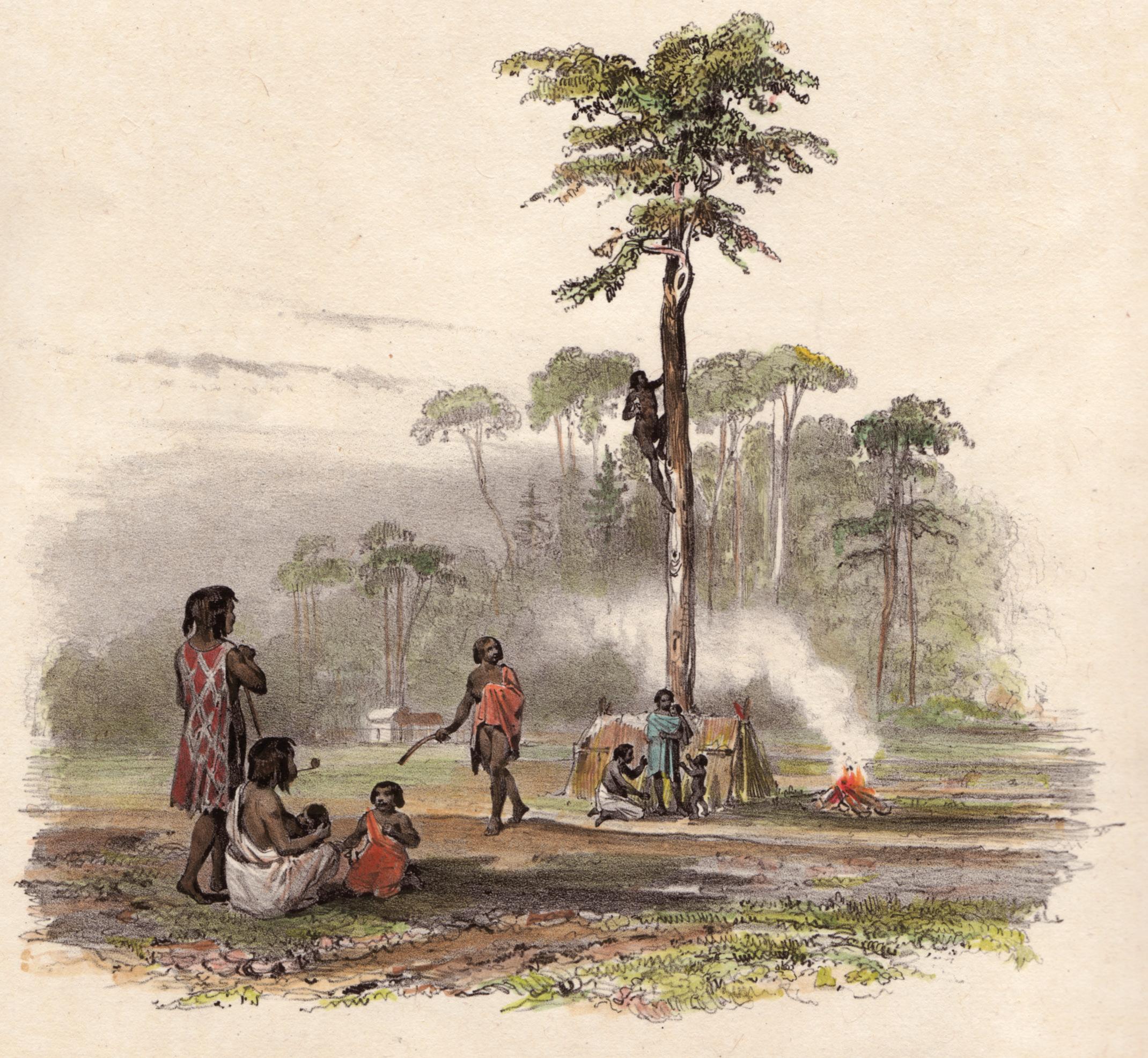HORDERN HOUSE
RARE BOOKS · MANUSCRIPTS · PAINT INGS
Picturing New South Wales



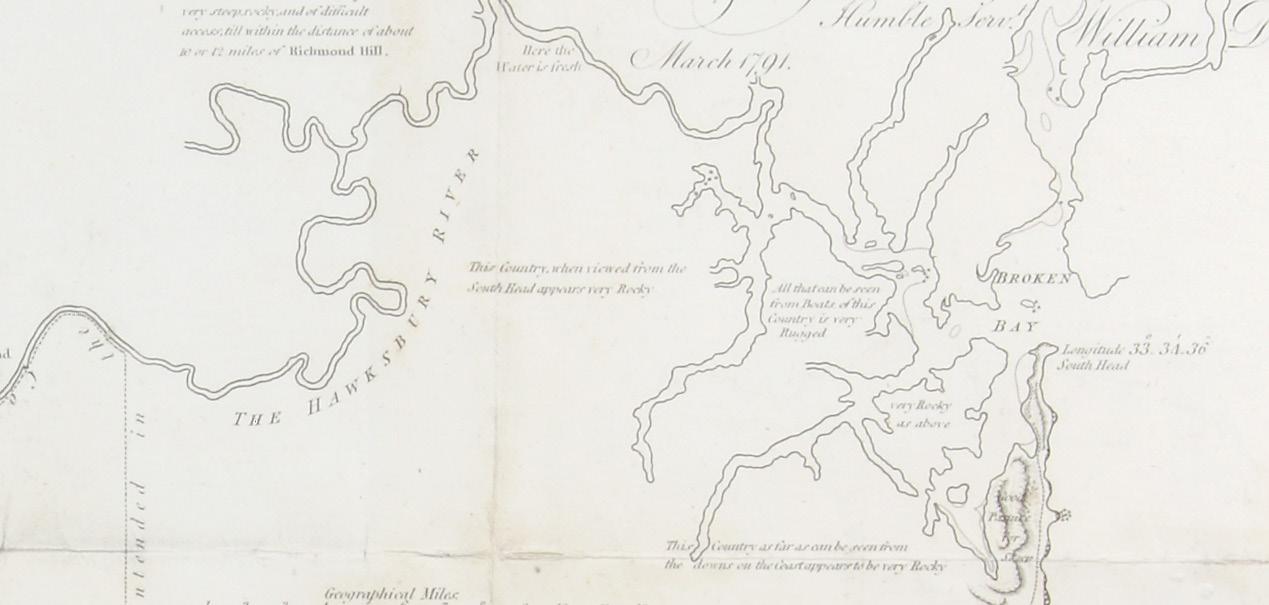
HORDERN HOUSE hordern.com
1. DAWES, William.
A Map of all those Parts of the Territory of New South Wales… Engraved chart measuring 415 x 548 mm. London, John Stockdale, 1792.
Important early map of the colony showing both coastal surveys and the extent of inland exploration attempted during the first three years of settlement. William Dawes is remembered as one of the most talented and humane officers of the First Fleet. A professional officer of the Royal Marines, Dawes volunteered for service in New South Wales, a decision in part motivated by a keen interest in the astronomy of the southern skies. He had already distinguished himself as an observer and astronomer, and came to New South Wales on the recommendation of the Astronomer Royal Nevil Maskelyne, charged with observation of a comet expected to arrive in 1788.
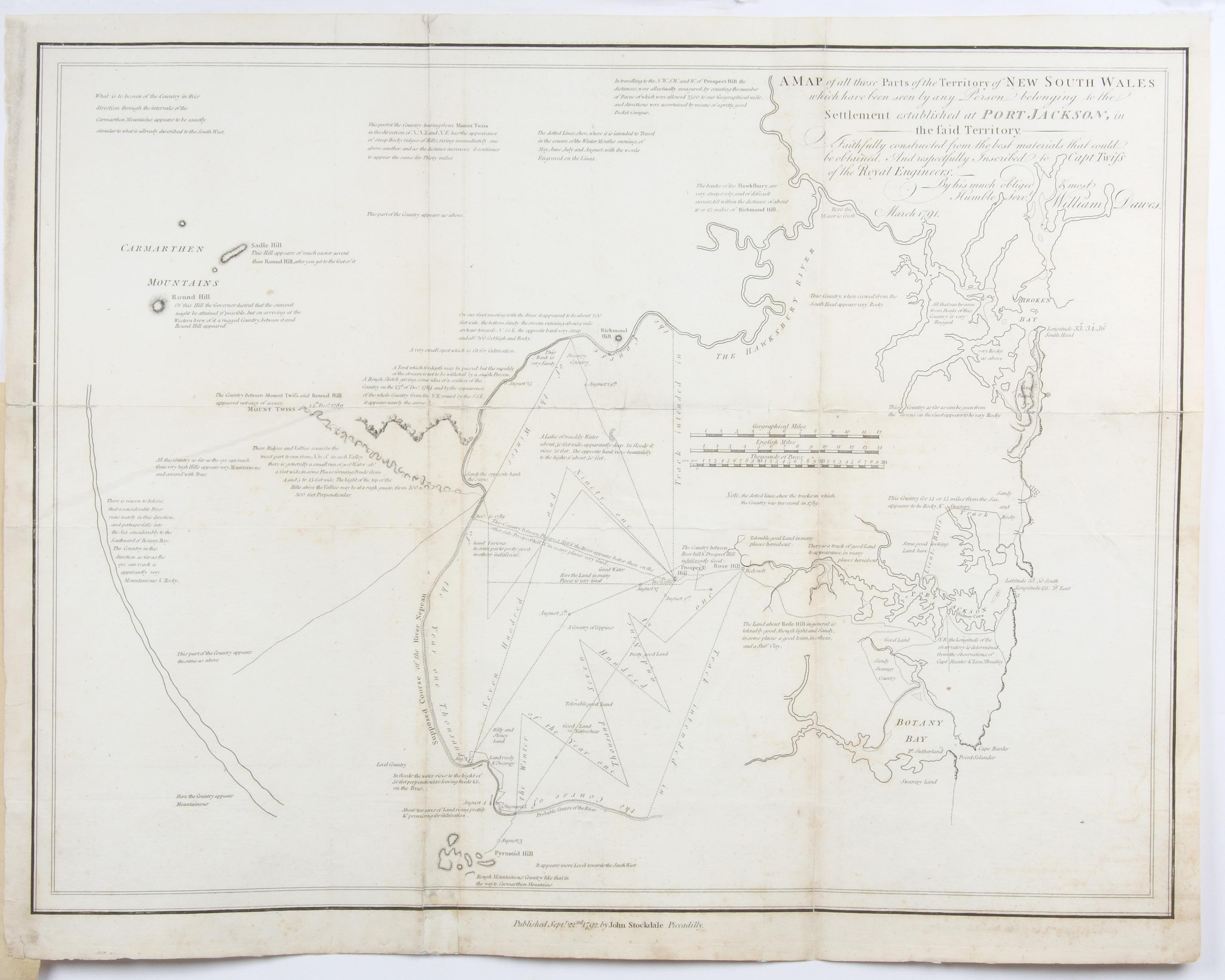
Ultimately, Dawes career in New South Wales was cut short by a conflict with Governor Arthur Phillip who ordered a violent reprisal against Aborigines who had wounded a convict serving as his gamekeeper. Dawes was an unwilling participant in the sad affair, and was critical of Phillip so that continued service in the colony became unworkable. Dawes later served as Governor of Sierra Leone and worked tirelessly against slavery in the region.
Dawes was active as an engineer, surveyor, and explorer. Much of his ambition is reflected in this map, marked with the course of the Hawkesbury-Nepean river system, the extent of the Cumberland plain, and mountains to the interior. Interestingly, this map is marked with the projected routes of several journeys intended for 1791, not all of which eventuated.
The map bears an engraved dedication from Dawes to Captain Twiss of the Royal Engineers dated March 1791, although it was not engraved and printed in London until September of the following year. It was included in John Hunter’s Historical Journal of the Transactions at Port Jackson, published by John Stockdale in 1793.
Clancy, ‘Mapping of Terra Australis’, p.143; Ferguson, 152; Perry & Prescott, ‘A Guide to Maps of Australia 1780-1830’, 1792.04; Tooley ‘Mapping of Australia’, p.237.
$2450 [4307537 at hordern.com] see description and illustrations at
Picturing New South Wales
HORDERN HOUSE hordern.com
2. FREYCINET, Louis de.
Colonie Anglaise de la Nouvelle-Galles du Sud…
Engraved chart, with inset captioned ‘Ile Van-Diemen 1822’, 310 x 240 mm (plate size). Paris, 1822.
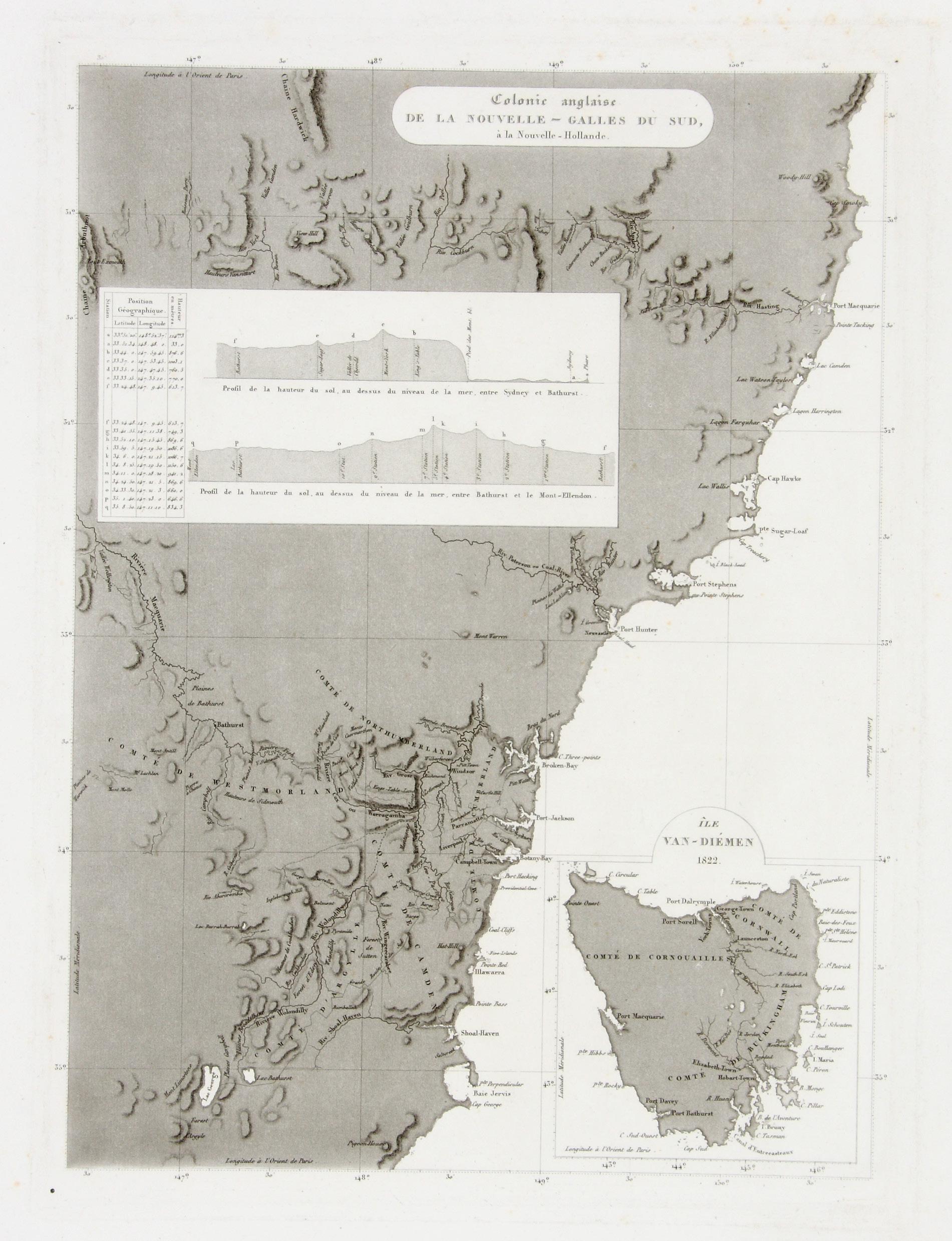
Intriguing map of New South Wales and Tasmania prepared by Louis de Freycinet for inclusion in the published account of his expedition titled Voyage autour du monde. This is an example of the first state without numerals. Of special interest is the inset detail of Van Die men’s Land, and two schematic elevation profiles (the first showing altitude from Sydney to Bathurst, the second from Bathurst to Mount Ellendon).
Freycinet is best remembered for his voyage to Australia and the South Pacific of 1817-1820, a pivotal French expedition that advanced scientific and geographical knowledge of the region. The care and detail devoted to the preparation of this map reflect to Freycinet’s considerable cartographic skill.
$3000 [4202807 at hordern.com] see description and illustrations at
Picturing New South Wales
HORDERN HOUSE hordern.com
3. FREYCINET, Louis de. Plan du Comté de Cumberland… Engraved chart; 495 x 340 mm. Paris, 1822.
Attractive cartographic rarity arising from the visit of Louis and Rose de Freycinet to Sydney in 1819. This map of the Cumberland plain is an example of a little-known first state (without plate number); it was prepared for inclusion in the official voyage account of the expedition. It reflects Freycinet’s innate skill as a map-maker and is filled with detail reflecting the extent to which the French commander and his officers travelled within the region (for example, three members of the expedition – Quoy, Pellion and Gaudichaud – were accompanied as far as Bathurst by William Lawson).
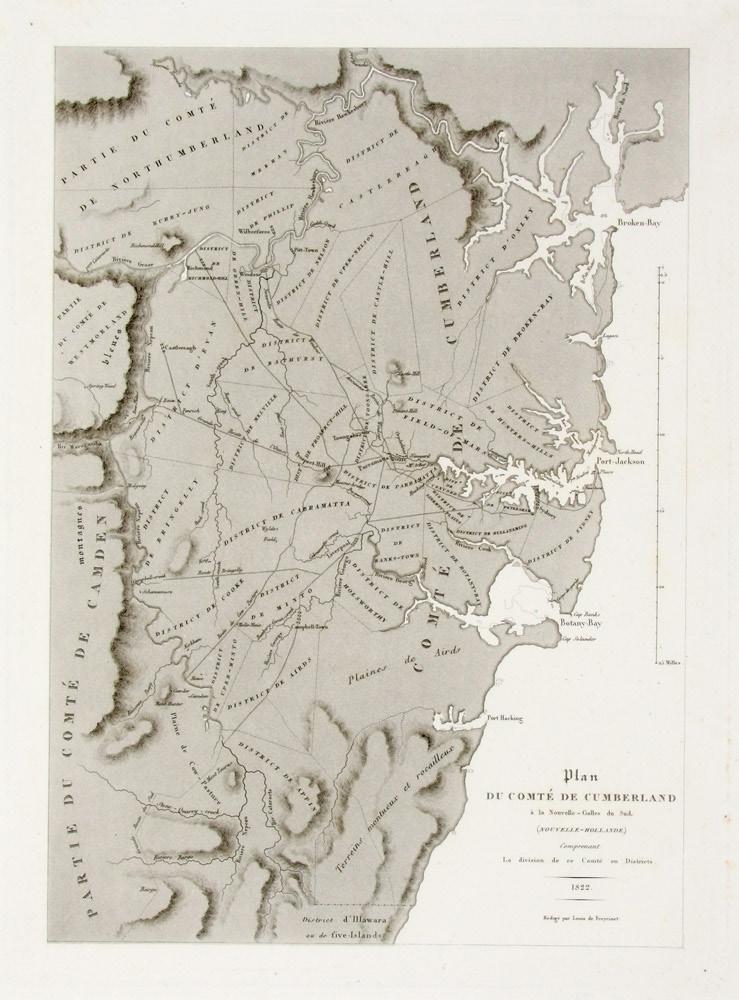
Freycinet and his wife enjoyed warm hospitality during their time in Sydney now that Britain and France. Free from suspicion, they were permitted to inspect the settlement unhindered, in contrast to his previous visit as an officer aboard the Baudin expedition during the Napoleonic Wars.
$2100 [3912490 at hordern.com] see description and illustrations at
Picturing New South Wales
HORDERN HOUSE hordern.com
4. FREYCINET, Louis de. Esquisse de la Ville de Sydney, Capitale des Colonies anglaises, à la Nouvelle-Hollande. Engraved map measuring 320 x 237 mm. (plate size), a very good copy, mounted and framed. Paris, Pillet Aine, 1825.
Detailed and finely engraved map of the budding settlement at Sydney Cove, from the official published account of the Uranie voyage of 1817-1820 to Australia and the Pacific commanded by Louis de Freycinet. The French took considerable interest in the penal colony at Port Jackson, and Freycinet was astounded by the growth of the settlement and the quality of the architecture he encountered, having previously visited Sydney Cove as an officer on the Baudin voyage of 1800-1804. The detail of this map reflects the curiosity of the French visitors who enjoyed warm hospitality now that Britain and France were at peace and could inspect the settlement unhindered.
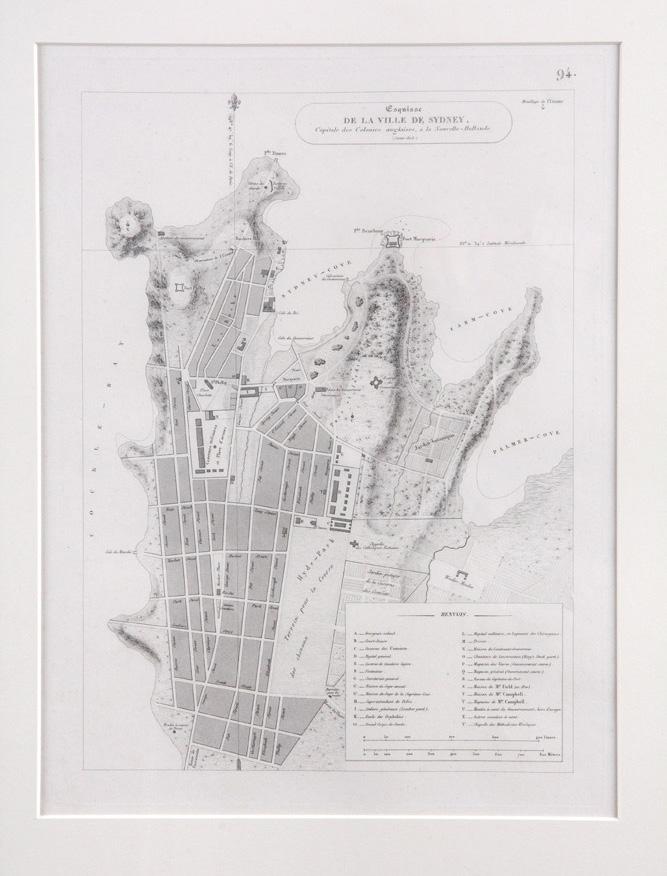
The map details a number of landmarks that remain familiar to this day, including Hyde Park, Woolloomooloo and the Botanical Gardens. Indeed, the street plan engraved here remains largely unchanged as the central business district of Sydney today.
The map is a remarkable visual record of Sydney. $2850 [4504981 at hordern.com] see description and illustrations at
Picturing New South Wales
HORDERN HOUSE hordern.com
5. HUNTER, Captain John and William DAWES. Sketch of Sydney Cove, Port Jackson… Engraved map, 530 x 470 mm. (sheet size); mounted. London, J. Stockdale, 1789.
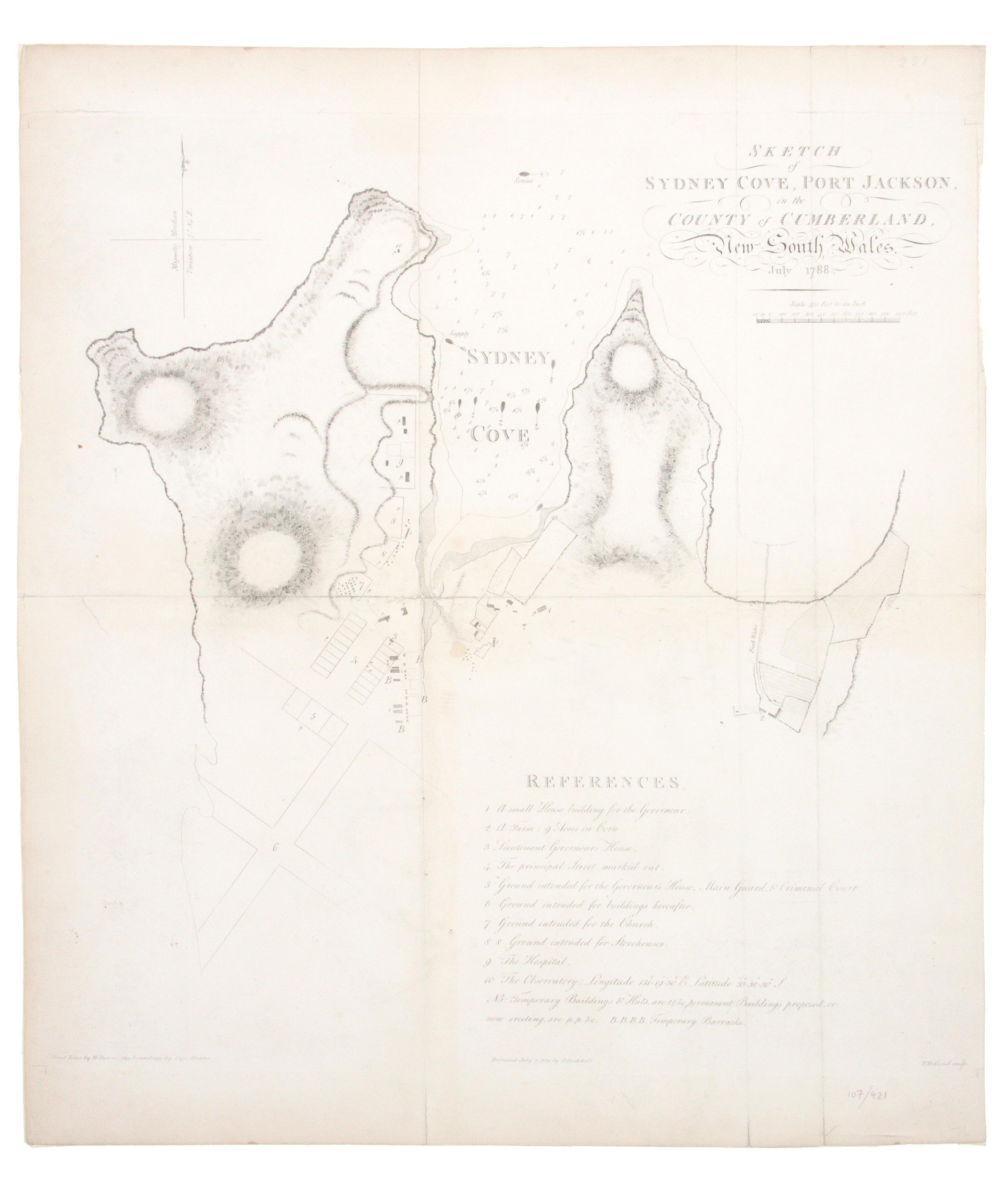
The first printed map of the settlement at Sydney Cove with fascinating details of the colony in its earliest days. It was engraved for the 1789 London publication of Phillip’s Voyage to Botany Bay. This highly significant map details the topography of the first settlement, as well as recording soundings of the Cove taken by Captain John Hunter; the coastal survey was completed by William Dawes, surveyor and officer of the Marines.
The map records numerous fascinating details, including the location of Government House and its grounds, the barracks, and the small observatory. ‘Shows Sydney Cove with soundings and seven of the First Fleet ships at anchor; Sirius as guard ship at the mouth of the cove. It shows the positions of temporary buildings and those of permanent buildings under construction with the areas allotted for farms. The farm with nine acres of corn is shown at the head of Farm Cove. A table of references identifies buildings and plots of land’ (Perry & Prescott, p. 52).
Ferguson, 47 (full account of Phillip); Perry & Prescott, ‘A Guide to Maps of Australia 1780-1830’, 1789.07.
$2850 [4107421 at hordern.com] see description and illustrations at
Picturing New South Wales
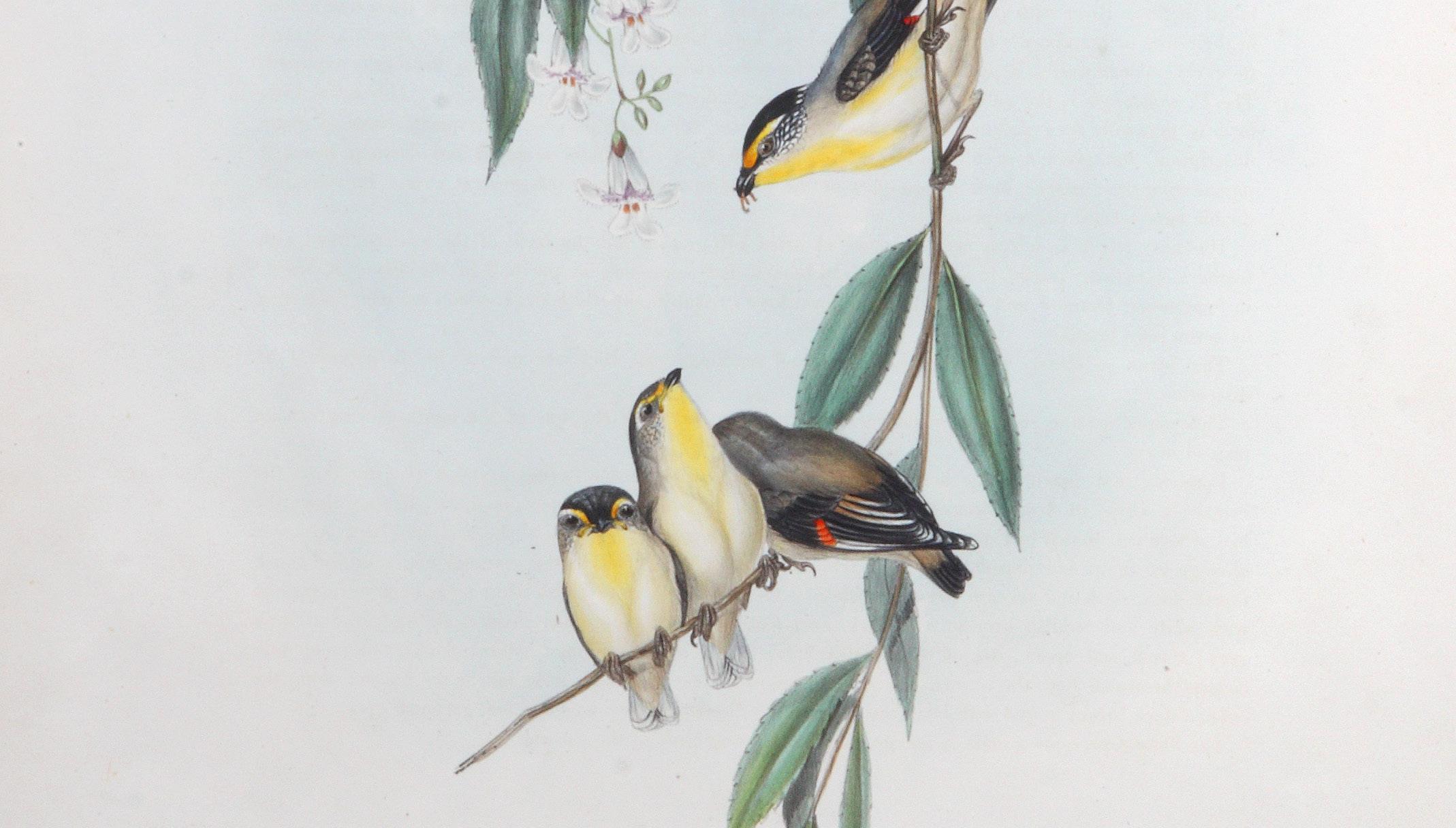
HORDERN HOUSE hordern.com
6. EDWARDS, S. (after). Great Brown King Fisher.
Original engraving, 260 x 190 mm. very good condition, mounted. London, John Stockdale, 1789.
Fine impression of the so-called “Great Brown Kings Fisher” or Laughing Kookaburra.
This engraving is taken from Governor Phillip’s Voyage of Governor Phillip to Botany Bay published by Stockdale in late 1789. Interestingly, and probably because early field notes from collectors in New South Wales were few and far between, the distinctive laugh of the kookaburra is not discussed in the text, which simply comments: ‘This species inhabits various places in the South Seas, being pretty common at New Guinea; but the specimen from which our figure was taken, was sent from Port Jackson in South Wales (sic), where, likewise, it is not unfrequently met with. We believe it has not yet been figured in any British work.’ The reference to New Guinea is an error, related to the earliest publication of any depiction of the kookaburra in Sonnerat’s account of a voyage to New Guinea. Sonnerat was given that bird by Sir Joseph Banks at the Cape of Good Hope as he returned on the Endeavour. This is how the bird acquired its incorrect but lasting scientific name Dacelo novaguineae.
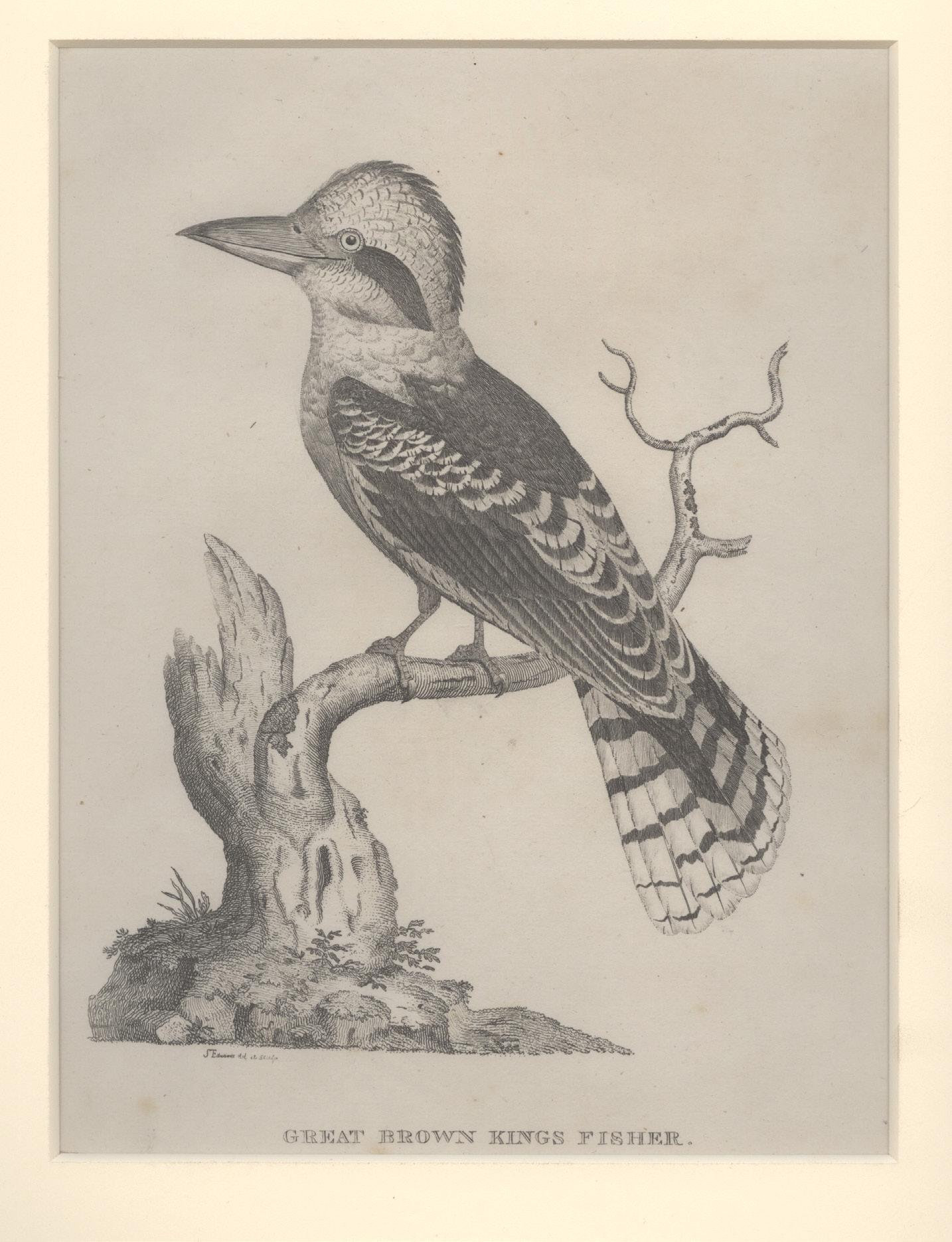
$450 [2908539 at hordern.com] see description and illustrations at
Picturing New South Wales
HORDERN HOUSE hordern.com
7. GOULD, John & RICHTER, H.C.
Orange-fronted Epthianura (Epthianura Aurifrons). Hand-coloured lithograph (510 x 350 mm), with letter-press text London, published by the Author, 1840-1869
Delicately hand coloured original lithographic plate from Gould’s most famous work, Birds of Australia, one of the great natural history publications of all time.
Known more commonly today as the Orange Chat, Epthianura Aurifronis was noted by Gould at the time to be of greatest rarity. As both a dedicated ornithologist and entrepreneurial pub lisher, Gould’s lasting contribution to was his lavish series of colour plate folios. Indeed, his biographer Allan McEvey asserts that ‘nothing can detract from this gargantuan achievement that ranks highly in the world’s ornithology’ (John Gould’s Contribution to British Art, 1973).
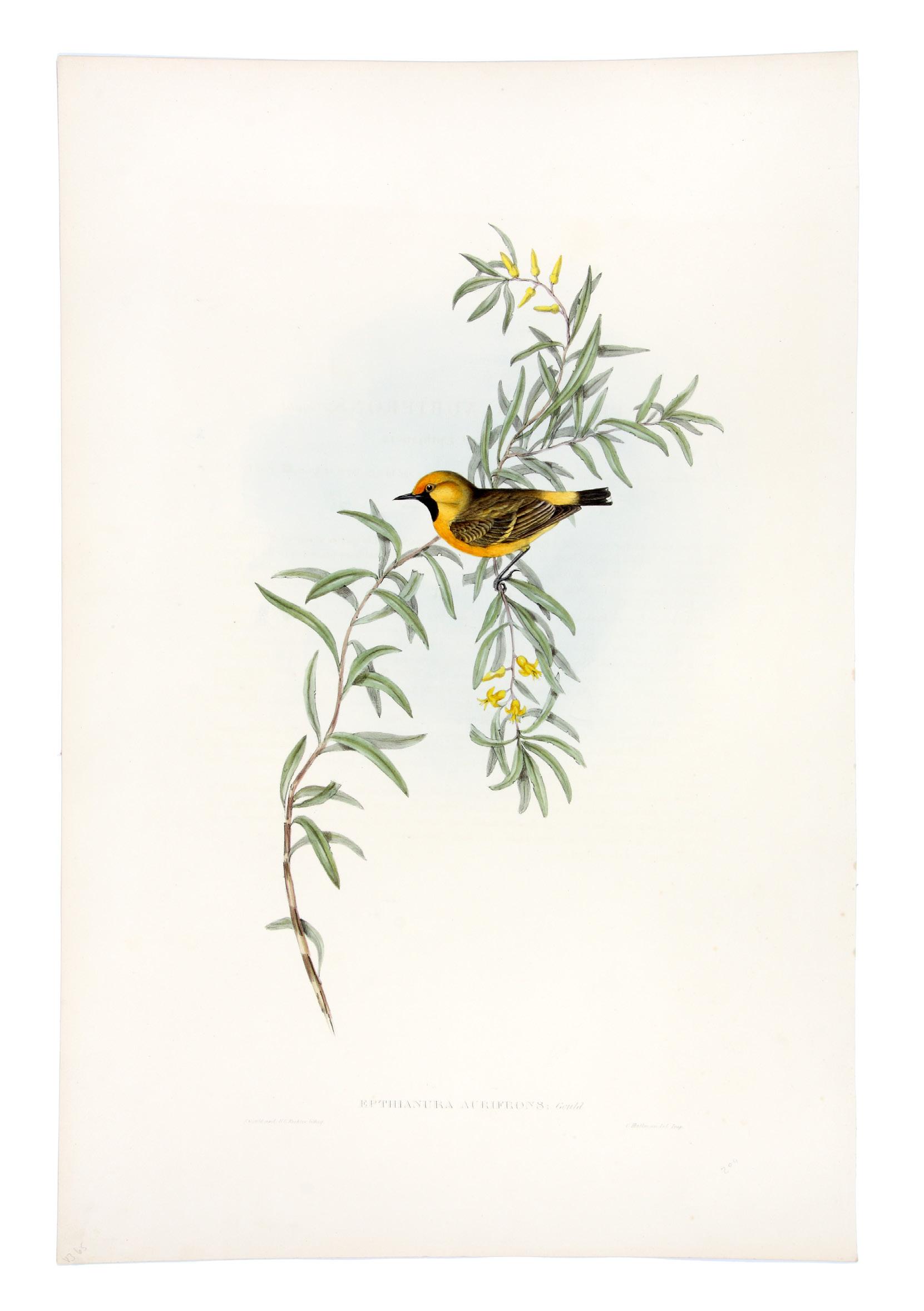
Taken from Gould’s description “This… must be regarded as a bird of the greatest rarity… I wish to direct the attention of residents in New South Wales (to)… Gammon Plains in which it was seen by Lieut. Breton”.
$1250 [4007933 at hordern.com] see description and illustrations at
Picturing New South Wales
HORDERN HOUSE hordern.com
FROM
8. GOULD, John & RICHTER, H.C.
Sombre Gallinule (Gallinula Tenebrosa) Hand-coloured lithograph (360 x 540 mm.), with letter-press text. London, The Author 1840-1869.
The Sombre Gallinule was encountered by Gould in the upper Hunter and also on the banks of the Murry in South Australia. An original hand coloured lithograph plate from Gould’s most famous work, Birds of Australia.
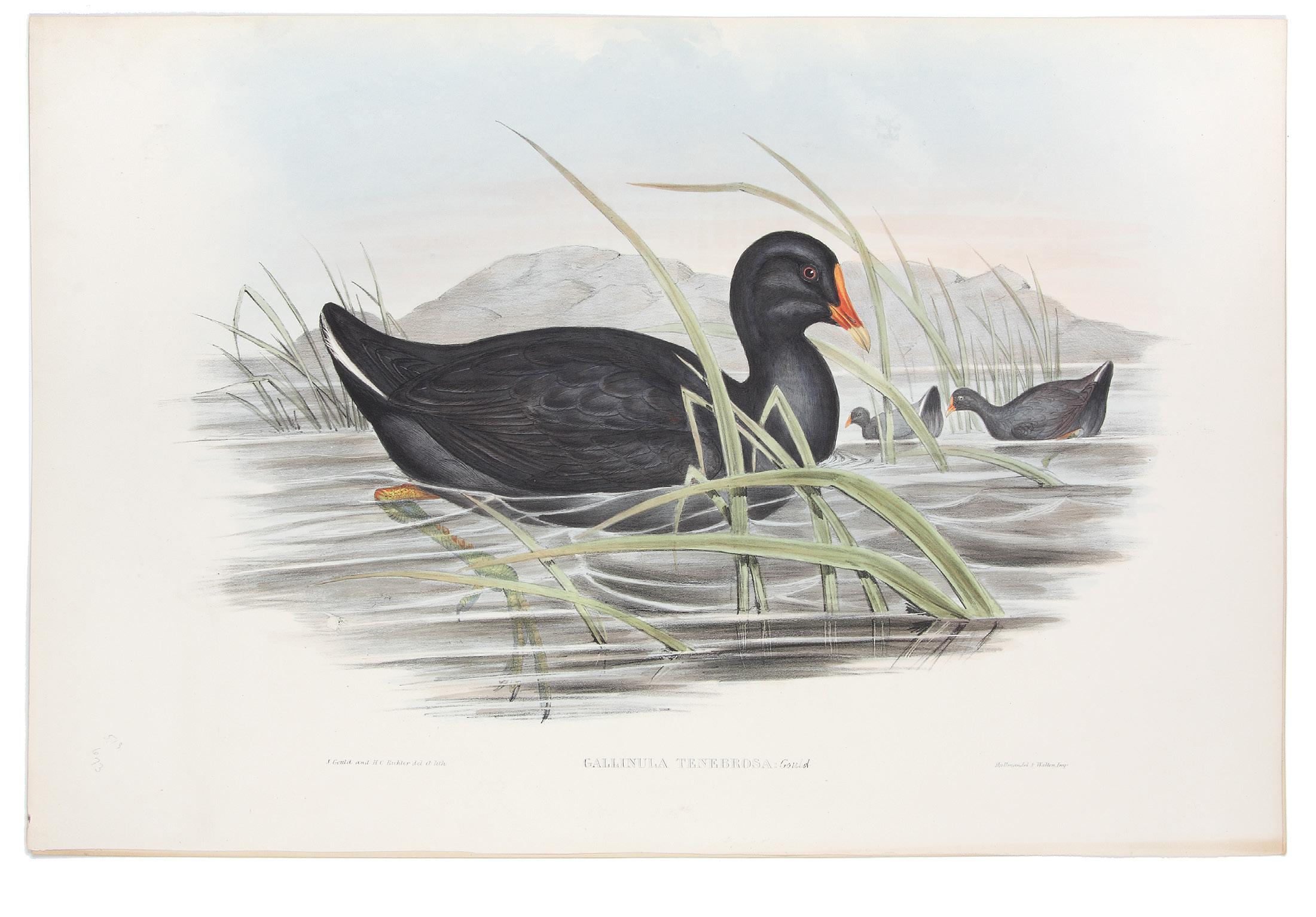
Birds of Australia is a great tribute to Australia and was one of Gould’s most successful projects. ‘Only 250 copies have been printed, and the drawings have been effaced from stones; of these, 180 were subscribed for, the remaining seventy the author proposes to issue upon the original terms, with the exception, that five or more parts shall be delivered in the course of each year instead of four; the delivery to commence on the 1st of January 1849’ (Prospectus).
$1250 [4312694 at hordern.com] see description and illustrations at
Picturing New South Wales
HORDERN HOUSE hordern.com
9. GOULD, John & RICHTER, H.C. Striated Pardalote (Pardalotus Striatus). Hand-coloured lithograph (510 x 350 mm.), with letter-press text. London, The Author 1840-1869. The original hand coloured lithographic plate from Gould’s most famous work, Birds of Australia of the male, female and three young Pardalotus Striatus, found in New South Wales and Western Australia at Swan River. Gould notes “this active little bird is generally seen seeking insects among the leaves… and gives a decided preference to the “Eucalyptia”. $1450 [4007934 at hordern.com] see description and illustrations at
Picturing New South Wales
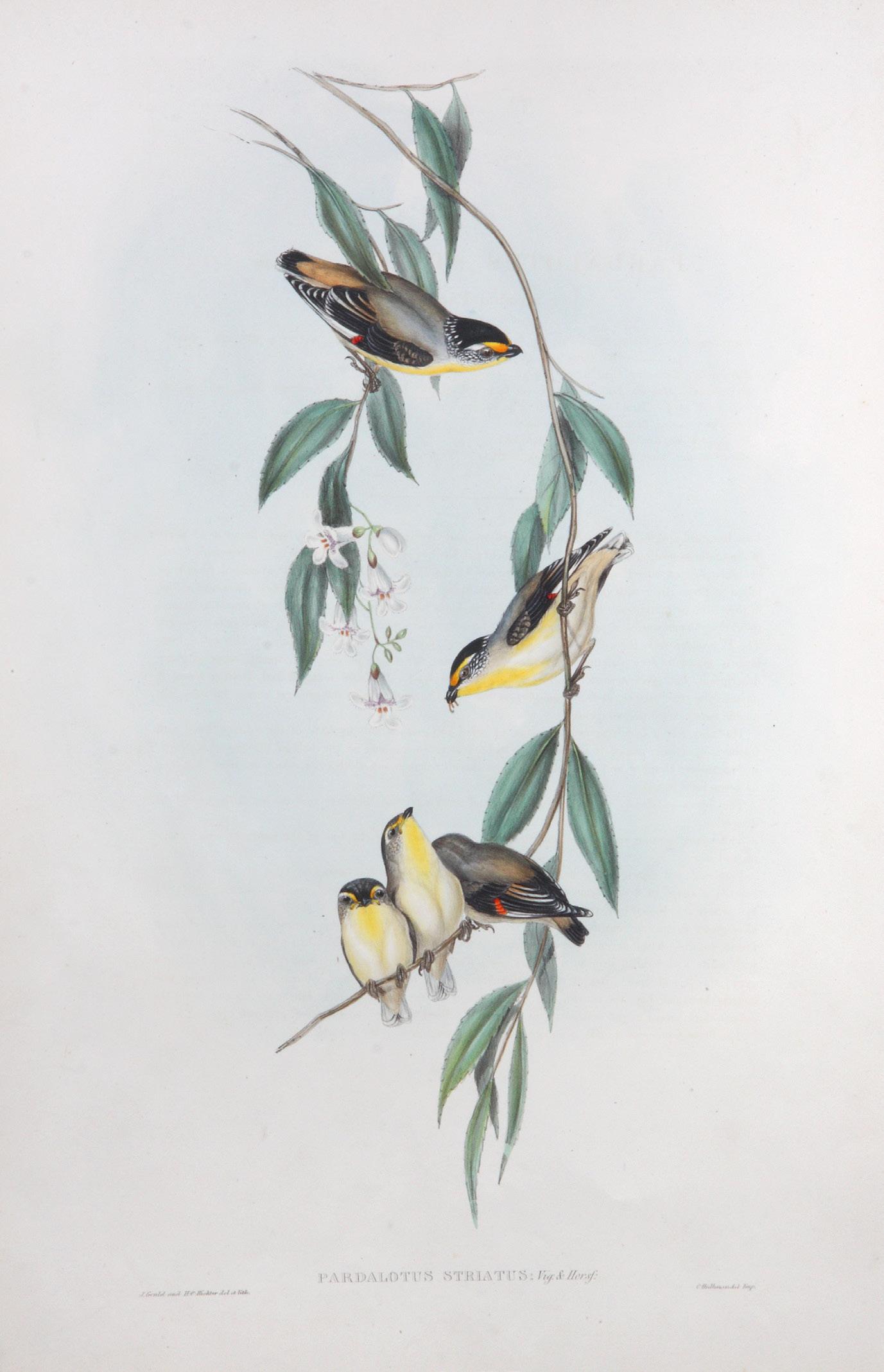
“THIS ACTIVE LITTLE BIRD IS GENERALLY SEEN SEEKING INSECTS AMONG THE LEAVES...”
HORDERN HOUSE hordern.com
The Badger, the Opossum, the Kangaroo…
13.5 x 21 cm London, [Printed for the proprietor by W. Lewis, No. 2, Paternoster-Row; and sold by Champante and Whitrow], July 1, 1804.
A curious and interesting hand-coloured engraving from An universal system of natural history including the natural history of man (1794-1810). Although the engraving is signed J. Pass after Seba, the kangaroo derives from the work of Sarah Stone and her illustration in John White’s Journal of a Voyage to New South Wales (1790), with the same posture and composi tion. White notes that “In its mode of propagation [the kangaroo] very probably comes nearer to the Opossum than any other animal” (Journal, 272), which makes the group in this engraving (with the opossum and her baby) particularly striking.
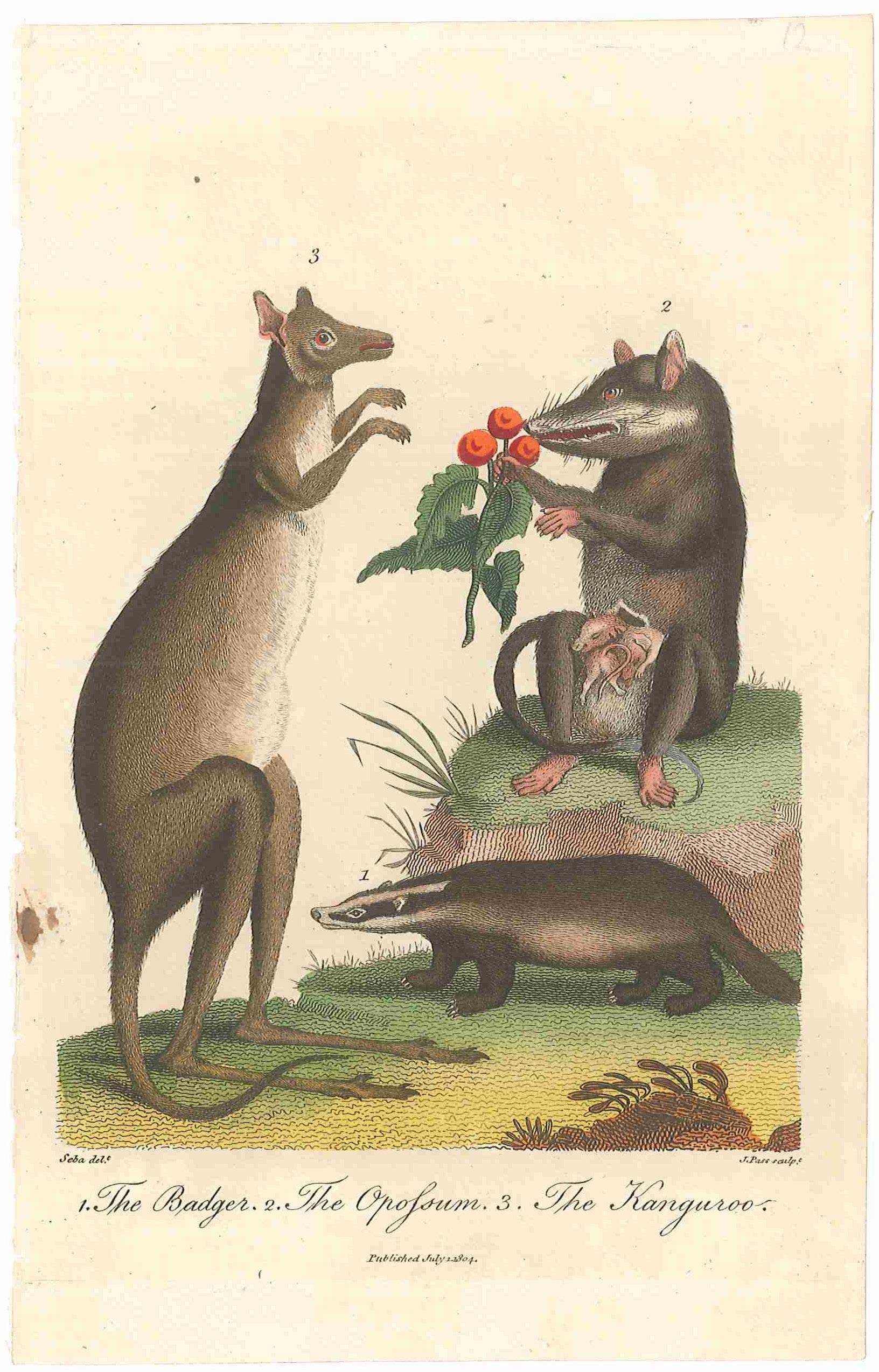
The reference to Seba may be to suggest a connection with the style of the famous but much earlier Albertus Seba (1665-1736) who formed a landmark collection of specimens and one of the most important natural history collections of the 18th century. The four volume catalogue for his collection began in 1725 and was not completed until thirty years after his death. A recent work notes that “Seba's scenic illustrations, often mixing plants and animals in a single plate, were unusual even for the time. Many of the stranger and more peculiar creatures from Seba's collection, some of which are now extinct, were as curious to those in Seba's day as they are to us now”. Similarly, the grouping in this engraving in the manner of Seba assembles animals and plants in landscape, foregrounding the highly curious “Kanguroo”.
Soulsby 129, 130 and 130a
$325 [4505070 at hordern.com] see description and illustrations at
Picturing New South Wales
hordern.com
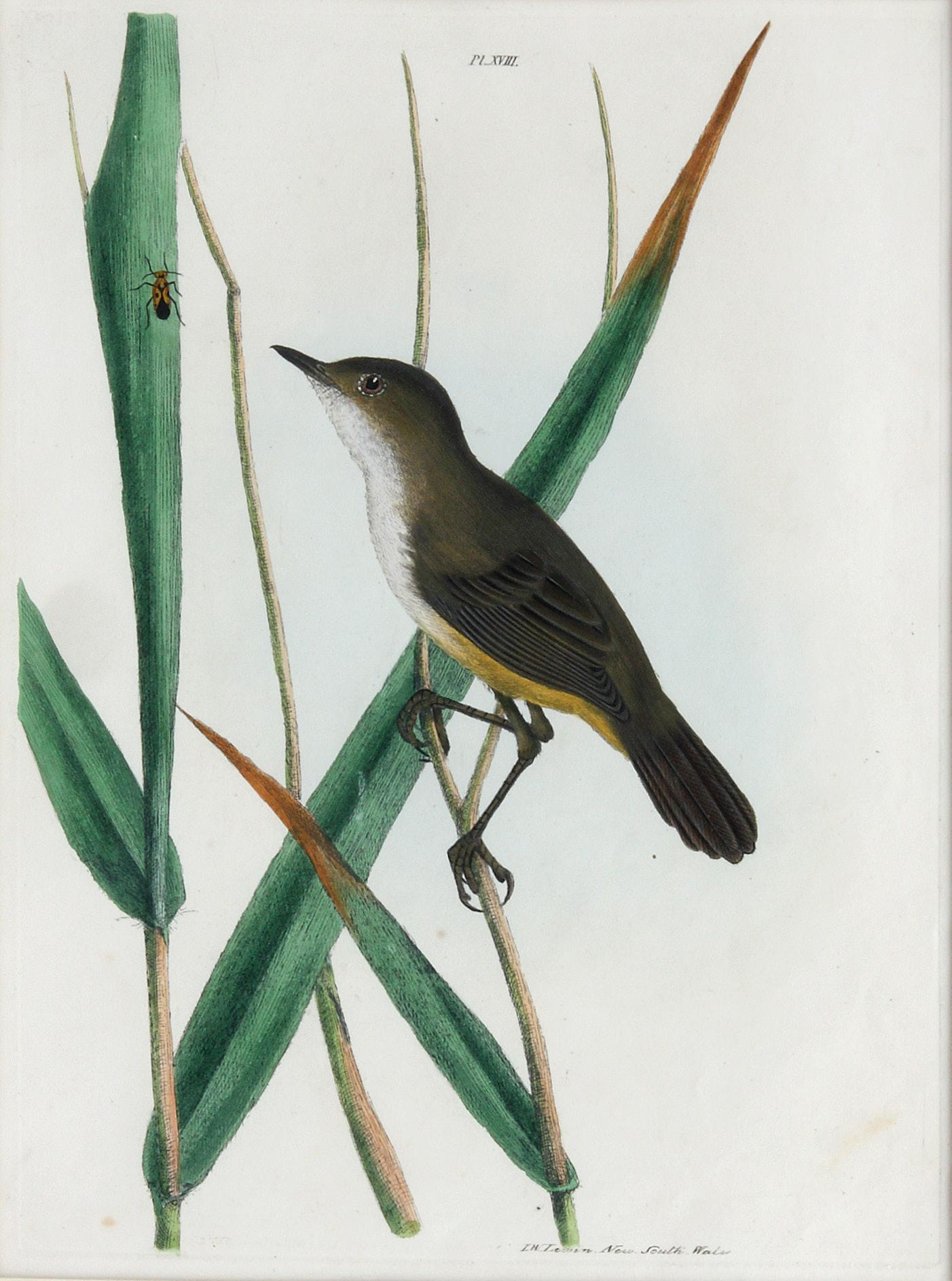
Handcoloured engraving, 289 x210mm.; mounted. London, J.H. Bohte, 1822.
The Reed Warbler is an interesting bird, found down Eastern Australia to Victoria and Tasma nia, but coming and going mysteriously in the southern parts of its habitat. Besides being a migrant, the Reed Warbler, as its name indicates, is a merry and cheerful songster, not only by day but by night, its song being quite canary-like. The bird’s habitat is the sedgy sides of rivers and reeds and rushes of swamps, you cannot always see the birds in such secluded areas, but their presence or arrival can always be ascertained by hearing their loud merry warbles.
John Lewin was Australia’s first professional artist, he arrived in the colony in 1800 and es tablished himself as the first natural history artist. He is best remembered through the superb paintings and books he published on Australian ornithology and entomology.
As the catalogue of the Wettenhall Library pointed out, “The bibliographical and historical importance of Lewin has been emphasised in recent years, but Lewin the naturalist has been somewhat neglected. Although his illustrations are in the style of the eighteenth century and predate the draughtsmanship, finesse and varied palette developed by the great nineteenthcentury illustrators such as Lear, Wolf and Keulemans, they are highly competent and show the mind of an excellent observer. Lewin’s birds are correct; the feather detail, legs, particularly the positioning of the toes, posture of the bird, the understanding of male and female plumage, the interactions between male and female (in four plates the male is singing and displaying to the female) are accurate and show a keen observer at work. The other important detail in Lewin’s illustrations are the plants: they demonstrate an observer who is familiar with his subject’s habitat and life-history.”
After Lewin’s death in 1819, his widow Anna returned to England, where she set about pro ducing a new edition of her husband’s beautiful book, adding an extra eight plates for the new edition, this plate being plate XVIII from Lewin’s A Natural History of the Birds of New South Wales published in 1822.
$3500 [4111695 at hordern.com] see description and illustrations at
HORDERN HOUSE hordern.com
12. LEWIN, John William. White-eared Honey-eater. Engraved plate with contemporary handcolouring, 280 x210mm. London, J.H. Bohte, 1838.
The graceful Sydney honey-eater engraved by Australia’s first professional artist John Lewin, who arrived in the colony in 1800 and established himself as our first natural history illustra tor.
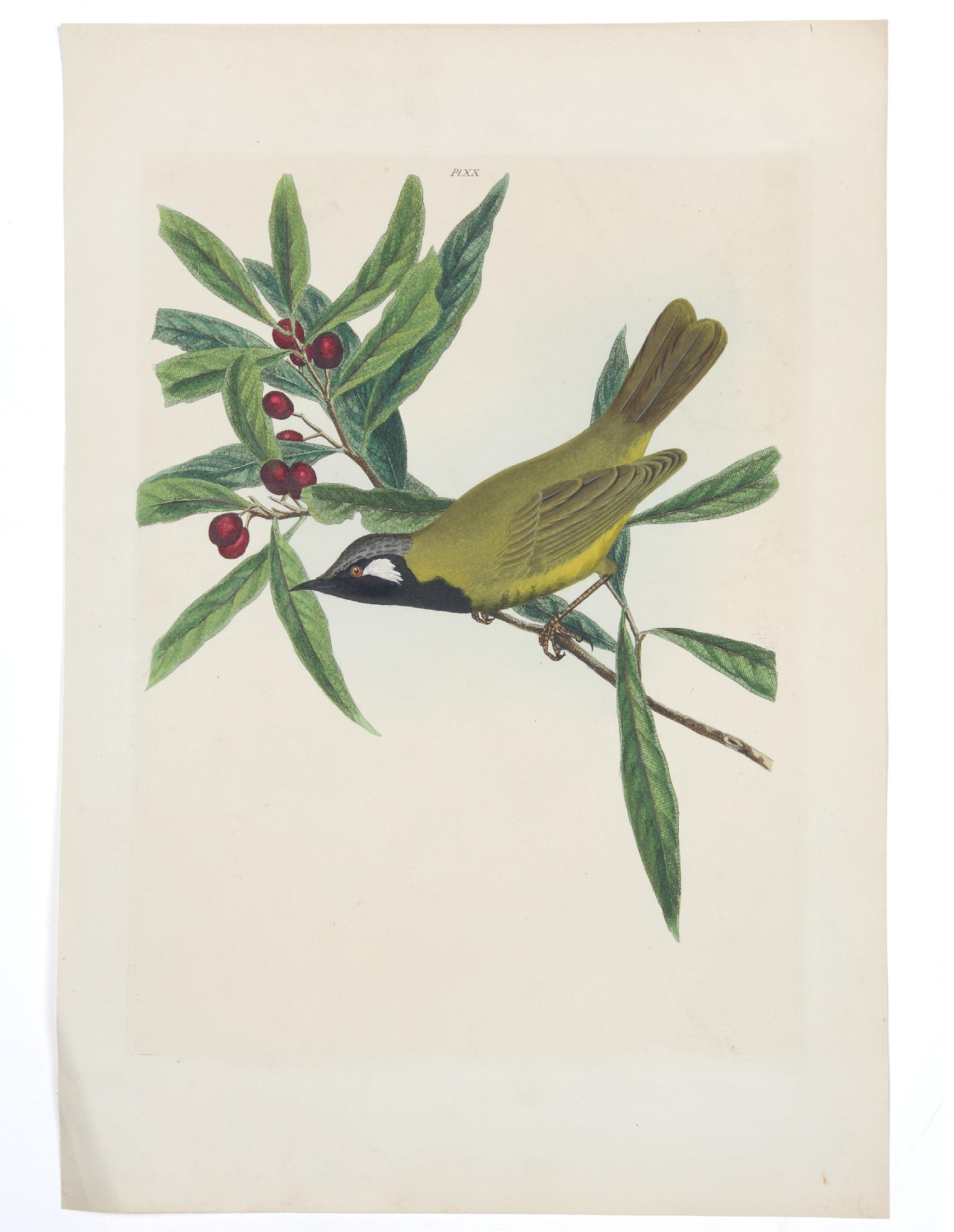
Aside from being Australia’s first natural history publisher, Lewin was an intrinsically skilled naturalist: ‘The bibliographical and historical importance of Lewin has been emphasised in re cent years, but Lewin the naturalist has been somewhat neglected…[his renditions] are highly competent and show the mind of an excellent observer. Lewin’s birds are correct; the feather detail, legs, particularly the positioning of the toes, posture of the bird, the understanding of male and female plumage, the interactions between male and female are accurate and show a keen observer at work. The other important detail in Lewin’s illustrations are the plants: they demonstrate an observer who is familiar with his subject’s habitat and life-history’ (Hordern House, Wettenhall catalogue).
After Lewin’s death in 1819, his widow Anna returned to England where she produced a new edition of her husband’s pivotal book, A Natural History of the Birds of New South Wales. This was published in 1822, a further edition appeared in 1838.
$2500 [4312700 at hordern.com] see description and illustrations at
Picturing New South Wales
HORDERN HOUSE hordern.com
13. [OPOSSUM] LATHAM, John (after). Vulpine Opossum.
Original engraving, 260 x 190 mm. Mounted. London, John Stockdale, 31 August, 1789. Marvellous image of the “Vulpine Opossum” after an original drawing by Latham.
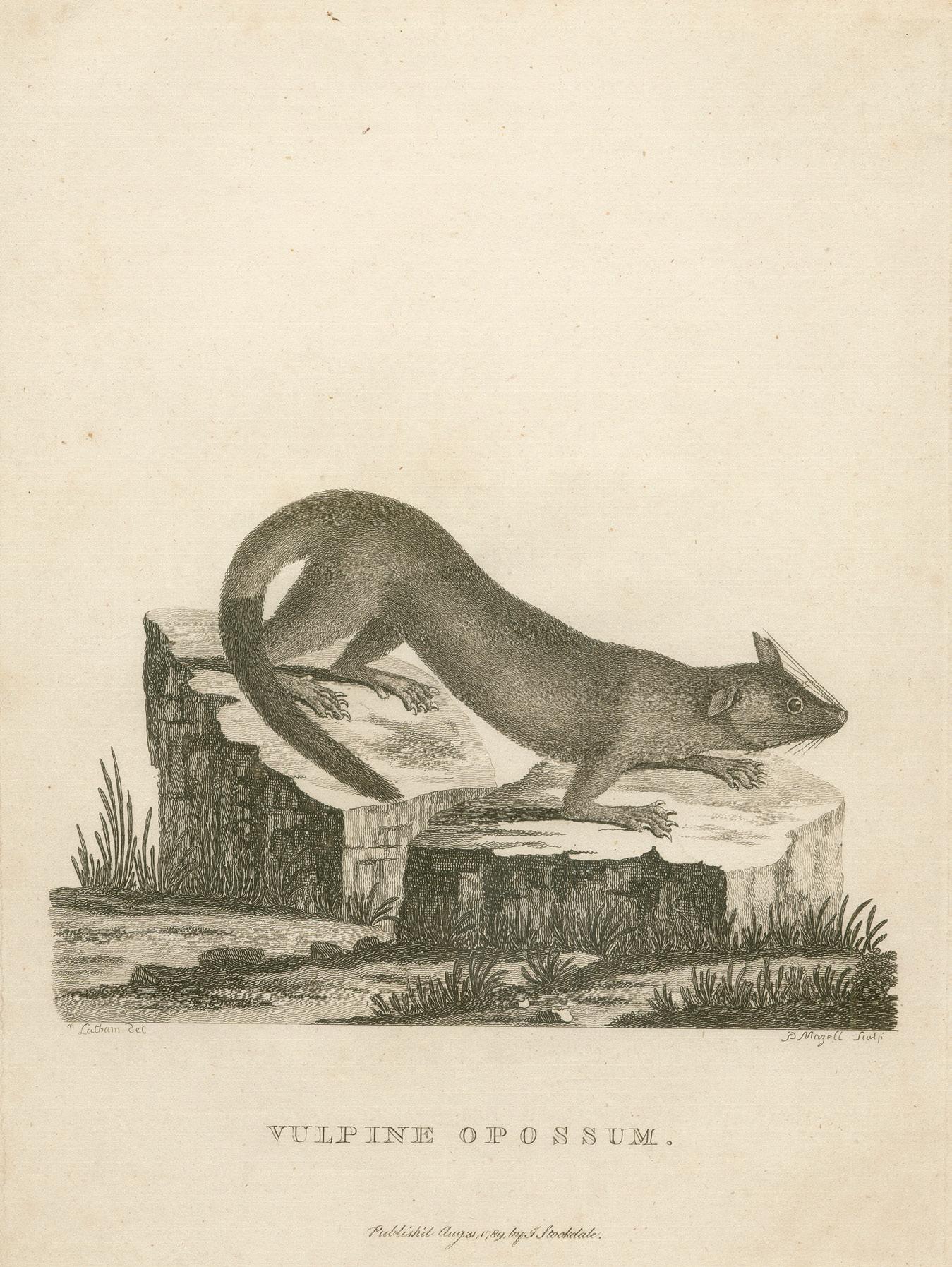
This print is taken from Governor Phillip’s Voyage of Governor Phillip to Botany Bay pub lished by Stockdale in late 1789. Stockdale’s publication was a great success going through several editions, but one of the remarkably little known aspects of the publication is the fact that a contemporary advertisement in the London Chronicle (22 October 1789) not only promoted the forthcoming publication, but also announced that ‘Most of the non-descript quadrupeds, reptiles, birds, fish, &c from which the drawings are taken may be seen at the Publisher’s.’ This was designed to entice possible subscribers into visiting the store to see the amazing curiosities: Debrett, the publisher of John White’s rival quarto, did the same with the specimens sent home by White.
$550 [2908538 at hordern.com] see description and illustrations at
Picturing New South Wales
HORDERN HOUSE hordern.com
14. SMITH, Worthington George.
Blandfordia Flammea Elegans (Christmas Bells).
Hand coloured lithograph, 285 x 240mm, mounted and framed; artist’s proof with notes to the colourist. London, litho graphed by the artist, c.1860.
A lovely image of Christmas Bells, by the natural history artist W.G. Smith, lithographed by the artist and here in an unique proof version before letters, beautifully hand-coloured by him with detailed notes for the colourist. The proof is addressed to the publishers of The Floral Magazine, Reeve and Company in Covent Garden, and the image appeared in the first issue of gf the periodical published in 1861 (number 134 in the top right of the lithograph), printed by V. Brooks for the colour printing specialists Day and Son.
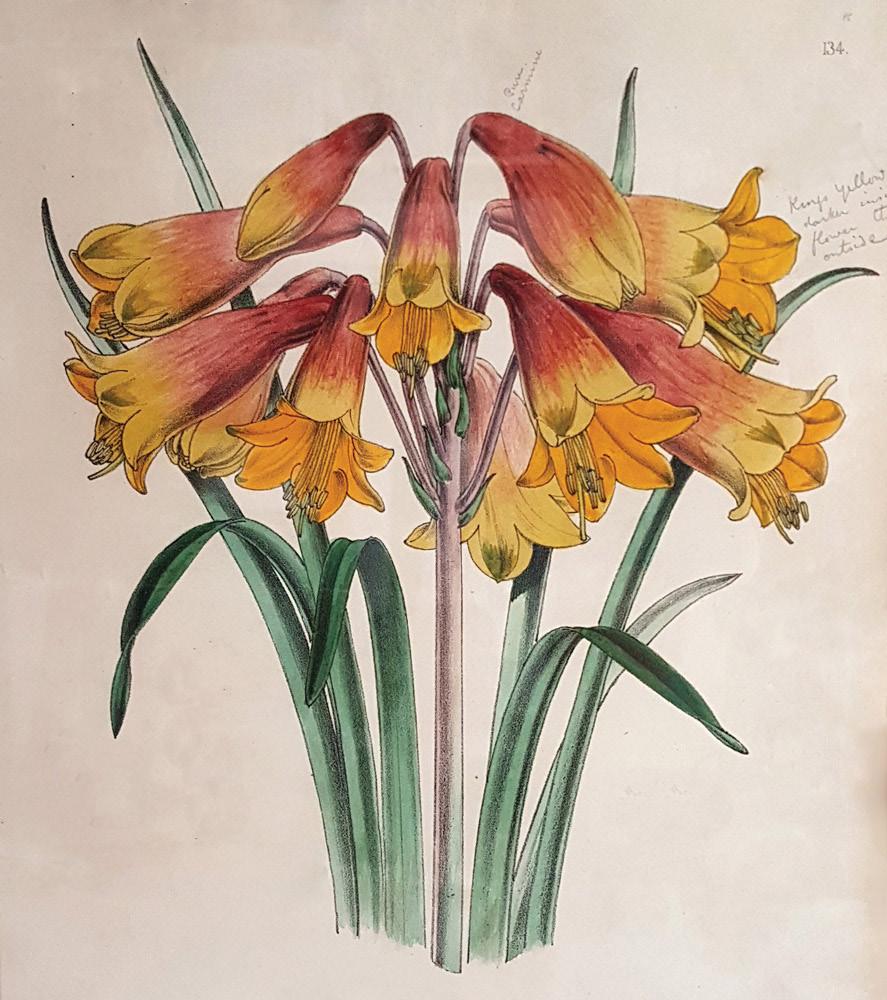
Blandfordia Grandiflora (also known as flammea), now commonly known as the Christmas Bells, was named by the prodigious Robert Brown in 1810 from specimens collected in the Hunter River. As with many Australian natives, no sooner had specimens been sent to Eng land than the demand from nurserymen for seed propagation ensued. In 1854, Curtis’ Botanical Magazine sang the praises of what was “unquestionably the most beautiful and distinct of all” the specimens of Blandfordia. “The root was brought from the Sydney Botanic Garden (under the name of B.grandiflora) four years ago by Lord Walter Butler, to the Countess of Carrick, who presented it to Dr. Mackay. It appears to have been introduced to Sydney from Hunter’s River…”.
Worthington Smith (1835-1917) was a natural history artist of some note, who later turned his hand to illustrating archaeological subjects. He was also a considerable expert on finishing over 250 papers in that field.
Australian Plants online
$3500 [4504686 at hordern.com] see description and illustrations at
Picturing New South Wales
HORDERN HOUSE hordern.com
15. [THOMAS WATLING] DAYES, Edward. Mountain Eagle of New South Wales. Handcoloured engraving, 260 x 200 mm. mounted London, Cadell and Davies, 1802.
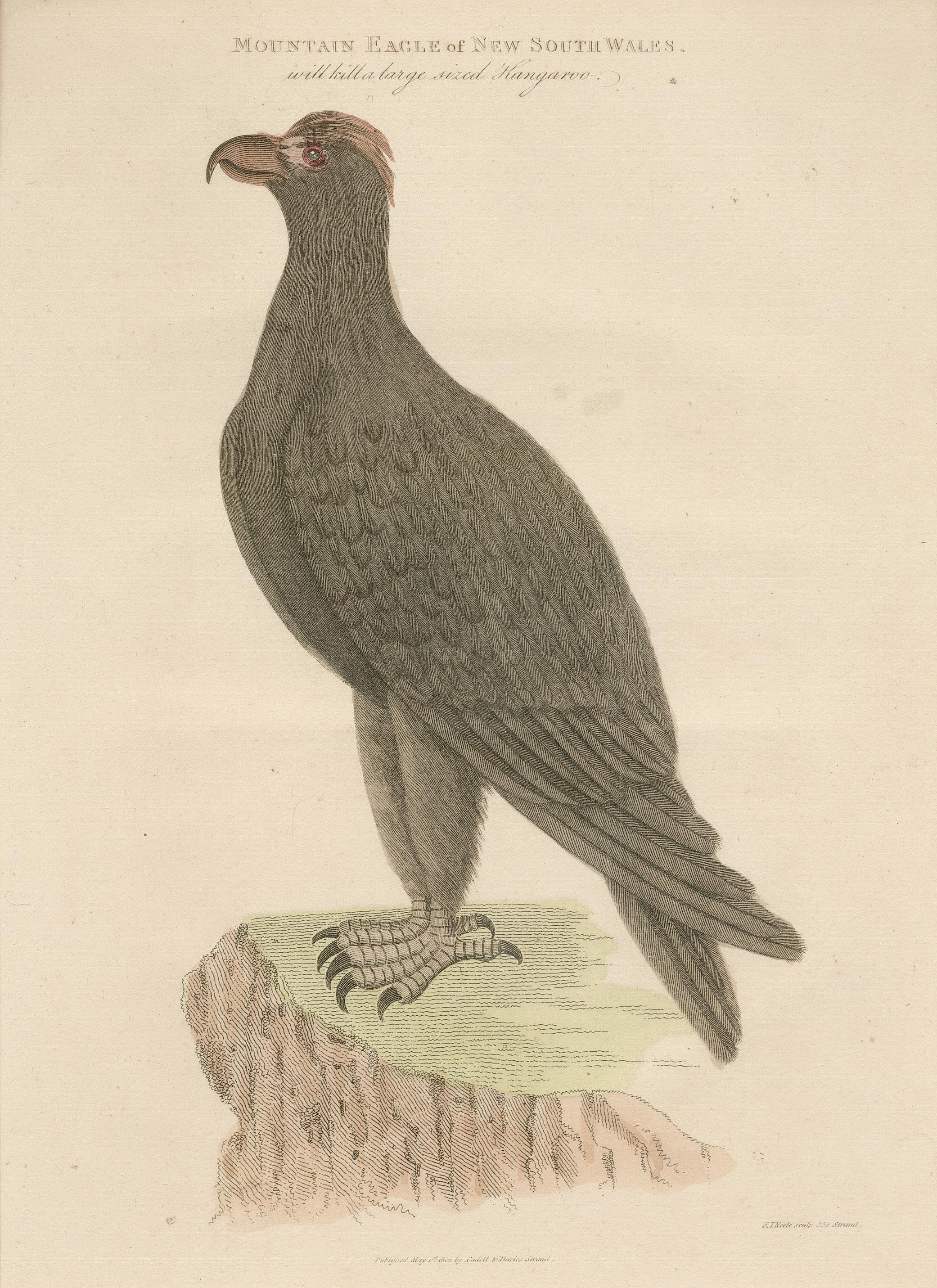
A fine original hand coloured engraving of the splendid mountain eagle of New South Wales. The wedge-tailed eagle, Australia’s largest bird of prey has a wingspan of up to 2.5m.
This engraving was produced in London by Edward Dayes, almost certainly from sketches made by the convict artist Thomas Watling. It was included in the last of the First Fleet jour nals to be published, the earliest history of Australia as an English colony.
David Collins (1756-1810), deputy judge advocate and lieutenant-governor the longest serving of any of the published First-Fleeters provided the most thorough day-to-day account of life in the colony, and his notes and descriptions of aboriginal life are the best of any of his contemporaries.
$650 [2908535 at hordern.com] see description and illustrations at
Picturing New South Wales
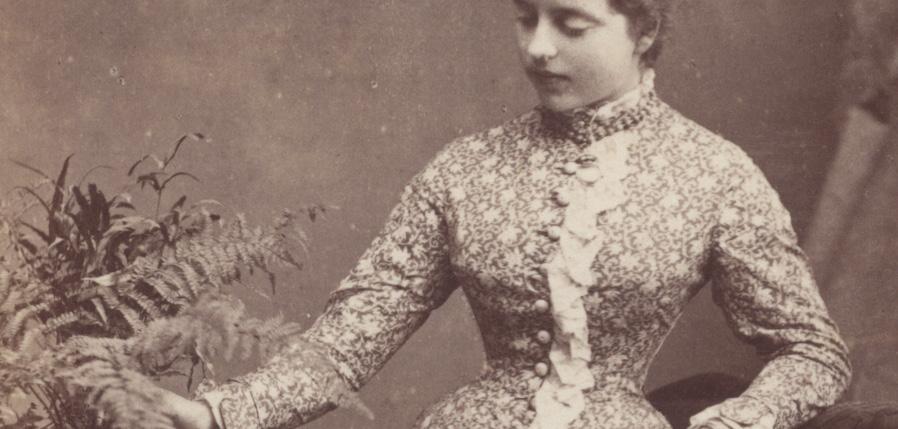
HORDERN HOUSE hordern.com
16. [CARINGTON, LADY] BASSANO, Alexandro.
Cabinet Portrait of “Lady Carington”, wife of the Governor General of NSW.
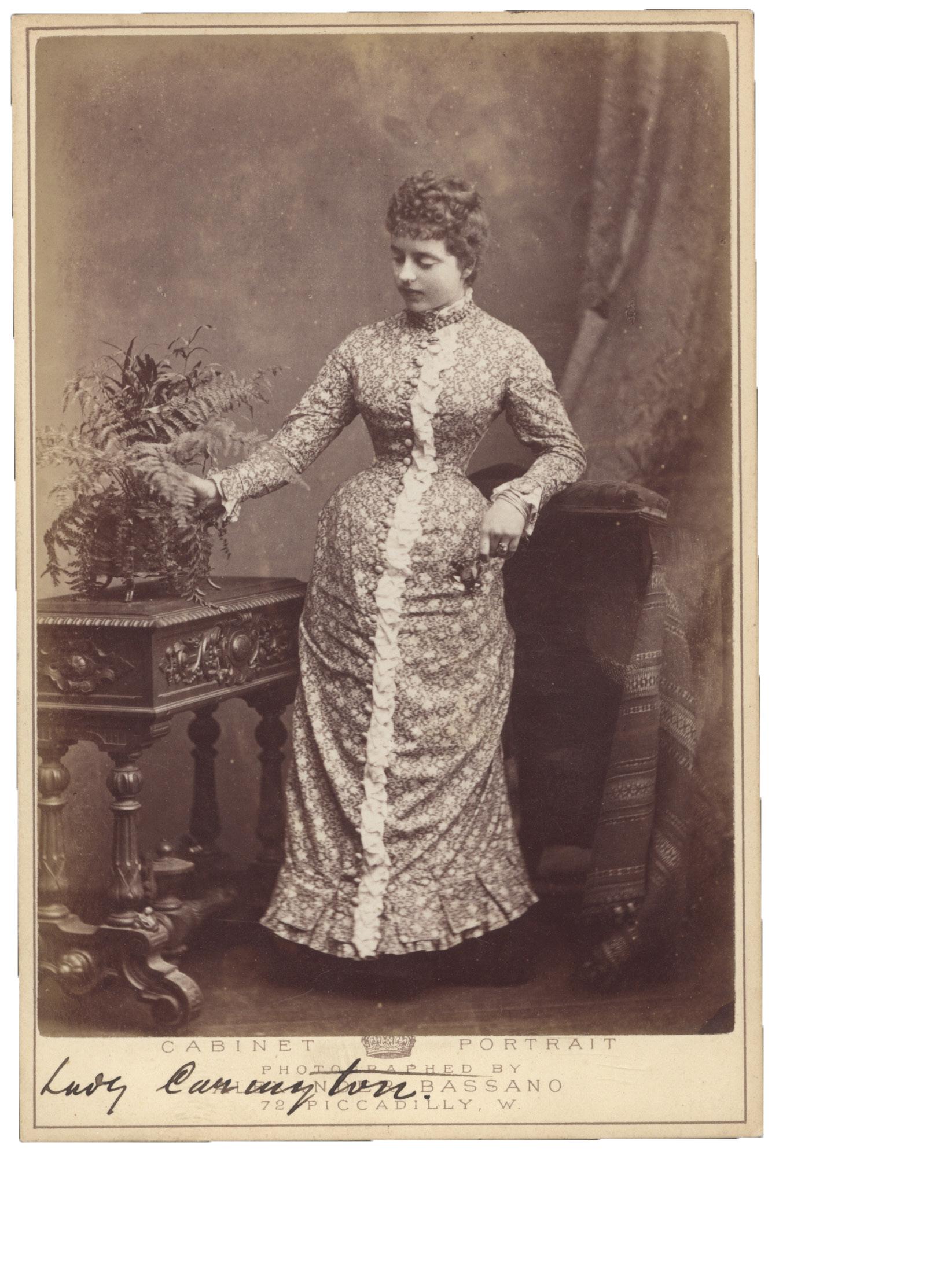
Cabinet card, measuring 165 x 110 mm., early manuscript annotation. London, Alexander Bassano, circa 1875.
Charming cabinet card photographic portrait of the Honourable Cecilia Margaret Harbord, who married the future governor of New South Wales, Sir Charles Robert Wynn Carington, 1st Marquess of Lincolnshire, in 1878.
After her marriage she was styled Baroness Carington of Upton (or “Lady Carington” as has been added in an early hand here). Her Husband was a captain in the Royal Horse Guards who was appointed governor of New South Wales in 1885. Although this image, which appears to have been taken around the time of her marriage, is not apparently recorded in any Australian collections, comparison with a similar image confirms her identity (see State Library of Victoria, Accession No: H2005.34/1186).
Bassano was the leading society photographer of his day, and one of his many studios was at 72 Piccadilly. This particular studio was said to have been open between 1870 and 1881, which would accord with the biography of Lady Carington.
$440 [4111703 at hordern.com] see description and illustrations at
Picturing New South Wales
HORDERN HOUSE hordern.com
17. [FIRST NATIONS] ANONYMOUS. “Habitans de la Nouvelle Hollande.” Handcoloured wood engraving, 100 x 75mm; Very good.circa 1830.
Charming French hand-coloured woodcut depicting a man and woman of “New Holland”. It was most likely printed as part of a series of costume plates, similar to those in the rare ethnographic survey prepared by Rudolf Schinz in the 1820s bringing together descriptions and images of the native inhabitants of Kamtschatka, Japan, China, Timor, Hawaii, Tahiti, Australia, North America and Africa from a number of published voyage accounts includ ing those of Cook, Langsdorff, Kotzebue, Krusenstern and Baudin. It may be the same as a similarly-sized woodcut of the same name held in the Rex Nan Kivell collection of the National Library (NK9989).
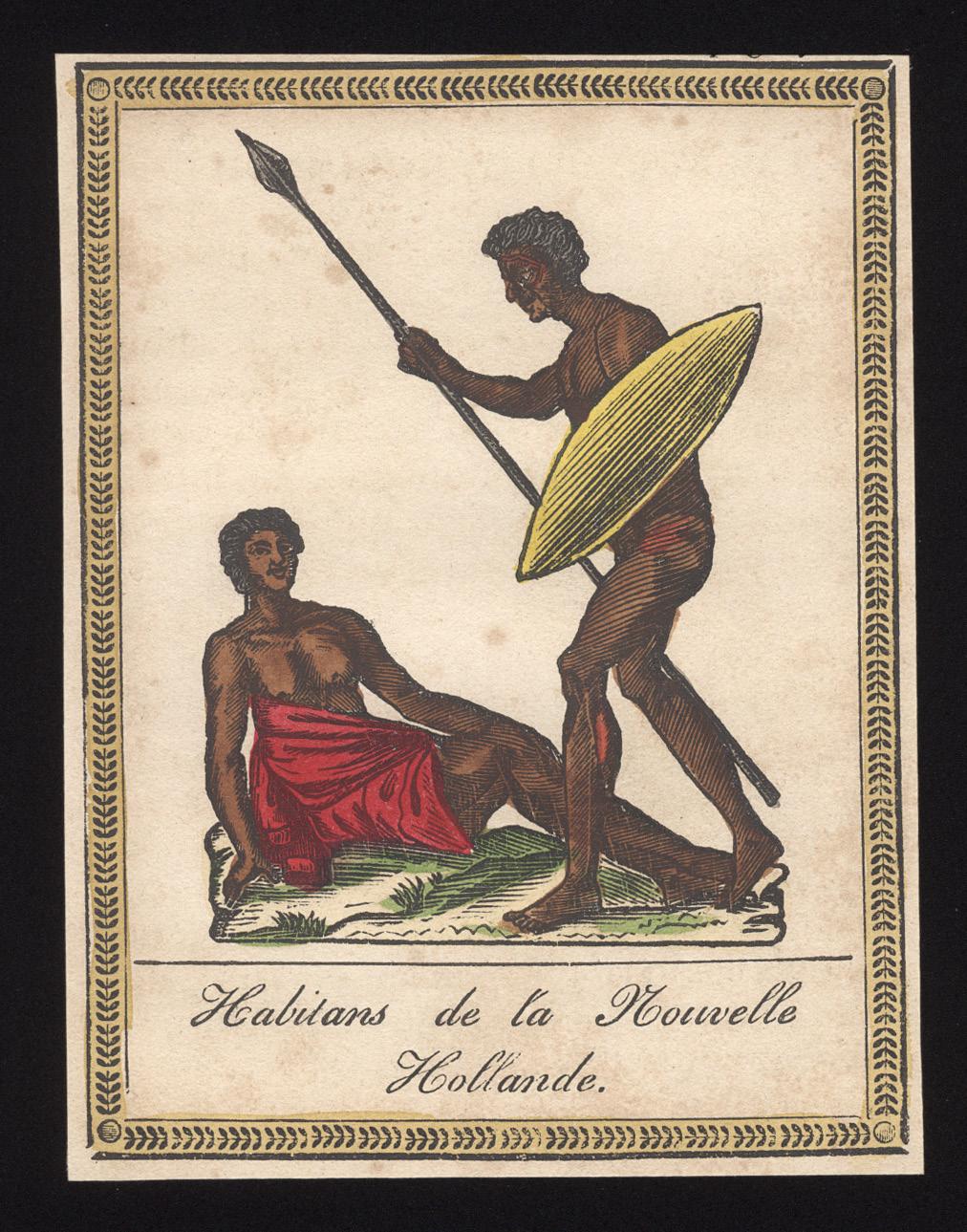
$285 [4202850 at hordern.com] see description and illustrations at
Picturing New South Wales
HORDERN HOUSE hordern.com
18. GILLRAY, James after Sir John DALRYMPLE. Consequences of a Successfull French Invasion.
Etching; 320 x 360 mm., mounted. London, J. Gillray, n.d., 1798.
The original eighteenth century version of this rare transportation engraving, where the Par liament of Great Britain has been condemned - the chair of the Speaker being inscribed “This House adjourned to Botany Bay”.
This is an example of the rare, original printing with both the date and the publishing details scratched through in ink. A later version was issued in the 1850s.
Stephens in his great catalogue of the British Museum’s print collection shows that this is the first of a series of four political satires by Gillray after Dalrymple, and one of a pair depicting government (the other two have agricultural settings). Showing a mad scene in the House of Commons, this is sub-titled “No. 1 Plate 1st. We come to recover your long lost Liberties…”. The second such print, more frequently seen, is set in the House of Lords and is sub-titled “No. 1 Plate 2d. We explain the Rights of Man to the Noblesse…”.
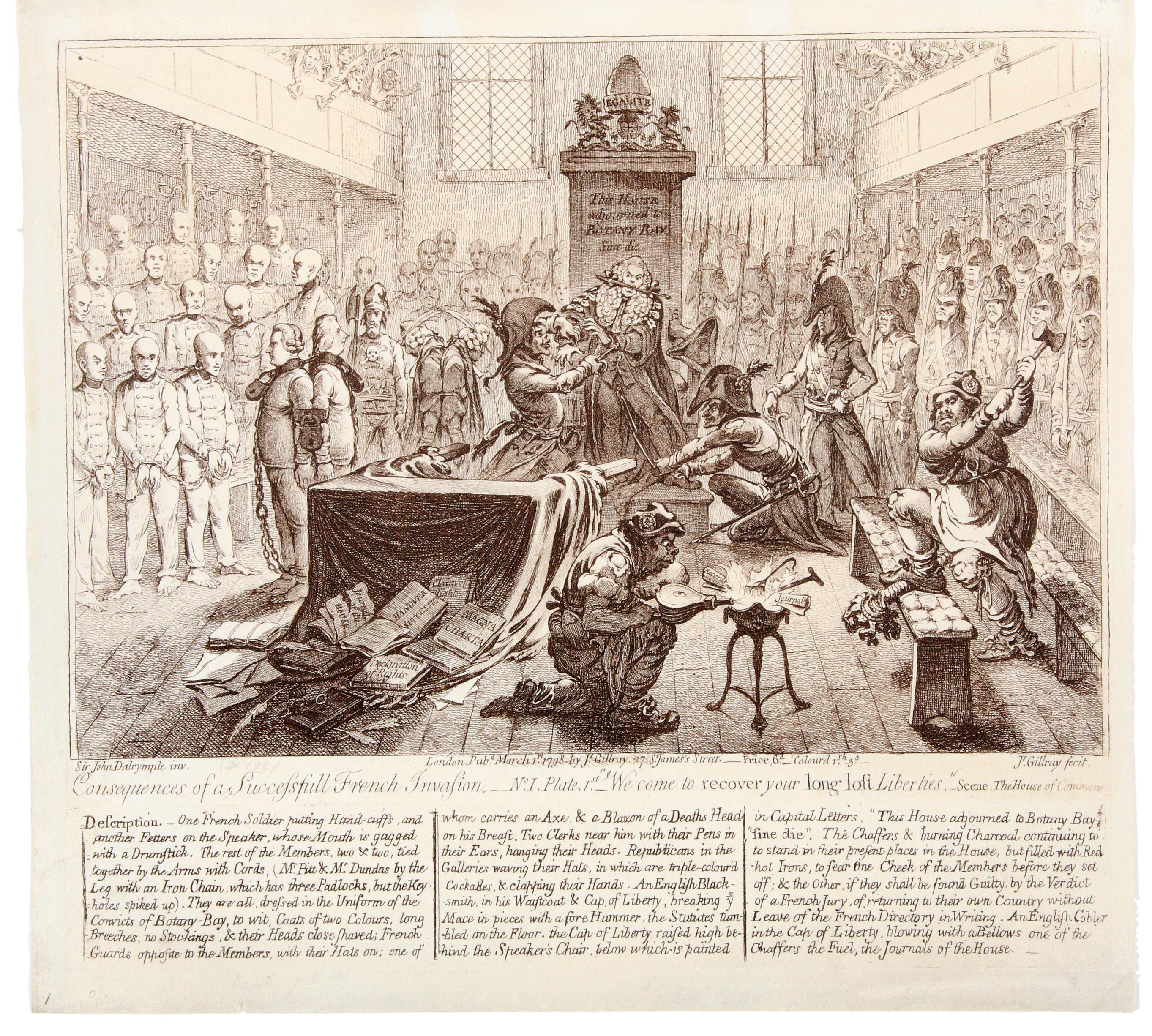
This rare Gillray cartoon takes a satirical look at the decision of the English parliament to cre ate a penal settlement at Botany Bay, in contrast to the atmosphere of reform and concern with civil liberties in the newly created republic of France and in the American colonies. Gillray turns the tables on the politicians of the House of Commons responsible for the Botany Bay decision: French revolutionaries led by Napoleon storm the parliament gagging the Speaker and placing all the Members in chains and dressing them in the garb of convicts. All the symbols of House are destroyed: the mace is smashed, the statutes discarded on the floor, and above the Speaker’s chair are the words, “The House is adjourned to Botany Bay - sine die”. Although recorded and reproduced by Jonathan King in The Other Side of the Coin, we have not found this first issue of 1798 listed in standard Australian catalogues.
King, ‘The Other Side of the Coin’, p.18 (reproducing the image); Stephens, Catalogue of prints and drawings in the British Museum. Division I, political and personal satires, VII, 9180.
$4850 [3002930 at hordern.com] see description and illustrations at
Picturing New South Wales
HORDERN HOUSE hordern.com
19. [HUNTER] DIGHTON, H. (after).
Captain John Hunter.
Engraving, 280 x 215 mm. (sheet size), good condition overall. London, J. Stockdale, 1792.
Portrait of Captain Hunter seated, in naval uniform and holding papers in his left hand (one of which depicts a ship passing between two headlands).
Captain John Hunter (1737 - 1821) was appointed second captain, under Governor Phillip, of the “Sirius”, one of the First Fleet to Australia in 1787; and he later became second Governor of New South Wales (1795 - 1800). Upon first arriving at Botany Bay, the proposed site of the settlement, Hunter joined Philip in surveying the area before deciding upon Port Jackson as a preferred option for landing. Later, in an effort to obtain replacement grains for the starving colony at Cape of Good Hope, the Sirius under Hunter’s command was lost on the treacherous reefs off Norfolk Island, causing him to be stranded there for eleven months. As Governor he was criticised for his lack of control over the rum trade that had gained a strong foothold amongst the New South Wales Corps. He left the Colony Sept.1800 (see p.155 Nan Kivell Portraits of the Famous and Infamous).
This attractive mezzotint was published in September 1792 by John Stockdale, to form the frontispiece for Hunter’s Historical Journal of the Transactions at Port Jackson, published the following year.
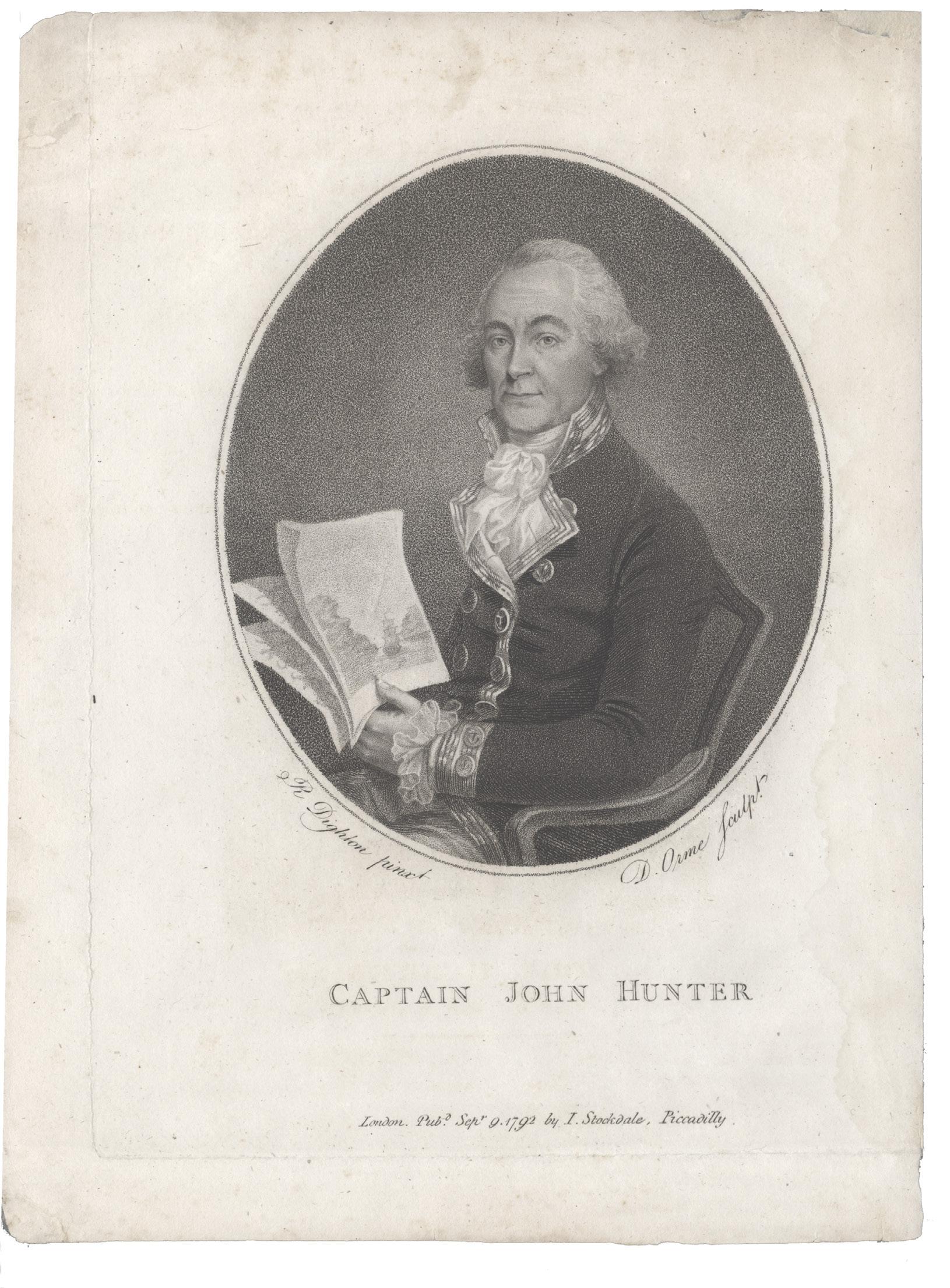
Nan Kivell, p.155. $650 [4307540 at hordern.com] see description and illustrations at
Picturing New South Wales
HORDERN HOUSE hordern.com
20. [OYSTERING: UNKNOWN ARTIST]
“Ye Picnic: Graceful attitude of ladie oystering…”… Sepia drawing 110 mm x 170 mm (image size); mounted, in an early timber frame. New South Wales, circa 1860s. Charming rendering of a colonial woman oystering - a rare subject.
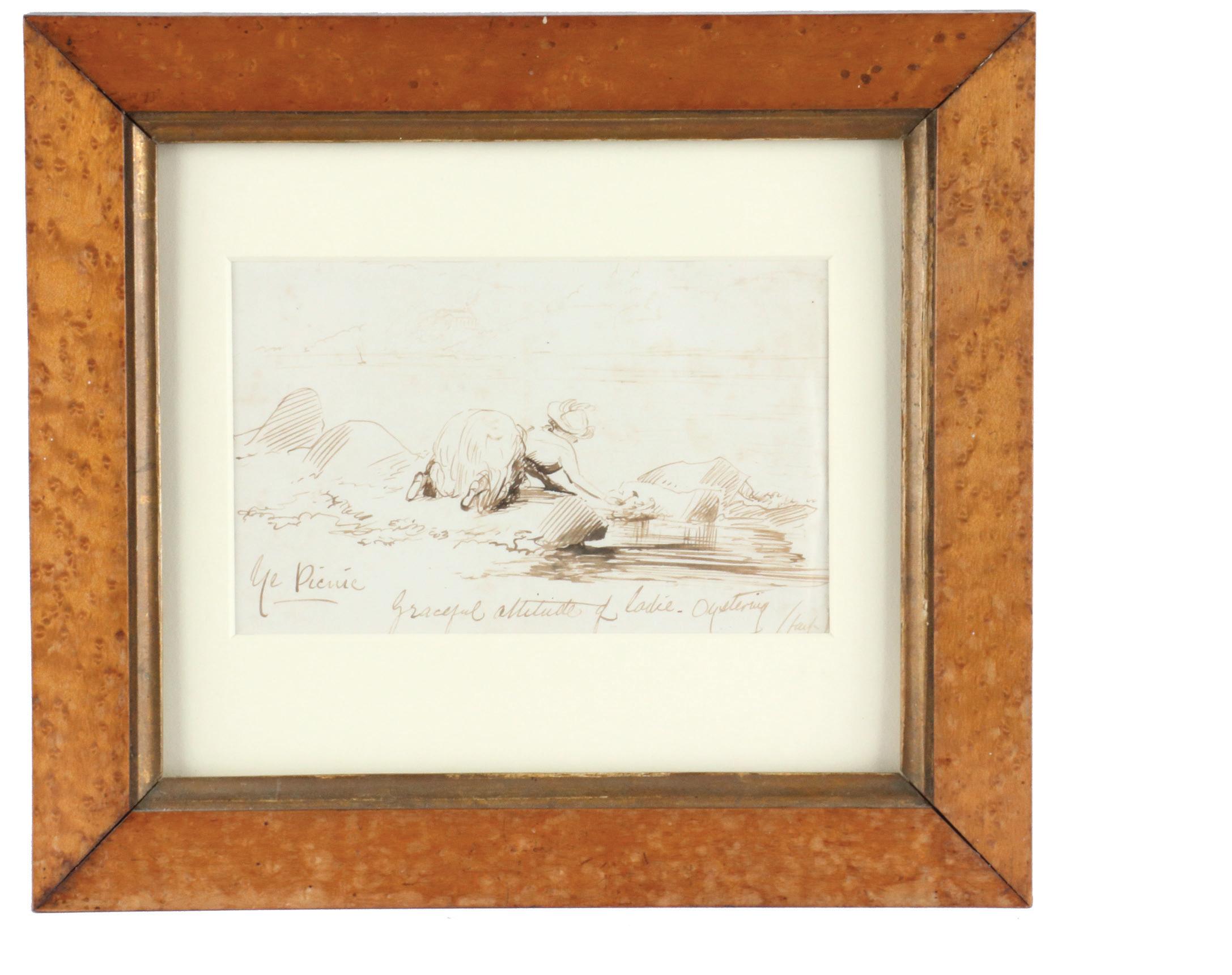
Far from being the preserve of the gourmet, oysters in 19th century Sydney were fodder for all. Shell deposits in Sydney middens attest to oyster consumption by the Aboriginal population for thousands of years before colonial settlement. Early European settlers had taken to the local product with gusto, but they also burned the shells to produce lime for mortar. This depleted the natural population, so the government banned the burning of oysters for lime, leading to deliberate farming. (Dictionary of Sydney). Thomas Holt, the first Treasurer in the NSW Legislative Assembly, had begun (unsuccessful) attempts at commercial farming in the late 1860s, agitating for oyster leasing in 1880. His vast estate stretched from Botany Bay to Port Hacking, with his imposing mansion The Warren being built on the Cook’s River in 1870. This drawing with its humorous title draws attention to both the desire for oysters at “high table” (the outlines of a substantial home may be glimpsed in the background) and the inti mate foraging of a woman on her haunches plying for oysters.
$1950 [4504855 at hordern.com] see description and illustrations at
Picturing New South Wales
HORDERN HOUSE hordern.com
21. PETIT, Nicolas-Martin, after; engraved by Barthélemy ROGER under direction of Jacques MILBERT Oui-ré-kine. Engraved portrait, 305 x 250 mm. mounted Paris, circa, 1807.
A beautiful portrait by Nicholas-Martin Petit from the first Baudin voyage account, depicting Oui-ré-kine (Wárrgan/Worogan), a young woman from Port Jackson who, together with her husband Yeranibe (Euranabie), had sailed with James Grant on the Lady Nelson. As Grace Karskens has recently noted in The Colony, c - “crow” - was a relative of Bennelong and a friend of Pattyegarang: she was, moreover, one of the small circle of Sydney Aboriginal people to associate with William Dawes, notably in his attempt to compile a vocabulary. The recent exhibition of the Eora held at the State Library of New South Wales noted that Wárrgan married Yeranibe, son of Maugoran and Goorooberra. Significantly, Grant’s nar rative of the voyage of the Lady Nelson includes several descriptions of Wárrgan and her husband Yeranibe, both of whom were guests on board the vessel for the voyage to Jervis Bay and beyond; they were taken on board, as Grant noted, because they ‘spoke English tolerably well.’ Grant, for example, notes at one point, that when ‘Euranabie and his wife came on board the vessel, at Sydney, they both of them received clothing; but when the weather proved warm, the woman threw aside her gown and petticoat, and preferred appearing in the state of nature, or slightly covered with a blanket.’
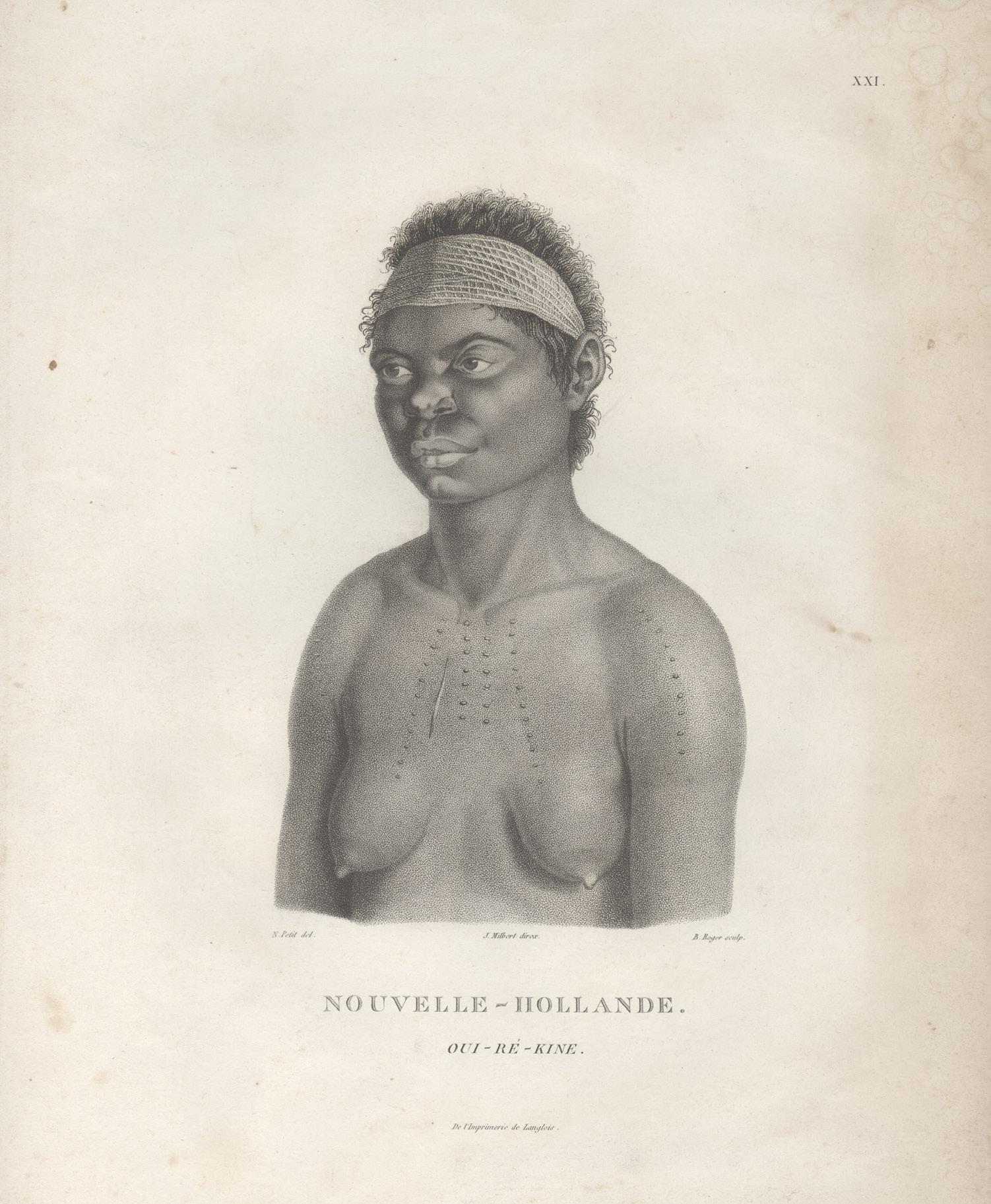
Although this particular portrait is taken from the first edition of Baudin’s voyage account, the table of contents of the second edition confirms that Ou-ré-kine is from “des environs du port Jackson”.
Bonnemains, Forsyth & Smith, 20032.4.
$1650 [4504988 at hordern.com] see description and illustrations at
Picturing New South Wales
HORDERN HOUSE hordern.com
22. PETIT, Nicolas-Martin, after; engraved by Barthélemy ROGER under direction of Jacques MILBERT.
Jeune Femme de la Tribu des Bou-rou-be-ron-gal avec son enfant sur les épaules. Nouvelle Hollande: Nlle. Galles du Sud. [Young woman of the Buruberongal tribe, with her child on her shoulders, New South Wales]…
Handcoloured engraved portrait, 342 x 254 mm. Paris, l’Imprimerie de Langlois, 1824.
The first published version of one of Nicolas-Martin Petit’s finest Aboriginal portraits from the visit of the Baudin voyage to Sydney, depicting a young mother and child of the Western Sydney Basin, probably from the area of modern Richmond (though the Buruberongal language group existed as far north as Kempsey). Jacinta Tobin has noted that “A lot of our wording is onomatopoeic, like mimicking the sound of a bird or an animal found on that country. The Dharug word for kangaroo, buru, is the sound the kangaroo makes when it jumps, so my clan the Buruberongal, were the gal (people) belonging to (beron) the kangaroo (buru)”
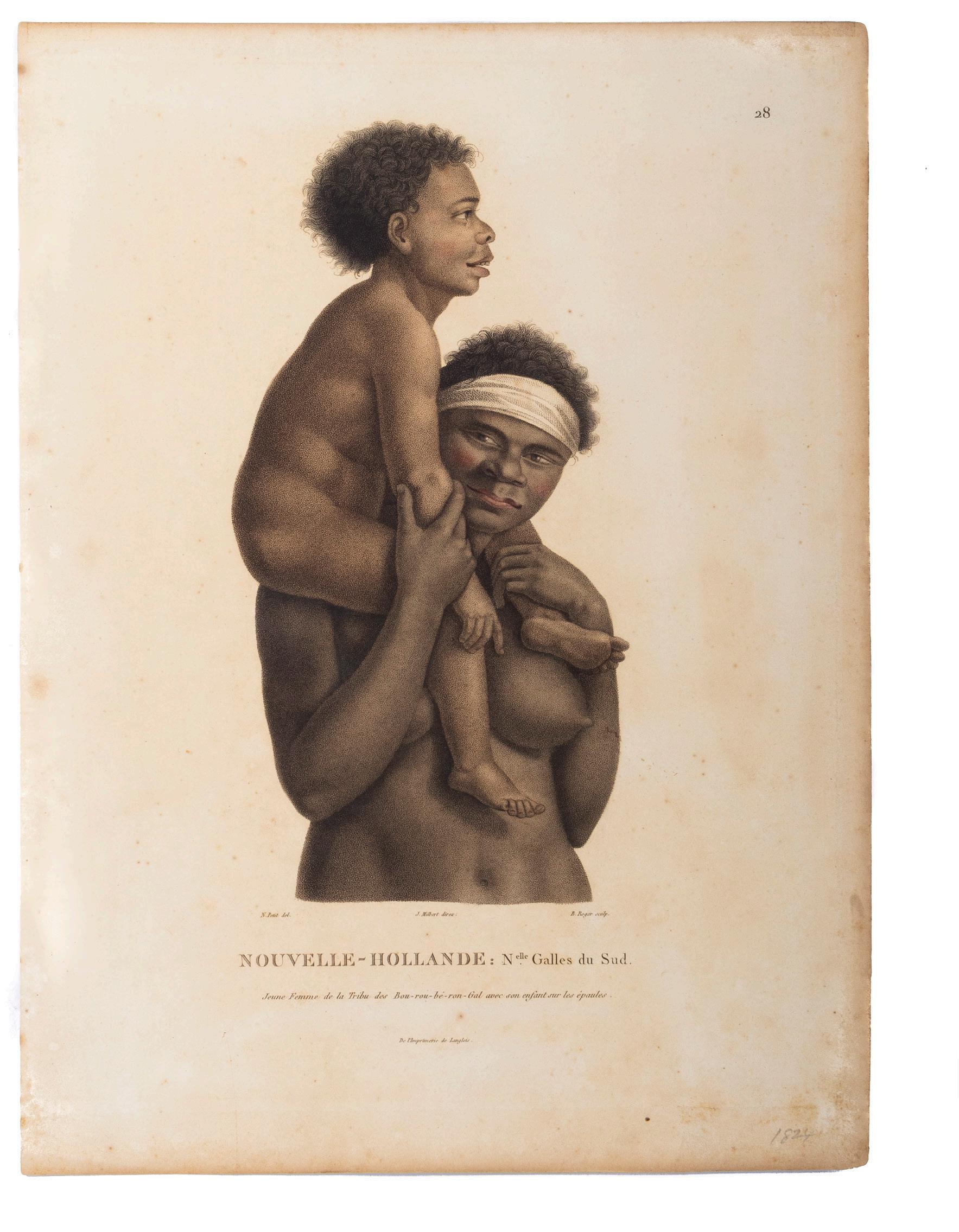
During the Baudin voyage the French stayed in Port Jackson for some five months, ample time for the artists to become very involved with the local aboriginal populace, and indeed the Baudin voyage account is well-known for the beautiful suite of portraits engraved after originals by Petit. This wonderful image was prepared only for the scarce second edition of the official account of the voyage. The first edition of the voyage publication had appeared a decade earlier, and in 1824 the new version, heavily revised by Louis de Freycinet, was published with the addition of 23 new plates, nine of them like the present example prepared in colour. These newly prepared coloured plates are very desirable but only occasionally seen separately. Just four of them, three of which were prepared in colour, were portraits of Australian Aborigines.
The original drawing for this portrait survives in the Le Havre museum where much of Petit’s work is held. It is interesting to note that the drawing has various manuscript notes regarding how it is to be engraved, by Péron, Lesueur and Milbert. Péron died in 1809, but the engraving would not appear, as noted above, until 1824.
See Bonnemains, Forsyth & Smith, 20036.2.
$2100 [4505231 at hordern.com] see description and illustrations at
Picturing New South Wales
HORDERN HOUSE hordern.com
23. [PHILLIP] SHERWIN, W. after Francis WHEATLEY. Arthur Phillip Esq. Captain General and Commander in Chief… Stipple engraved oval portrait by Sherwin; 150 x 125 mm. London, J. Stockdale, 1789.
The classic contemporary portrait of Captain Arthur Phillip, commander of the First Fleet and first governor of the fledgling convict settlement at Port Jackson. This portrait was engraved as the frontispiece to The Voyage of Governor Phillip to Botany Bay, a compilation of Phillip’s dis patches and the most significant official account of the perilous early history of the settlement.
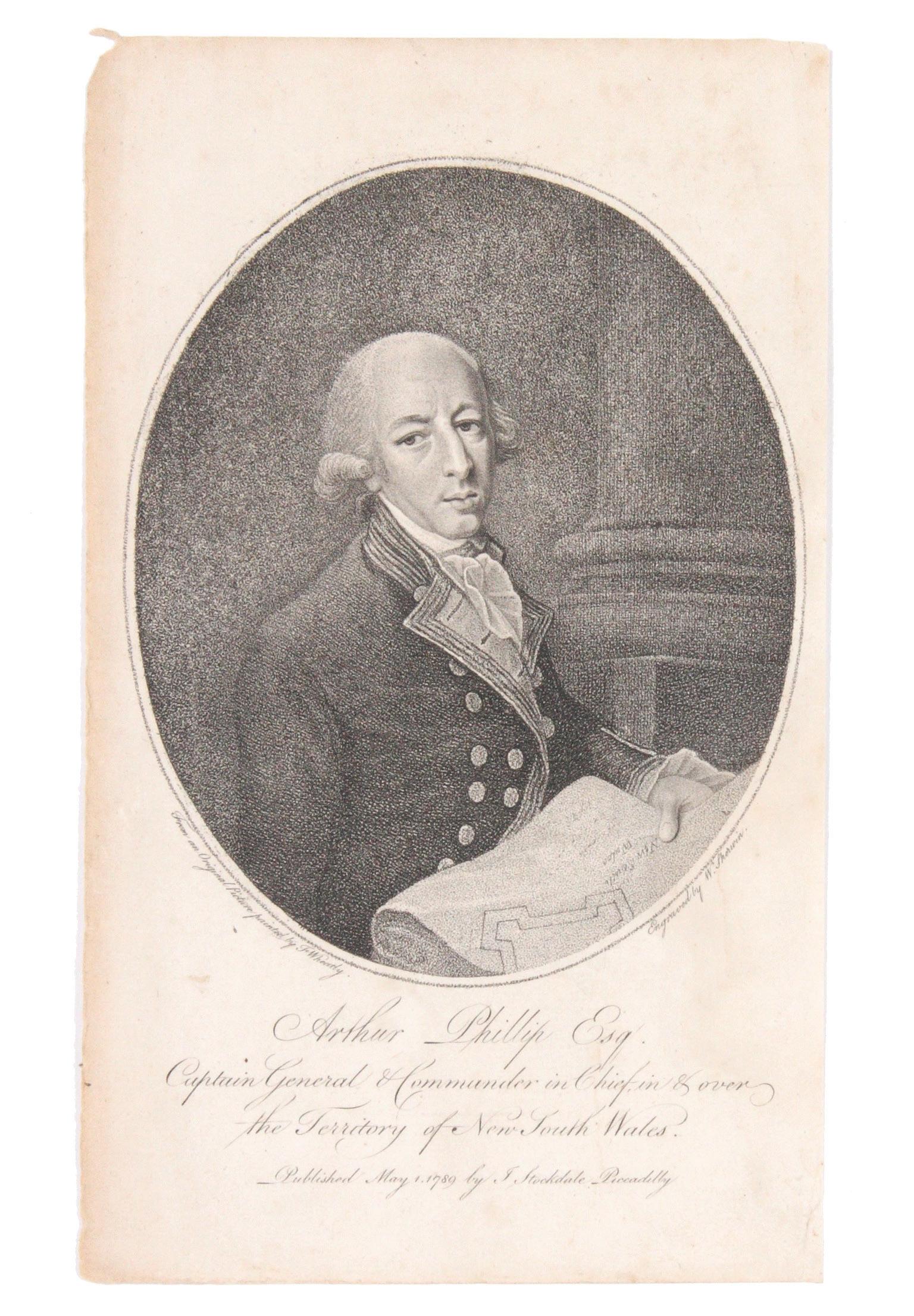
This detailed portrait is based on the original oil by Francis Wheatley painted in 1786 - now a national treasure held by the Mitchell Library in Sydney.
Nan Kivell and Spence, p. 250.
$850 [4504217 at hordern.com] see description and illustrations at
Picturing New South Wales
HORDERN HOUSE hordern.com
24. [SYDNEY] YOUNG, John after Gilbert STUART. Lord Viscount Sydney… Mezzotint engraving, 440 x 310 mm; mounted. London, n.d., circa 1790.
A fine and fresh impression: Lord Sydney, after the official portrait by Gilbert Stuart, the celebrated American portraitist – the “father of American portraiture” – who worked in Eng land from 1775 until the late 1780s. A protégé of Benjamin West, with whom he studied for six years, he reached such success in England that at one point only Reynolds and Gainsborough were getting higher prices.
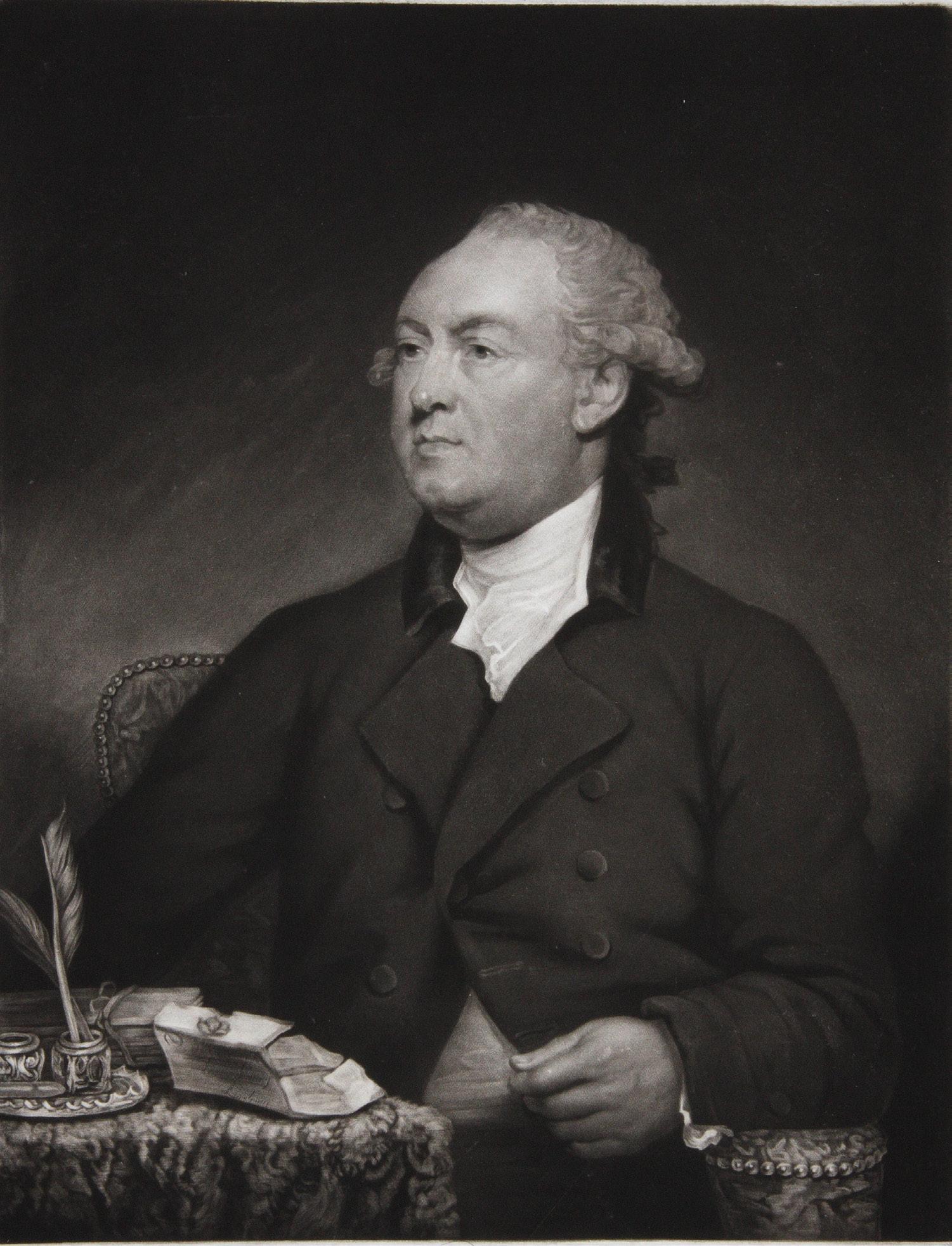
Sydney, as Home Secretary in Pitt’s government, was given the task of devising a plan for settling convicts at Botany Bay, and it was his address to the Commissioners of the Treasury in August 1786 which provided the detailed plan for the establishment of the colony, with details of the number of convicts and transports, the marines, disciplinary measures, supplies and livestock, and the foundations of government itself. Sydney was particularly inspired by his interviews with James Matra, the seaman of American origin who sailed on Cook’s first voyage (at that time named Magra). Matra proposed settling American loyalists in New South Wales; however, by the time of Sydney’s proposal to the treasury the loyalists had been dropped from the project and Botany Bay was solely intended as a penal colony. When Phillip finally decided to establish the settlement at Port Jackson, rather than Botany Bay, he paid the Home Secretary the compliment of naming Sydney after him.
This fine portrait is accompanied by a folio-sized engraved genealogical sheet entitled “A Genealogical Table of the Noble Family of Townshend, Baron Sydney”.
Nan Kivell and Spence, p. 300 (and reproduced, p. 317).
$4800 [2708032 at hordern.com] see description and illustrations at
Picturing New South Wales
HORDERN HOUSE hordern.com
25. [THOMSON, James].
Portrait of Mackabarang…
Original engraving approx. 120 x 180 mm. mounted and framed. London, Alexander Hogg, c. 1804.
Rare portrait of Mackabarang or “Broken Bay Jack”, derived from the work of Nicolas-Martin Petit on the Baudin voyage. The engraved text beneath the portrait of Mackabarang states that Petit was the original artist, but that the drawing was in the possession of “Jas. Thompson”. A strange connection, but an interesting one: James Thomson had first come to New South Wales as surgeon of the Third Fleet transport the Atlantic, which arrived in early 1791. He was back in England in early 1793, where he was appointed the Senior Assistant to William Balmain. After his return he remained in Sydney until 1802, when he took leave for England. Remark ably, he and his wife shipped on board Baudin’s ship the Naturaliste at least as far as the Ile de France: Thomson sent a letter to Governor King from King Island en route, while Baudin himself let the Governor know about his guest’s continuing health in a letter from Port Louis: ‘Monsieur et Madame Thomson se portoient bien, et ont éprouvés pendant leur sejour tout l’agrément qu’ils pouvoient désirer’ (HRNSW, vol. V, pp. 8 & 201).

Clearly Petit had given Thomson some of his drawings en route from Port Jackson, and after his return he imparted his knowledge of the native inhabitants of New South Wales to George Riley, the author of the article which this portrait accompanied in the “Wonderful Museum”, where the text was fleshed out with notes from some of the First Fleet books.
George Riley published mezzotint versions of two portraits in London in 1803, and two engravings (including this) published by Alexander Hogg are clearly versions of the Riley portraits. The portrait of Mackabarang is very similar to the original Riley image, but while a portrait of Killprieara retained her prominent cicatrices on the chest and shoulders, her breasts were prudishly covered with a draped piece of cloth.
There is also a closely related sketch of “Mook aba rang” in the British Museum, which may be Petit’s original (Oc2006, Drg.319).
Ferguson, 374 (full run of the journal).
$1450 [4504821 at hordern.com] see description and illustrations at
Picturing New South Wales
“BROKEN BAY JACK”, AFTER NICOLAS-MARTIN PETIT, ON THE BAUDIN’S VOYAGE
HORDERN HOUSE hordern.com
Original Carte-de-visite photograph of Arthur Orton… Photograph measuring 89 x 59 mm. (image), on card with printed caption, verso bears printed details of the London Stereo scopic Company, fine. London, The London Stereoscopic & Photographic Company, circa 1871.
Scarce contemporary photographic image of Arthur Orton, the Australian butcher who claimed the identity of Roger Tichborne, an English aristocrat who drowned off South America in 1829.
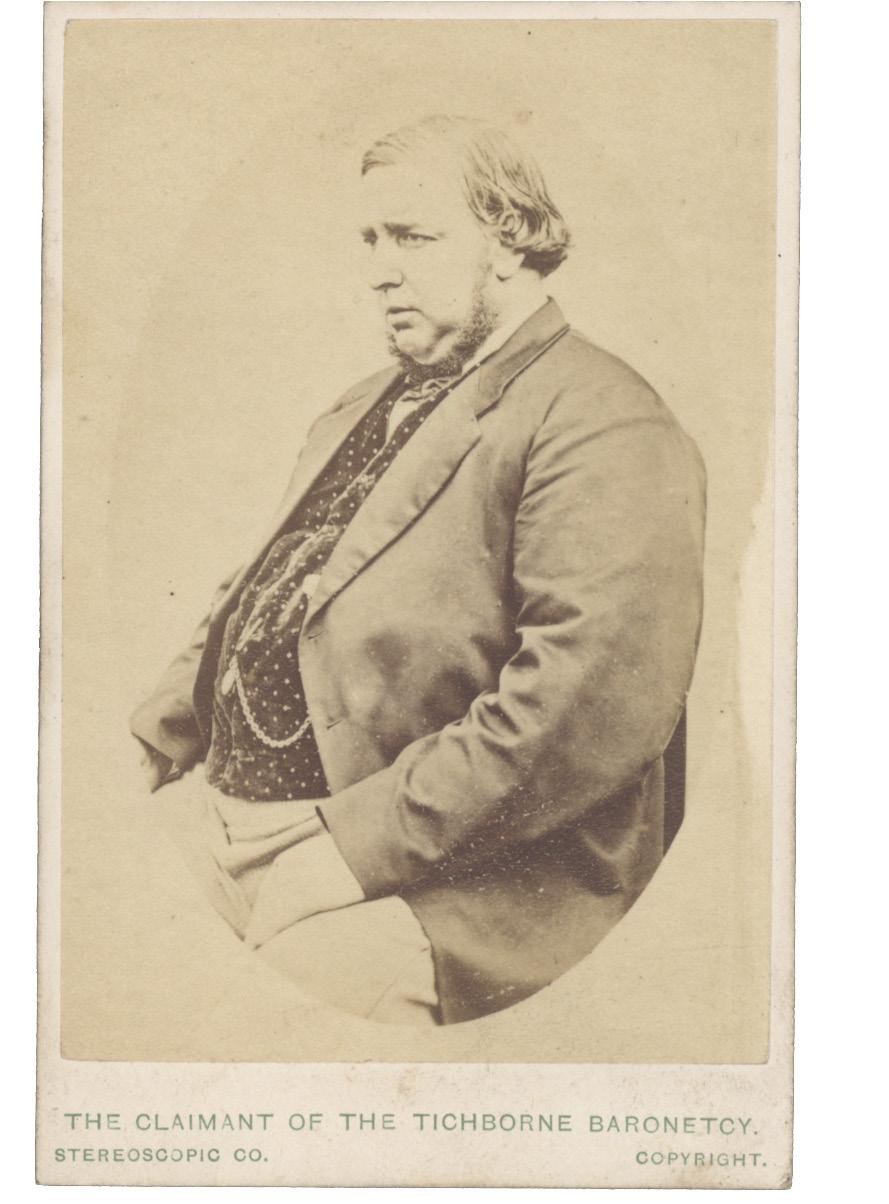
Orton’s claim to the Tichborne baronetcy was one of the most widely publicised scandals of the 1860s. Orton travelled to England in 1866 where he convinced Roger Tichborne’s mother he was her long-lost son. Here began a lifestyle of debauchery and excess, cut short when the family dragged Orton through the courts in 1871-72. Their civil case was unsuccessful, but laid the foundation for a successful conviction for perjury in 1874, and Orton spent the next ten years in gaol.
Several variant carte-du-visites were produced to help fund Orton’s legal defence. The National Library of Australia hold a similar example titled ‘The Claimant of the Tichborne Baronetcy who alleges he was saved from the Bella’. Here Orton is photographed in a top hat with eyes closed (although the jacket, fob watch and waistcoat are identical to those in this carte-du-visite).
$750 [4211182 at hordern.com] see description and illustrations at
Picturing New South Wales
HORDERN HOUSE hordern.com
27. TOUANNE, Vicomte Edmond de la. Tetes et Groupe de Sauvages du Camden-Shire (Nouvelle Galles meridionale).
Handcoloured lithograph, 385 x 290 mm. Paris, Bulla, 1828.
Engaging Australian Aboriginal portraits and camp scene from the official voyage account of Hyacinthe de Bougainville, who toured the South Pacific between 1824 and 1826.
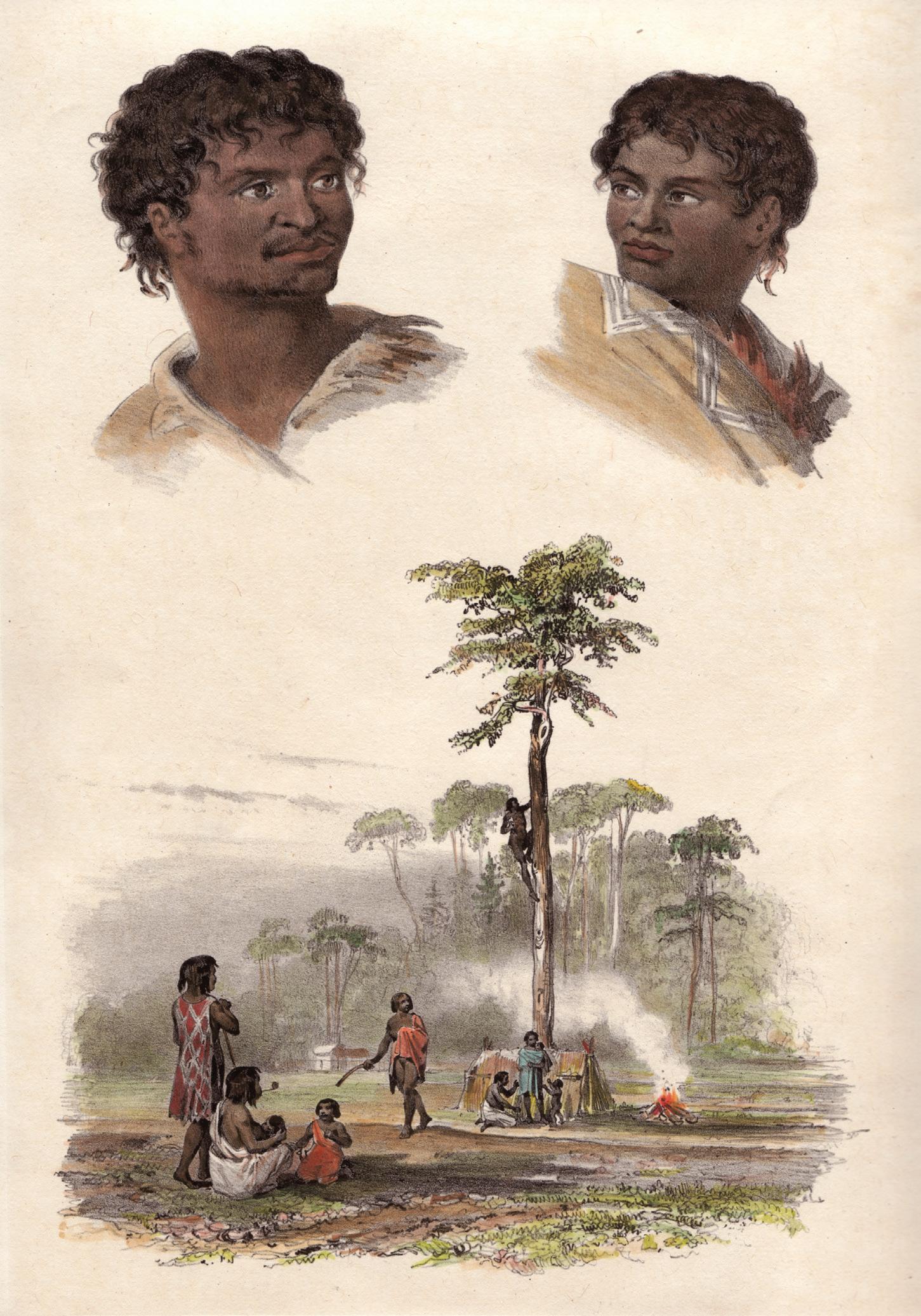
Edmond de la Touanne, whose work formed the basis of these fine lithographic portraits, was a friend and protégé of de Bougainville and sailed on his expedition as lieutenant de vaisseau. Because of the haste with which the expedition was manned, no official artist was sent; as Bougainville remarks, no pictorial record of the expedition would have survived but for de la Touanne’s sketches, which were published as lithographs in the official record of the expedi tion and in de la Touanne’s own album.
$1250 [3402059 at hordern.com] see description and illustrations at
Picturing New South Wales
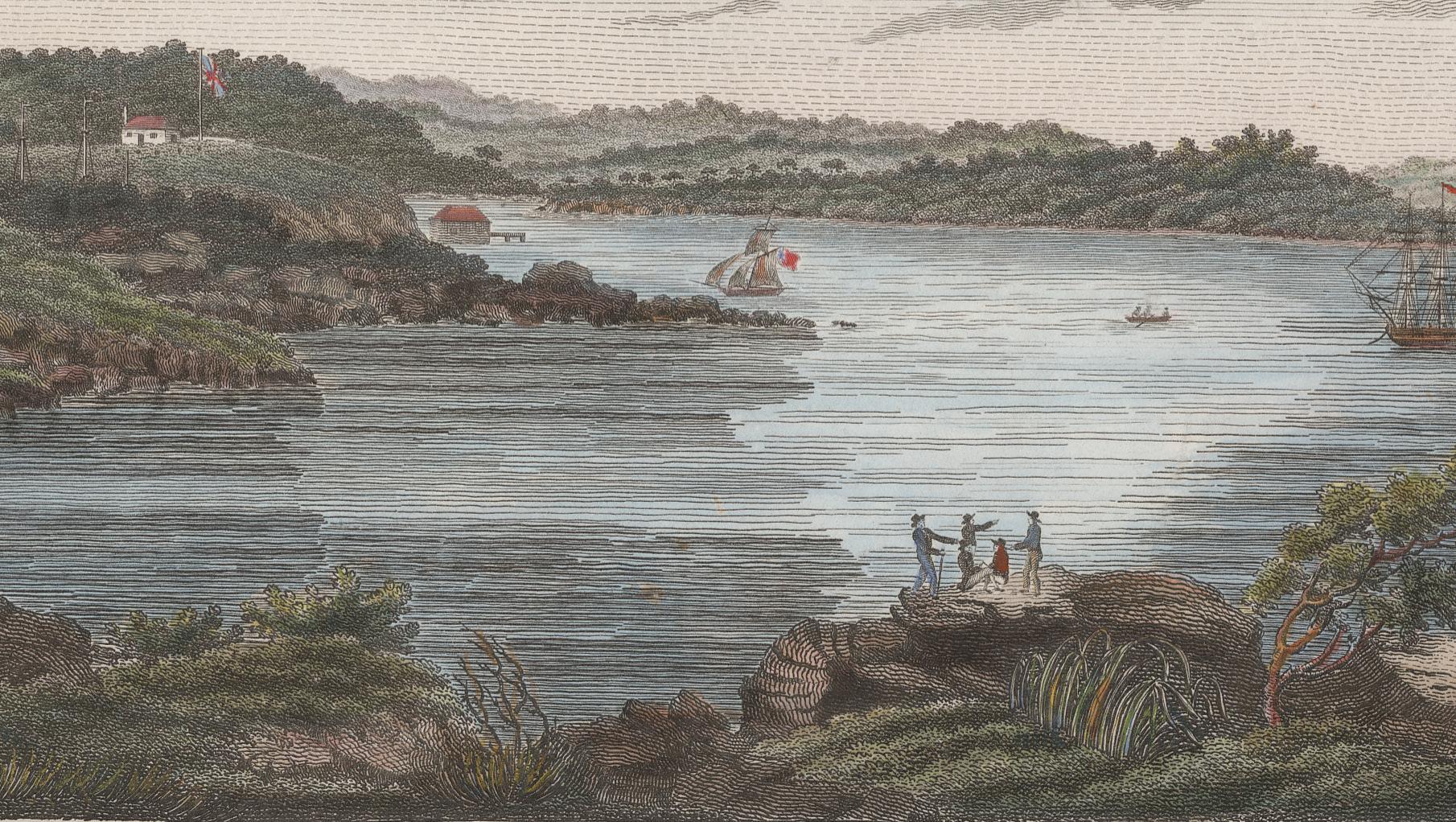
The Wreck of ‘The Hereward’ Maroubra Beach, Sydney.
Watercolour, 182 x 540 mm, mounted and framed.circa 1898. This watercolour, signed lower left by M. Clarke, was painted as the clipper ship Hereward lay on her side stranded on Maroubra Beach. The ship had blown onto soft sand at the northern end of the beach, luckily avoiding two rocky reefs, and the crew of 25 was brought safely ashore. ‘The Hereward was a 1513-ton full rigged iron clipper built in Glasgow in 1877. It had a length of 254 feet, beam of 39 feet, and depth of 23 feet. The Hereward was a trader to the colonies making frequent trips from London to Sydney with general cargo. The fateful trip began in the Dutch East Indies port of Sourabaya, bound for Newcastle to load coal for South America. On 5 May 1898 the Hereward was battling up the New South Wales coast in appall ing weather, with wind velocities recorded up to 47 miles per hour. The Hereward was flung towards the shore by the winds, and with sails torn to shreds the captain, Captain Gore, was helpless to keep the vessel from the shore.

‘The ship, insured for 6000 pounds, was sold a few months after being stranded for 550 pounds to a Mr Cowlishaw who bought the wreck for salvage. Despite several enthusiastic attempts to refloat her the Hereward ended up once more stranded on the beach, with the waves finally managing to break her in two on 9 December 1898. The wreck lay on Maroubra Beach for many years and by 1937 the only visible sign of her was a triangular dorsal fin above the water line. In 1950 Randwick Council feared injury to surfers from the wreck and began blasting the remnants. Further blasting in 1965, and by Navy divers in 1966/7 has removed all trace of the Hereward. As with other wrecks on this part of the coast, thousands of sightseers made the long trek to the then remote south of Sydney to view the wreck’. (Randwick City Council records).
$2850 [4209095 at hordern.com] see description and illustrations at
HORDERN HOUSE hordern.com
29. [DUMONT D’URVILLE] SAINSON, M. de (after Lauvergne).
Vue des Ecuries du Gouverneur a Sydney.
A finely engraved and coloured view on china paper, mounted, well coloured, 215 x 310 mm. Paris, Tastu, 1833.
This view of the Governor’s Stables shows the original Francis Greenway building before changes. Greenway, the colony’s first architect worked under the patronage of Governor Lachlan Macquarie. This building still stands today in Macquarie Street, and is the home of the Conservatorium of Music.
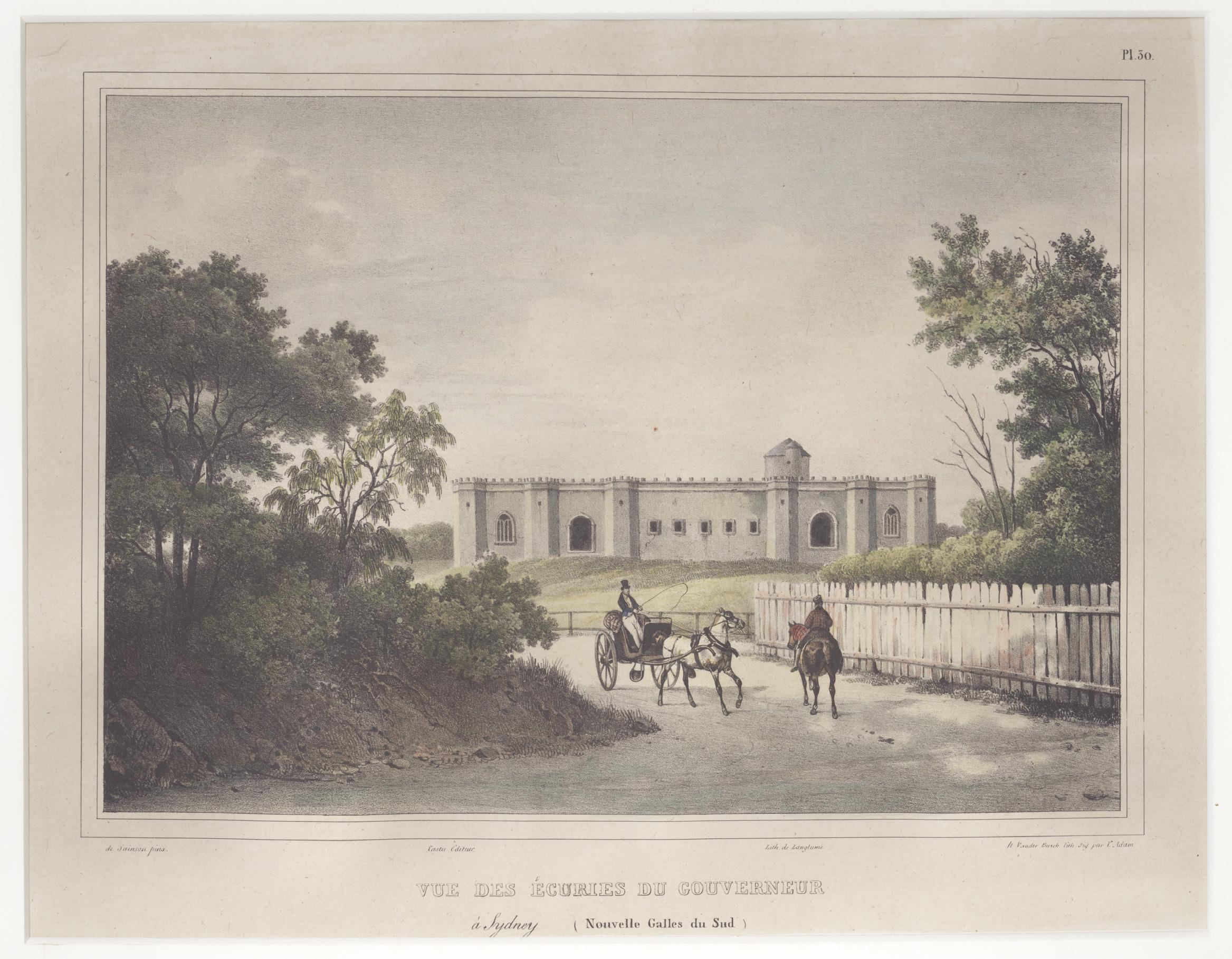
The Astrolabe sailed via the Cape of Good Hope, through Bass Straits, stopped at Port Phillip, and arrived at Sydney on December 2, 1828. The expedition found that the local authorities were disturbed by renewed French activity in Australian waters and were actively working to forestall French settlements, with the declaration “the whole of New Holland is subject to His Britannic Majesty’s Government”.
Governor Darling with growing anxiety watched as Dumont D”urville went about his busi ness in Sydney wearing full uniform, accompanied by officers similarly dressed. After a stay of only 17 days the Astrolabe sailed for New Zealand. A huge amounts of scientific daata was collected described and illustrated in sumptuous folio atlases. This fine view was published soon after the expedition returned to Paris.
$850 [2901051 at hordern.com] see description and illustrations at
Picturing New South Wales
HORDERN HOUSE hordern.com
30. [FREYCINET] SCHROEDER, Friedrich Nouvelle-Hollande. Vue De La Riviere Waragamba, Dans Les Montagnes-Bleues, Au PortJackson.
Hand-coloured engraving, 190 x 270 mm., mounted. Paris, 1822.
Early view of Warragamba River in the lower Blue Mountains, the site of Sydney’s ever important Warragamba Dam from the official published account of the major French voyage of 1817-1820 to Australia and the Pacific commanded by Louis de Freycinet.
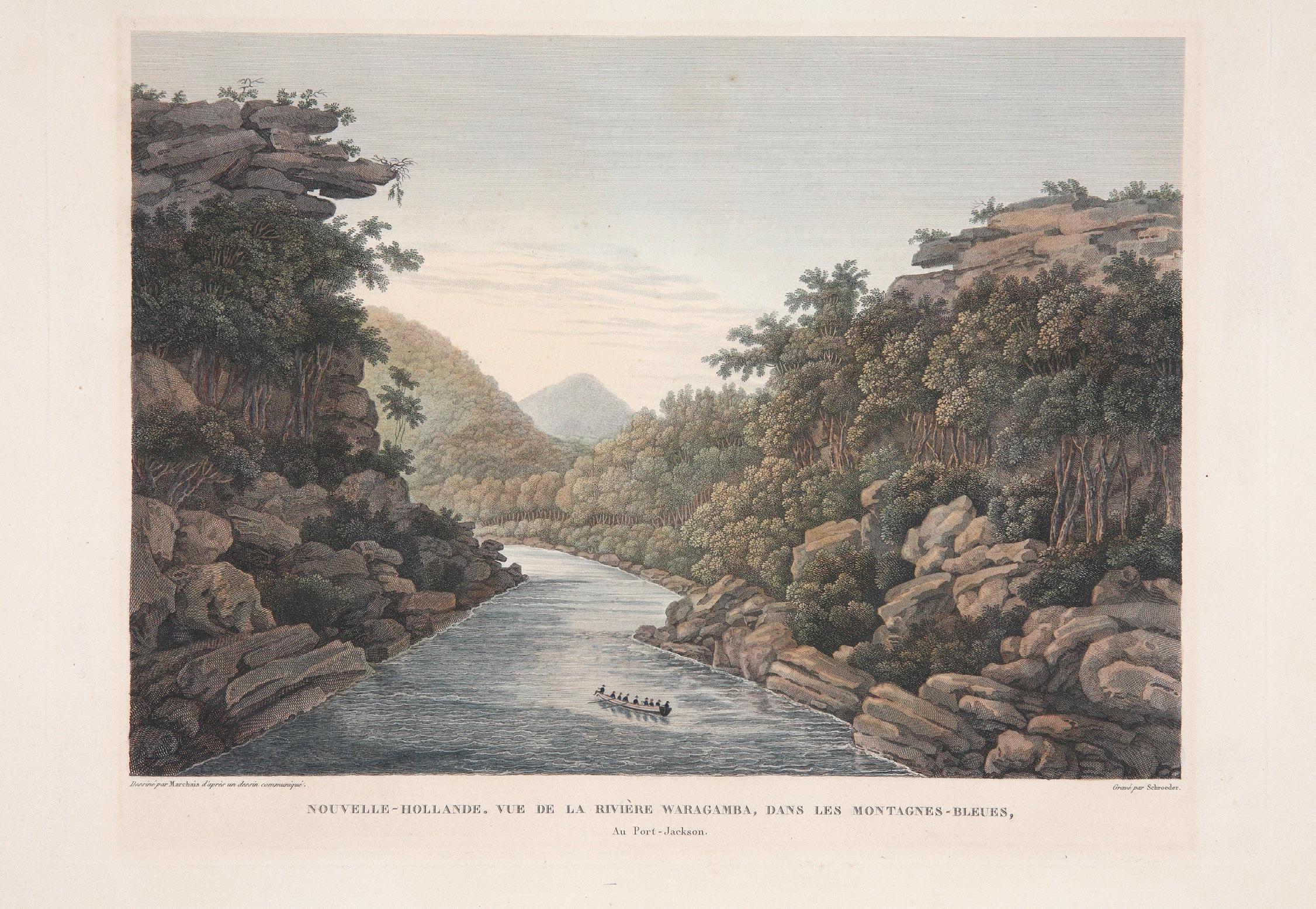
The French took considerable interest in the penal colony at Port Jackson, and Freycinet was astounded by the growth of the settlement and the quality of the architecture he encountered, having previously visited Sydney Cove as an officer on the Baudin voyage of 1800-1804. This fine view reflects the curiosity of the French visitors who enjoyed warm hospitality now that Britain and France were at peace and could inspect the settlement unhindered.
$1850 [4008985 at hordern.com] see description and illustrations at
Picturing New South Wales
31. [FREYCINET VOYAGE: AUSTRALIA] MARCHAIS, Pierre-Antoine, after an unidentified French artist; engraved by Friedrich SCHROEDER.
Freycinet’s corrected proof of plate 95 of his Atlas Historique…
Early proof plate before letters and before change in numbering from 94 to 95; manuscript draft captions and attributions in red ink, bold ink note regardng state of the print on one side; plate number corrected in ink. Paris, for final publication in 1826.
Freycinet’s corrected proofs of two Parramatta views deriving from his 1819 visit to Sydney on the French world voyage of the Uranie. The corrections by Freycinet preparing for the 1826 publication of his official account of the voyage illustrate his very close involvement in the process: here he has changed the plate number, supplied captions in careful red ink capitals, and has written in a bold hand that he doesn’t know whether a version of the engraving has yet been made with captions but he certainly hasn’t seen such a proof. When finally published the caption-titles would be yet further expanded, the first one for example reading “Nouvelle-Hollande, Port Jackson, vue de l’eglise de Parramatta en 1819”. For some reason the original artist is not identified, neither here nor when published:, the captions merely acknowledging that both images are based on a “dessin communiqué”.
The two views depict Parramatta’s architectural highlights in December 1819, St John’s Cathe dral and Government House. Although building of St John’s had commenced under Hunter’s governorship in 1797, it only reached the comparative grandeur depicted here shortly before the Freycinet visit when the facade, towers and spires were finished, meaning that this is one of the earliest depictions of the completed cathedral. Old Government House, as it is now known, was depicted a few times in the early period: there are some 1791 sketches by Governor Hunter, it was painted by Brambila on the visit of the Malaspina voyage in 1793, while Evans and Lycett painted watercolours.
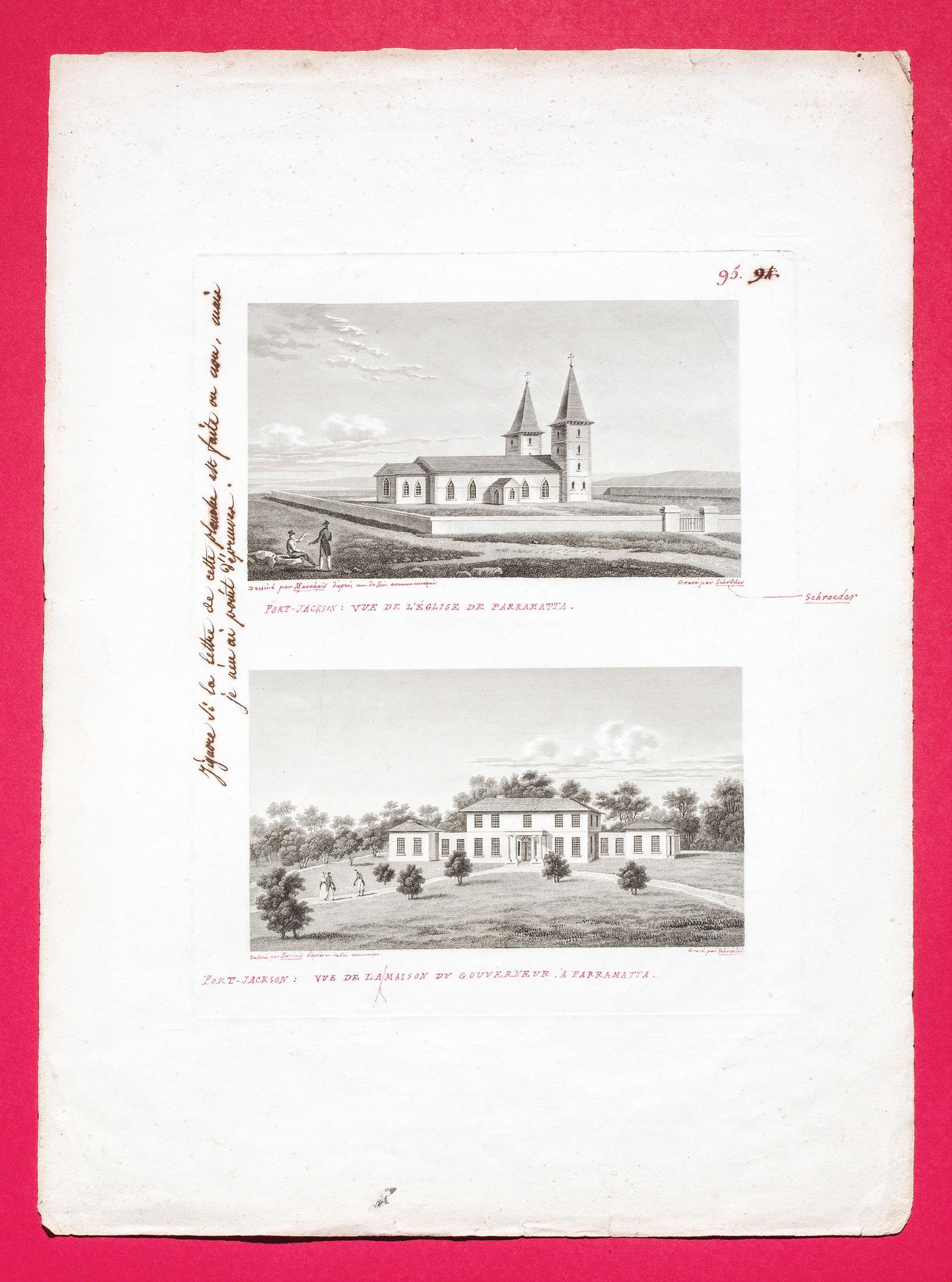
The visit of the Freycinets was significant for both Freycinet and Macquarie. The inclusion in the Government House image of Rose de Freycinet alongside her husband as they are greeted by Macquarie - or his aide-de camp? - is one of very few such depictions: Rose’s clandestine departure on the three-year voyage was never to be officially acknowledged and she is merely glimpsed in official narratives and images of the expedition, though her presence at such moments was to the great diplomatic benefit of the French voyagers.
Provenance: From the family of Louis de Freycinet.
$12,500 [4504620 at hordern.com] see description and illustrations at
Picturing New South WalesHORDERN HOUSE hordern.com
HORDERN HOUSE hordern.com
32. HALSTED, George F. View from Vaucluse.
Oil painting on papered boards, 31.3 x 61 cms. in an early gilt frame, signed lower right F. Halsted. Sydney, circa 1857.
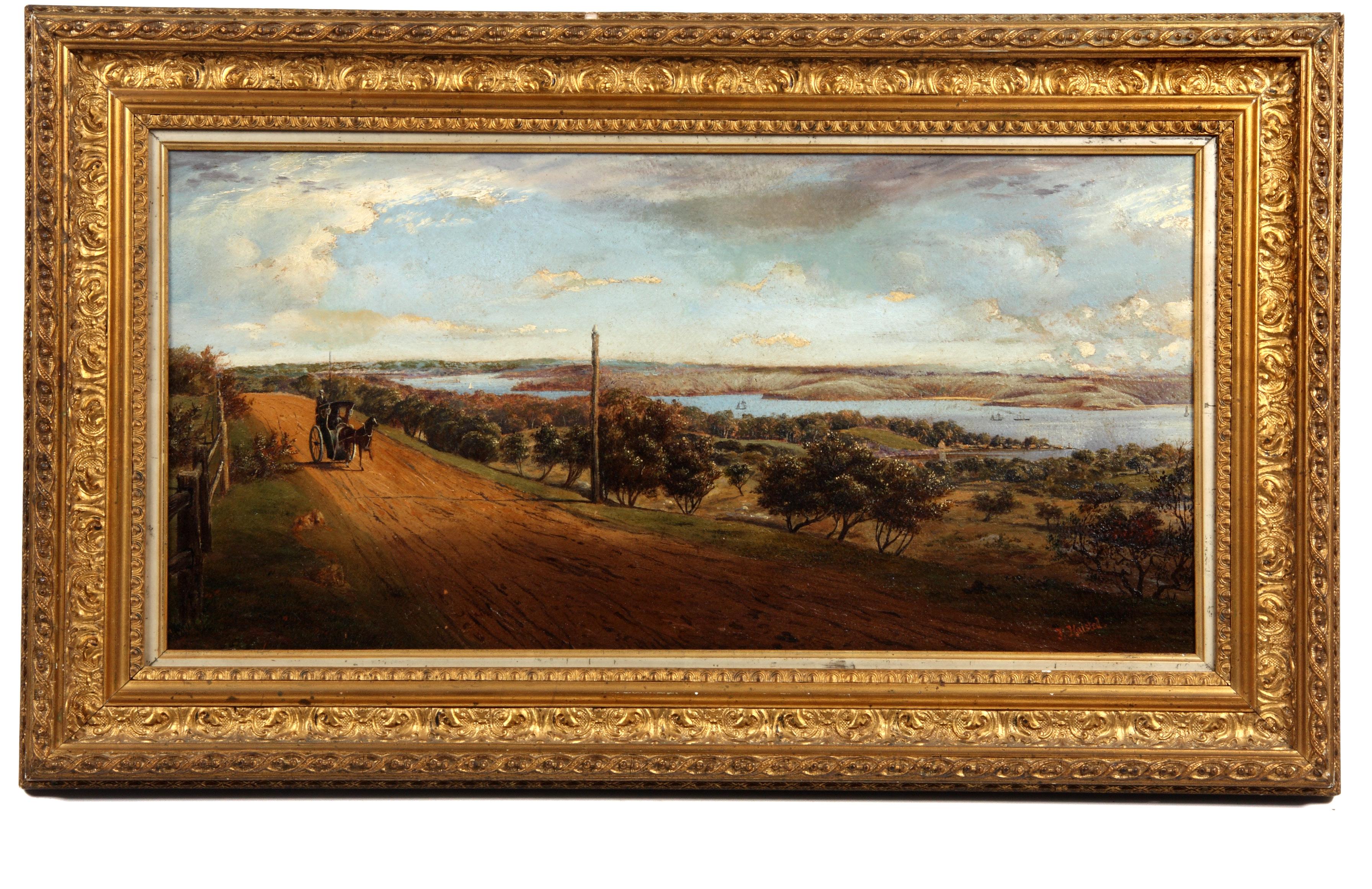
A finely painted panorama looking from Vaucluse towards Mosman. What is now prized harbourside living was in 1857 verdant and empty foreshore land. The artist traces the scene from above Watsons Bay showing the foreshores of Mosman from Middle Head to Cremorne Point. Just a single building is depicted in the leafy cove at Chowder Bay, and several sailing ships can be seen on the water whilst a brougham carriage travels along the dirt track of New South Head Road carrying two gentlemen.
The artist George F. Halsted worked in Sydney from the 1850s to the 1880s. It is thought that he may have been the son of Captain George A. Halstead RN whose sketchbook of English views is in the State Library of NSW. He is known to have exhibited with the Academy of Arts and the Agricultural Society of NSW in 1873, and in 1880 at the first exhibition of the Art Society of NSW. The Sydney Morning Herald wrote that ‘…his landscape paintings, bathed in either bright or highly atmospheric romantic light and treated in a detailed stylistic manner, continued to be admired for their rich natural beauty’. The Art Gallery of NSW had purchased a painting by him prior to 1883 and the Gallery cataloguers labelled him as ‘an accurate and careful draughtsman whose views of coast scenery have been much admired’.
It is this attention to detail that is particularly evident in this picture: Halsted’s view includes the newly installed telegraph poles in New South Head Road Vaucluse but before the accompanying wires have been put in place. The first Australian electric telegraph lines were built to connect the South Head signal station with the city of Sydney, seen here in the distance. Prior to the opening of the electric line on 26 January 1858 a system of semaphore flags was used to relay information on the arrival of ships entering The Heads.
This is a most interesting work that captures the very short time just prior to the introduction of the telegraph in Australia.
Provenance: The Cowlishaw Sale, Sotheby’s Australia 1984, no 233; Private Collection, Sydney.
$8500 [4302341 at hordern.com] see description and illustrations at
Picturing New South Wales
HORDERN HOUSE hordern.com
33. LESUEUR, C.A. (after).
Ansicht von Sidney von der Südseite, und der Mündung des Parramatta Flusses.
Single sheet, 340 x 222 mm., laid paper, featuring an engraved view of Sydney Cove, slight browning, very good. probably Wei mar, circa 1808.
A good view of Sydney Cove closely based on the original engraving in the official publication of the Baudin voyage. It was engraved for the German edition of the Baudin account, with the original French caption slightly enhanced to read “View of Sydney from the south-side with the mouth of the Parramatta River”. The French encampment is in the foreground of the picture, and several of the sailors can be seen working on repairs to their ships. To the left a small group of aborigines is testament to the close quarters in which the French bivouacked, and a reminder of why Nicolas-Martin Petit was able to create his famous suite of portraits of Port Jackson aborigines.
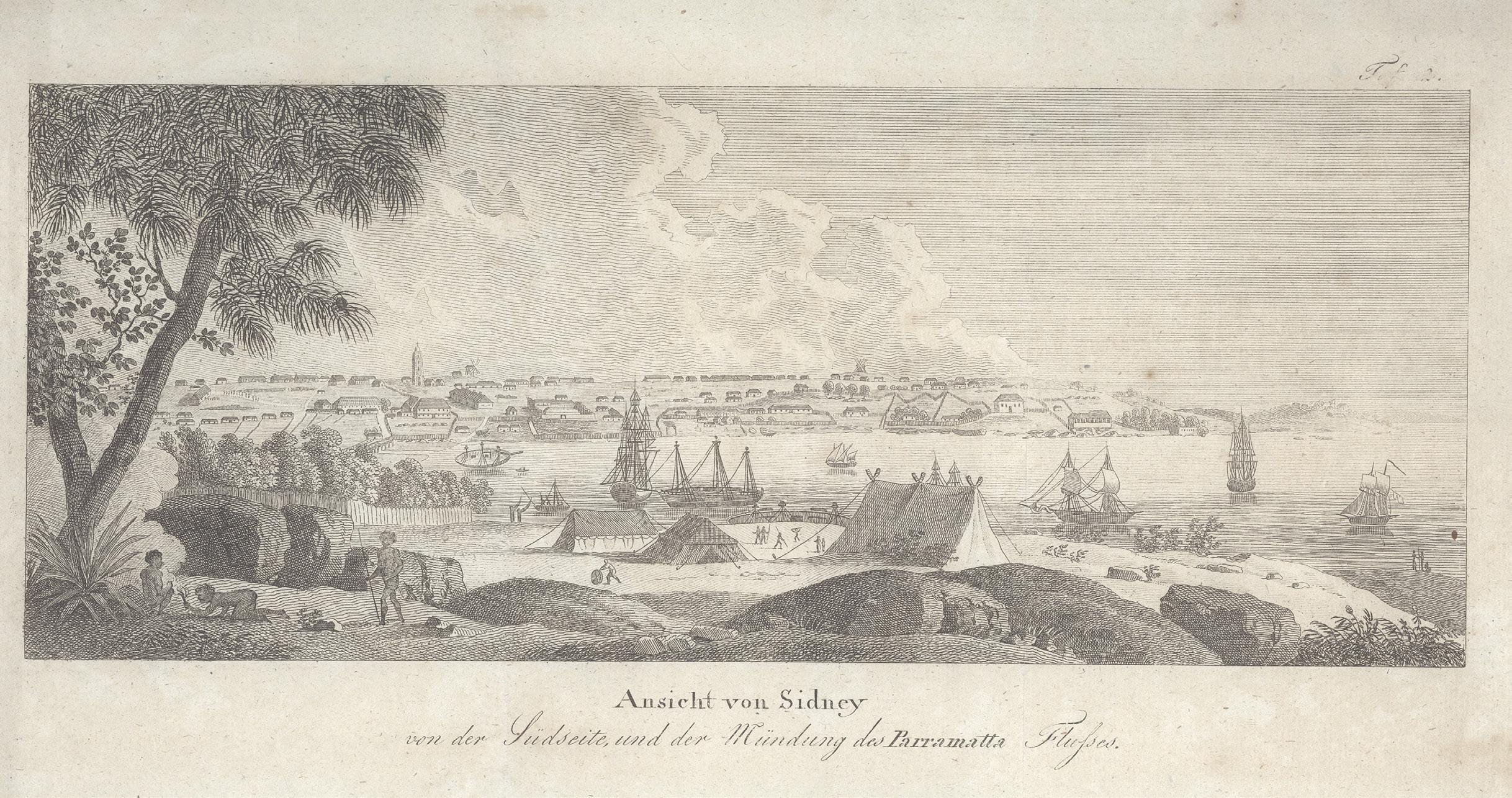
This is quite a rare image; there is a copy in the Nan Kivell collection of the National Library of Australia. The German edition of the Baudin voyage was first published as Entdeckungsreise nach Australien (Weimar, 1808-1819).
Bonnemains, Forsyth & Smith, 16063.2 (original French engraving); First Views of Australia, 65 (original French engraving).
$750 [2909760 at hordern.com] see description and illustrations at
Picturing New South Wales
HORDERN HOUSE hordern.com
34. LYCETT, Joseph. Bathurst Cataract, on the River Apsley.
Hand-coloured aquatint, 265 x 355 mm., mounted. London, J. Souter, November 1824.
Lycett’s charming, highly-coloured views are justly famous for providing a remarkable visual record of Australia in the early colonial period.
Lycett had arrived in New South Wales as a convict in 1814. Trained as a portrait and miniature painter in Staffordshire, his services as a professional artist were much in demand and he was soon working for the publisher Absalom West. He was appointed artist to Major-General Macquarie, the governor of New South Wales. Impressed with Lycett’s talents, Macquarie sent three of his drawings to Earl Bathurst, Secretary of the Colonies, who, it is supposed in payment, granted a pardon to the artist.
This attractive hand coloured aquatint is from Joseph Lycett’s Views in Australia… published in London in 1825. The following description is taken from the published book “the sublimity and grandeur of the Scene… surpasses all description. Mr. Wentworth in his “Account of Australia” describes it as “a Cataract far surpassing Beckett’s Falls in sublimity; one in fact of which few countries can boast a parallel.” “This most magnificent Fall, and the River itself, were respectively named Bathurst and Apsley in honour of the noble Secretary of State for the Colonies” (John Oxley).
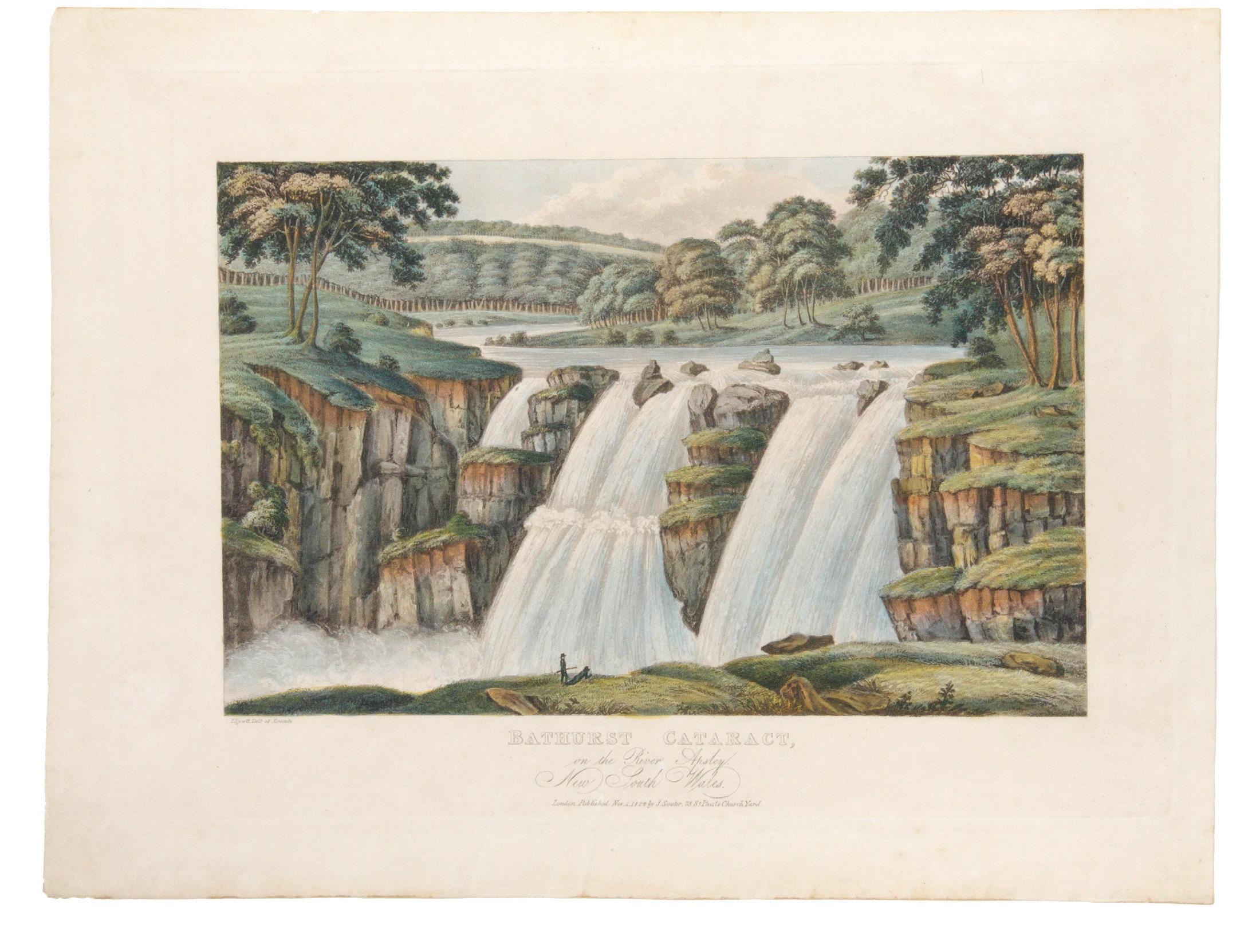
Lycett’s Views… a work memorably celebrated by the late Edmund Capon in the ABC docu mentary “Art of Australia”, commenting that ‘when these pictures were first seen in Britain, it was something of a revelation, a little bit like receiving postcards from another planet’.
$2250 [4007917 at hordern.com] see description and illustrations at
Picturing New South Wales
HORDERN HOUSE hordern.com
35. [MANN] EYRE, John. New South Wales. View of Sydney from the West Side of the Cove No. 1 [and] No. 2.
Pair of uncoloured aquatints joined as a panorama as intended, 340 x 980 mm; in original bird’s-eye maple frame. London, John Booth Duke Street Portland Place, 4 June 1810.
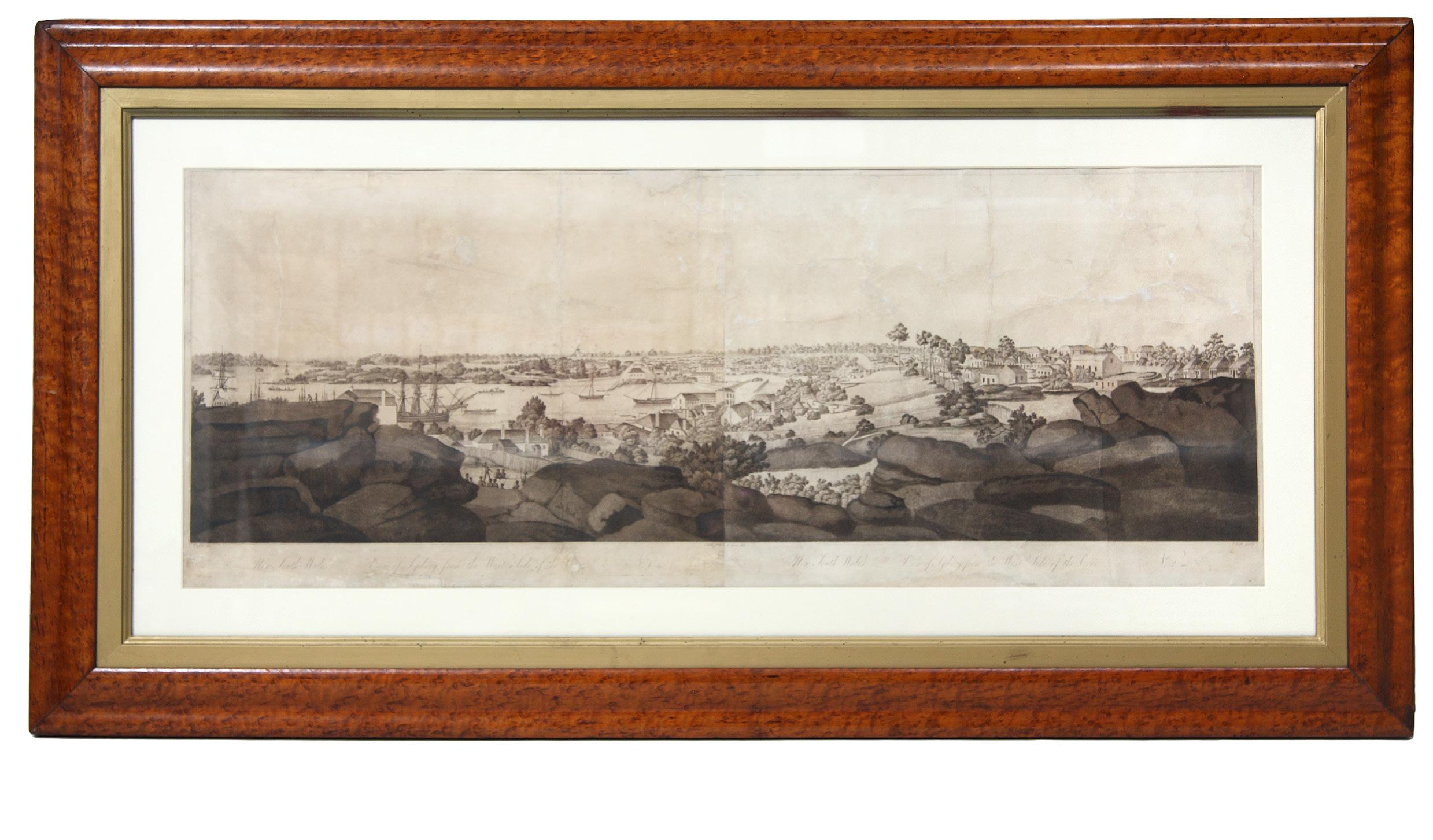
A rare panoramic view of Sydney Harbour. John Eyre arrived in New South Wales in 1801, transported for seven years for housebreaking. The first of his drawings which can be dated was done in 1804 soon after he received his conditional pardon. His best known work is this majestic panorama; the Sydney he portrays (fancifully) is a neat and orderly town where the Aboriginal inhabitants live with dignity and “peace, order and good government reign…” (The Antipodes Observed, 64). The focus is very much on the Harbour where the maritime activity was the dominating element in Sydney at the time. Eyre produced four images: two views from the West side of the Cove and two from the East; they were at least partly intended to illustrate David Dickinson Mann’s “Present Picture” of 1811, but are hardly ever to be found with copies of the book. Offered here are the two views from the West.
Eyre’s original painted panorama was exhibited in London in 1810 and the aquatint engravings were published soon after. The paintings had been taken back to England by the convict Mann, when he returned to England after his pardon on the same ship as Colonel George Johnston. In fact, Mann was one of the men who gave evidence at Johnston’s court martial in 1811. Mann arranged for the exhibition of Eyre’s paintings, and then their publication. They represented the first such panorama of Sydney to be shown in London, and also the first to be published.
First Views of Australia, pp. 130-131.
$8500 [4202818 at hordern.com] see description and illustrations at
Picturing New South Wales
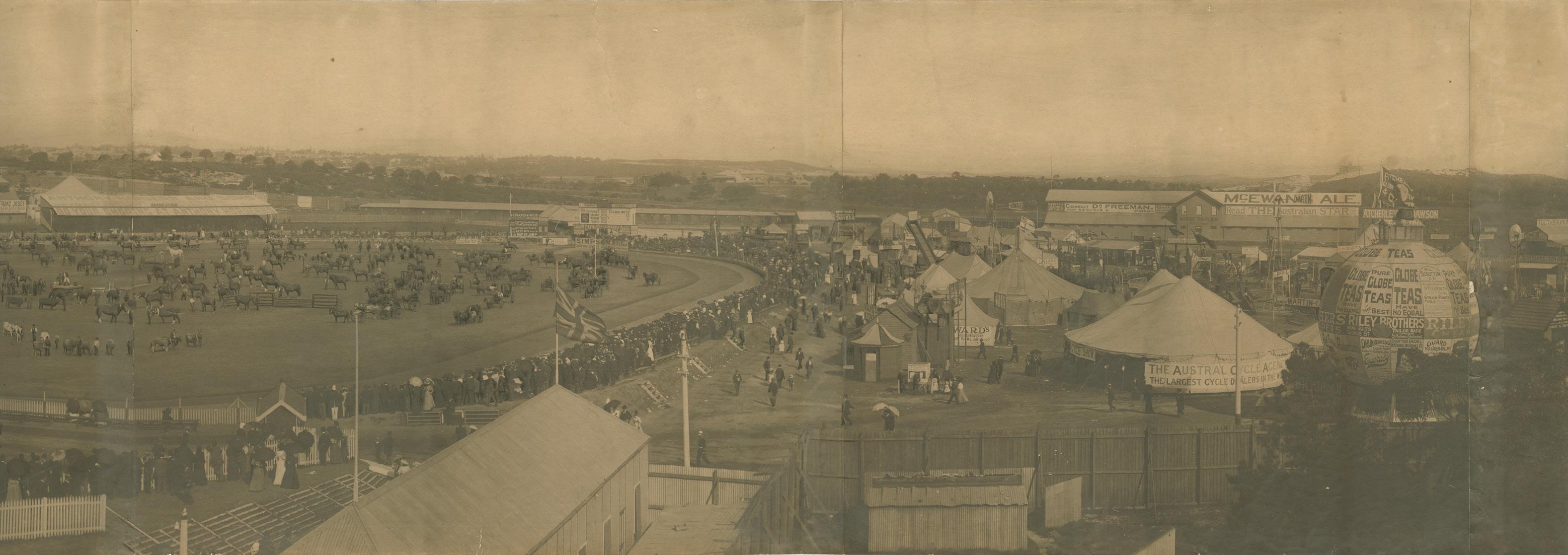
Royal Agricultural Show of 1897.
Five-panel panoramic photograph, highlighted by hand, laid down on canvas, 390 x 3490 mm.; some wear and staining to can vas backing, very lightly cracked at one joint, but overall in very good condition. Sydney, N.S.W. Government Printer, 1897.
A rare very large panoramic photograph of the Royal Agricultural Show of 1897. The image is taken during the grand parade with the scoreboard in the background revealing details such as the fact that the Tattersalls Plate was due to be run at 2.30 pm, and the “Best Boy” rider to follow at 3. It is such extraordinary detail, displaying all of the activity and bustle of the show as well as the great splendour of the Moore Park grounds, that gives the image its real charm. In the background, for instance, the Cinematographe appears to be doing a good trade, while the hoardings and billboards are full of familiar names from the period, including Fry’s Cocoa, Tooths Ale, and the omnipresent Anthony Horderns (Samuel Hordern himself, as the printed list of office holders attests, was a vice-president of the RAS).
The society which would become the Sydney Royal Agricultural Society commenced opera tions in 1822, when a group of leading citizens including Samuel Marsden and John Piper decided to further ‘the quality of Australia’s primary production by means of contests and competitions’. Their first show was held in Parramatta the following year, but by 1836 waning support led to the Society lapsing. It was not until they reformed in 1857 that the group really gained momentum, with exhibitions held at Parramatta until 1868, followed by a 13-year stint at Prince Alfred Park. Finally in 1880, with funds in disarray, the Society accepted government support, and was able to move to the famous venue at Moore Park, home of the show from 1882 through to 1998.
This image was taken in 1897, the culmination of a decade of great expansion for the show. In 1891, Queen Victoria granted the Society permission for the use of the “Royal” prefix. Perhaps even more significantly, 1894 also saw the introduction of electric lighting, meaning that the show could open for the first time at night (although the other great innovation, showbags, appears to have not been introduced until around 1900).
HORDERN HOUSE hordern.com$6500 [3504681 at hordern.com] see description and illustrations at Picturing New South Wales
HORDERN HOUSE hordern.com
37. POTTER, Charles. Photographs of New South Wales. Oblong folio, 207 mounted photographs in splendid substantial original album of dark blue morocco, ornately gilt. N.S.W.Government Printing Press, circa 1893.
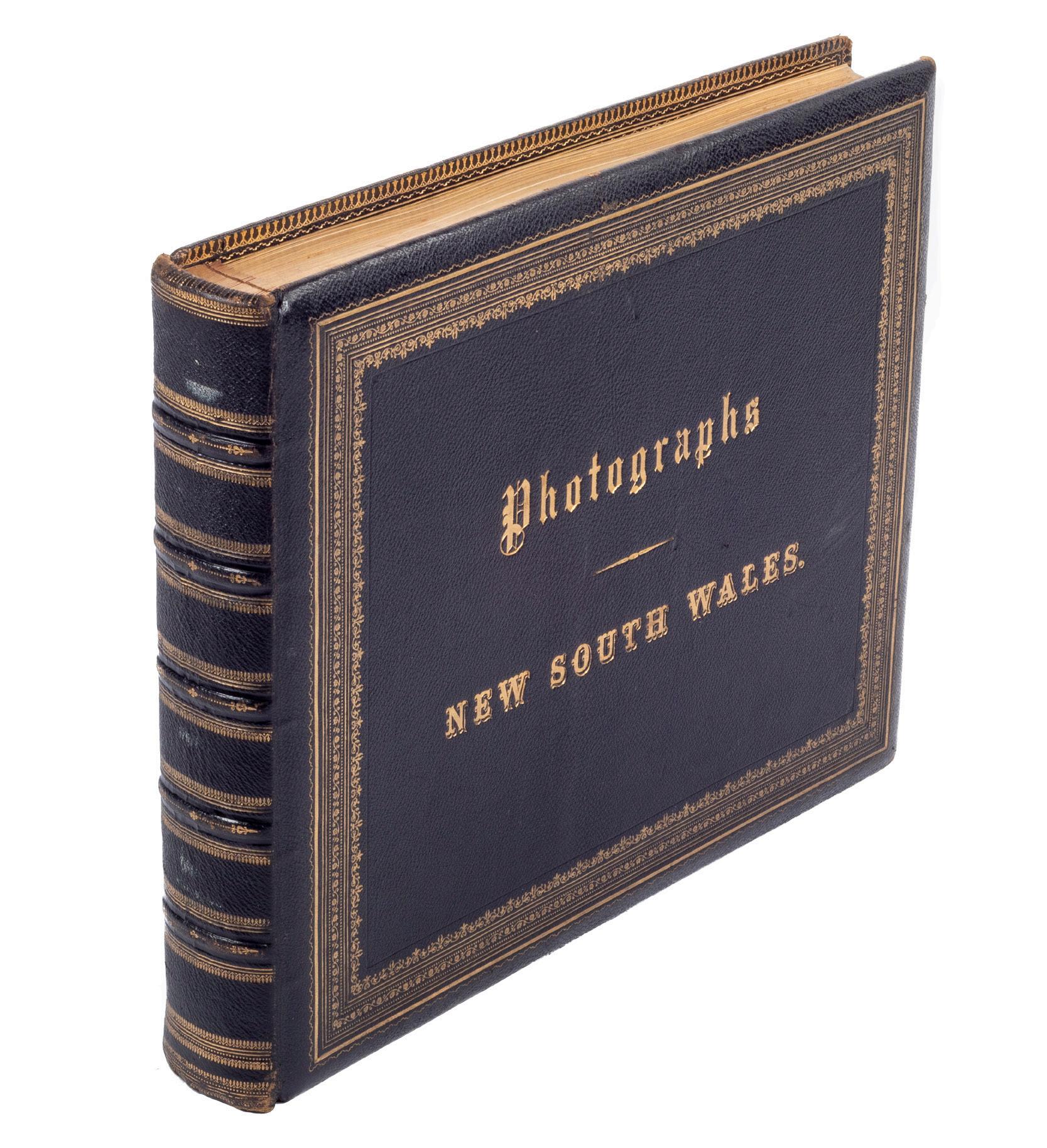
Under the direction of the Government Printer, Charles Potter, this rare, massive and sumptuous album of early Sydney was produced at the artistic pinnacle of government printing and binding. It contains 80 photographs of early colonial history, including colonial art, 100 photographs of New South Wales, and 27 photographs from drawings by John Rae. The album showcases New South Wales as a hub of the British Empire and documents Sydney in wonderful style as a beautiful and thriving metropolis.
The photographs capture the harbour and waterways as thoroughfares for industry, and feature impressive architectural and municipal views, together with striking topographical views of the Nepean River and the Blue Mountains and further afield.
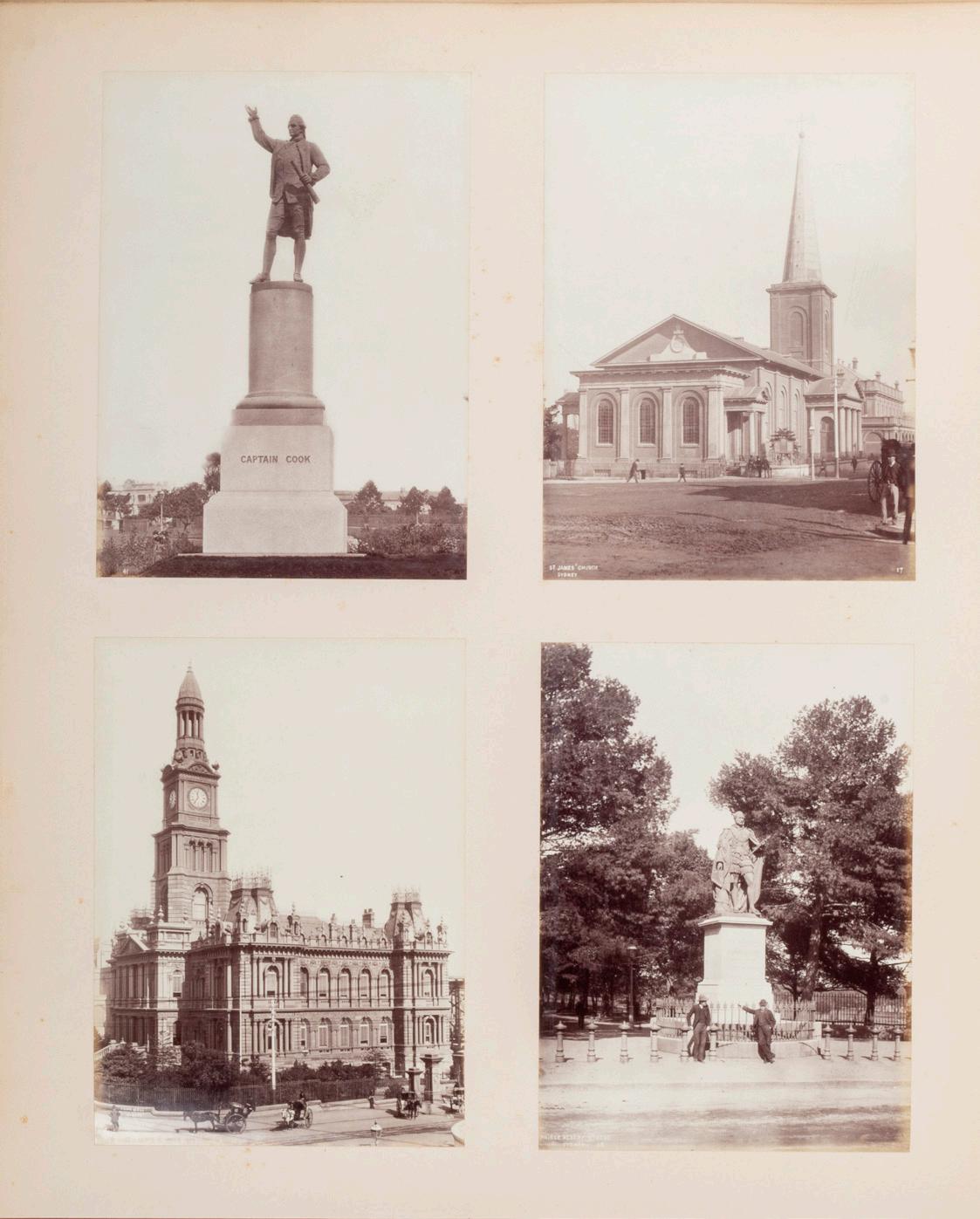
A series of 27 photographs showcases the work of John Rae (1813-1900), a talented amateur artist actively involved in the use of photography. As early as 1855 he gave two lectures on the subject at the Sydney School of Arts. Several of Rae’s early drawings are thought to have been done with the aid of photography, an interest he shared with his friend John Skinner Prout. The Sydney Morning Herald mentions in September 1855 that Rae had recently built a camera obscura on the roof of his house “Hilton” in Darlinghurst. In 1900 the Bulletin praised his keen artistic perception and considered his collection of views of Sydney as one of the best extant. His sketches were sent to the Calcutta Exhibition in 1883 and to the Centennial International Exhibition in 1888 and gained much favourable comment.
$9000 [5000655 at hordern.com] see description and illustrations at
Picturing New South Wales
HORDERN HOUSE hordern.com
38. PROUT, John Skinner. New Government House, Sydney and Macquarie Fort. Lithographic view, 185 x 295 mm; mounted. Sydney, J.S. Prout, 1842.
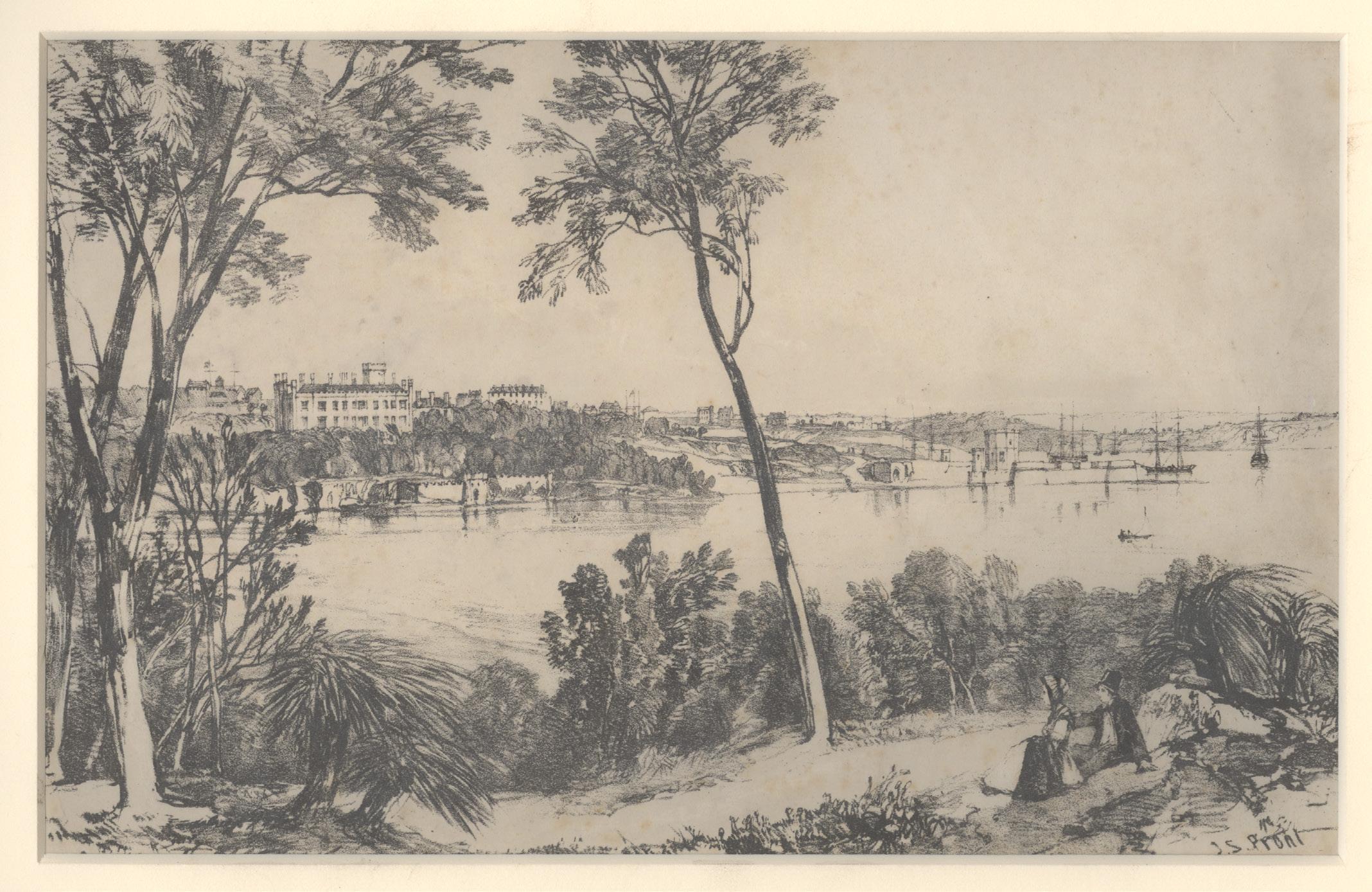
An idyllic view of Government House and its castellated bathing house seen across Farm Cove, from the Botanical Gardens. The signal station on Fort Phillip Hill is in the background to the left and Macquarie Fort to the right. The view was one of the suite of lithographs which Prout issued in Sydney Illustrated.
John Skinner Prout arrived in Sydney in 1841 and spent three years lecturing on art, working as a scene painter and art teacher. He made extensive sketching tours of New South Wales, before travelling to Van Diemen’s Land in January 1844 where he worked for four years before returning to England.
$1450 [2908506 at hordern.com] see description and illustrations at
Picturing New South Wales
HORDERN HOUSE hordern.com
39. [SYDNEY] RAWORTH, William Henry. Bear Island Botany Bay.
Tinted lithograph, 192 x 340 mm., mounted. [Sydney], S. Sedgefield (signed as lithographer), circa 1870.
A charming separately issued lithograph showing Bear Island before it was joined to the mainland at La Perouse, Sydney and prior to the construction of a fort built in the 1880s to ward off the perceived threat of an attack on Sydney by Russian forces. The fort still stands today and is connected to the mainland by the original wooden bridge. Although Raworth uses the name Bear Island on this lithograph, it is generally called Bare Island, as described in Cook’s journal in 1770.
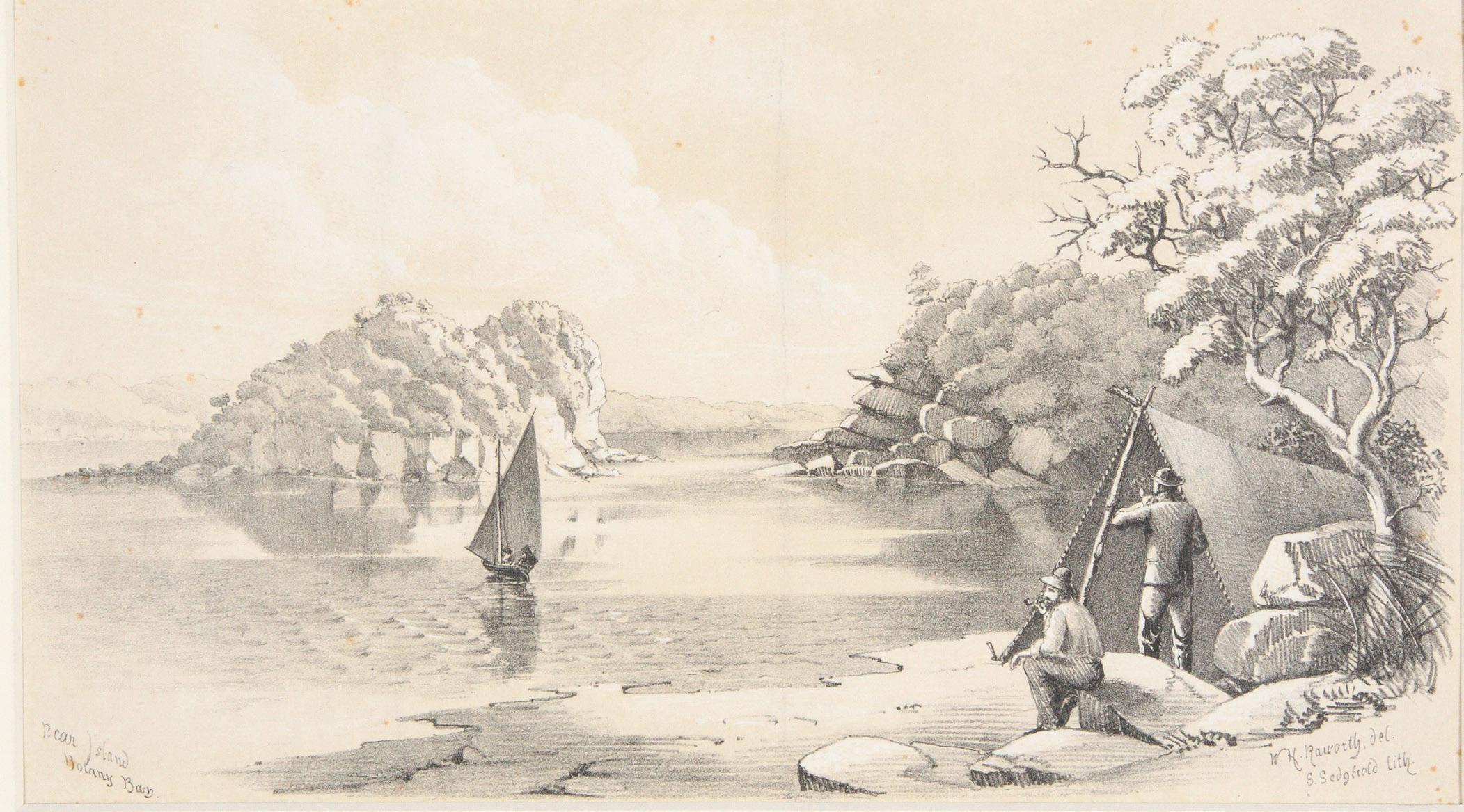
William Henry Raworth (c.1820-1905), who arrived in Sydney from England around 1867, produced several engravings of the Sydney area, as well as landscapes in watercolour. He was involved in a number of exhibitions including the second Annual Art Exhibition at the New South Wales Academy of Art in 1873. At this time one of his pictures sold for the substantial amount of 42 pounds to the Art Gallery of New South Wales.
This view, tranquil and picturesque, is in the best Raworth tradition.
$1450 [4504361 at hordern.com] see description and illustrations at
Picturing New South Wales
HORDERN HOUSE hordern.com
40. [SYDNEY] RAWORTH, William Henry. Rushcutters’ Bay Low Water.
Tinted lithograph, 192 x 340 mm., mounted. [Sydney], S. Sedgefield (signed as lithographer), circa 1870.
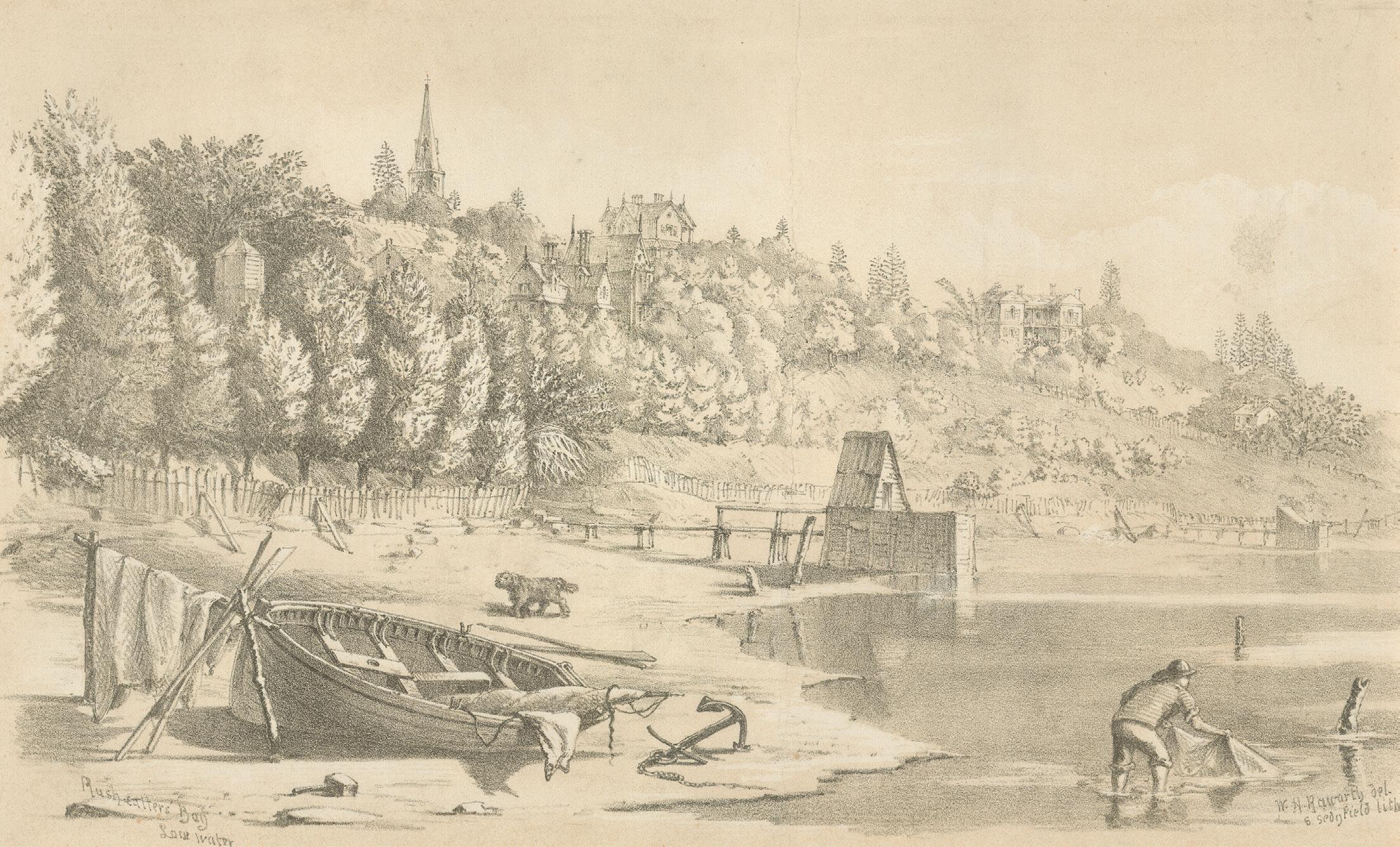
An unusual and separately issued view of Rushcutters Bay, Sydney. This view, looking up from the Harbour, shows Darling Point populated by only a few stately villas. In the background can be seen the spire of St Mark’s Church while in the foreground is a fisherman examining his catch on the present day site of the Cruising Yacht Club of Australia.
His work has both intimacy and serenity, and his Sydney lithographs are quite scarce.
$1450 [4504362 at hordern.com] see description and illustrations at
Picturing New South Wales
HORDERN HOUSE hordern.com
41. [SYDNEY ENGRAVERS] CARMICHAEL, John; MACLEHOSE, James; PROUT, John Skinner.
Four early Sydney engravings handsomely framed.
Four original engravings all approx 10.5 x 17 cm in handsome gilt frames. Sydney, various, circa 1835 to. 1840
Four engraved views representative of Macquarie era Sydney, the work of distinguished Sydney engraver, painter and teacher John Black Carmichael (c.1803-1857), Sydney printer James Maclehose, and a view of St. James’s Church by colonial artist John Skinner Prout (18051876. Carmichael is also notable for having been one of the earliest free emigrant artists to pursue a lifelong professional career in New South Wales. (DAAO online).
The views are:
Irrawang Vineyard & Pottery: one of the earliest depictions of an Australian vineyard; Lord’s Mill Botany Bay. Simeon Lord (1771-1840) established his watermill at Botany Bay, New South Wales, to provide the power for the manufacture of shoes, hats, harness and textiles. The watermill was still operating in 1855. Mill Pond and Engine Pond remain as reminders of Lord’s industry;
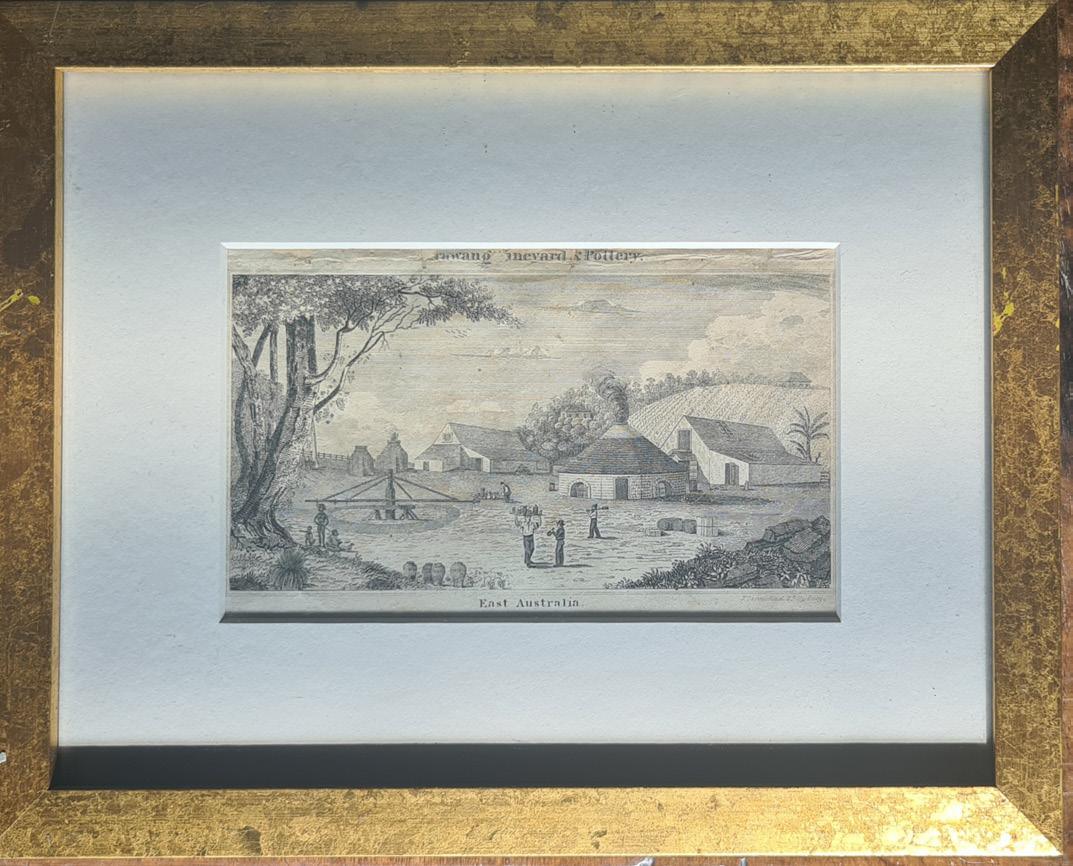
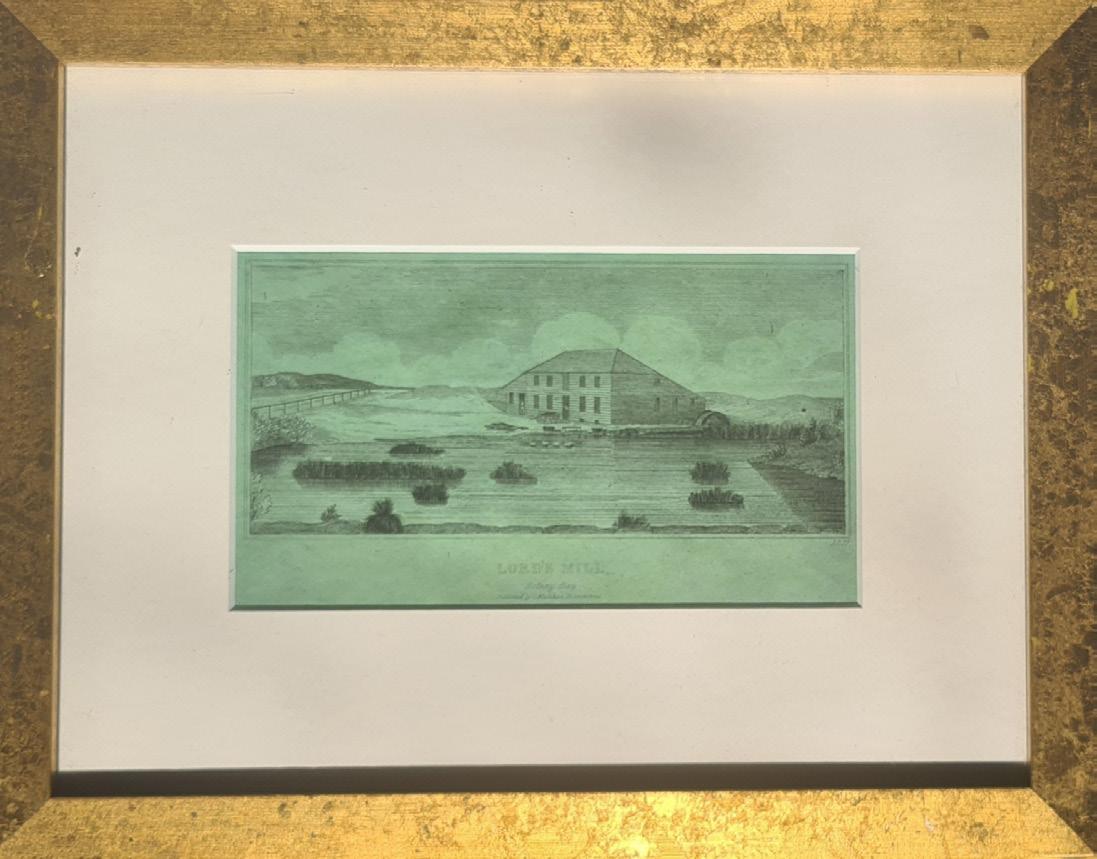
Normal Institution. Hyde Park Sydney. Rare early engraving of Henry Carmichael’s school established in 1835 in Elizabeth Street; St. James’s Church, Court Houses, Sydney. $2000 [5000804 at hordern.com] see description and illustrations at
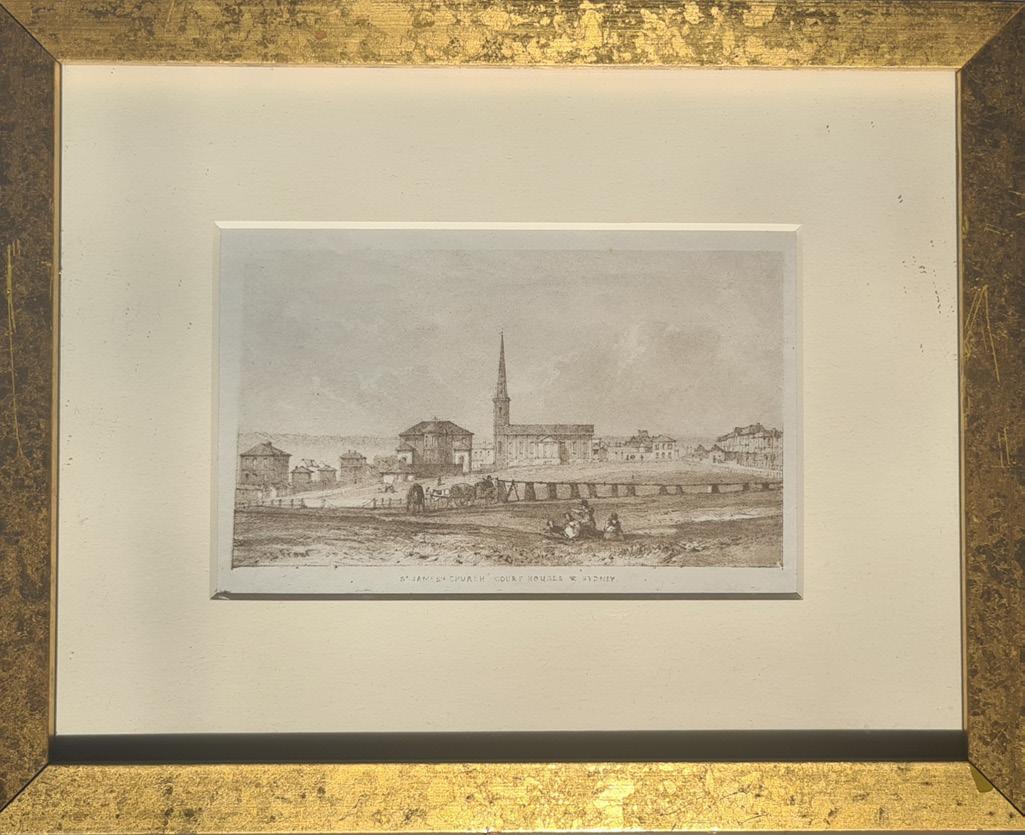
Picturing New South Wales
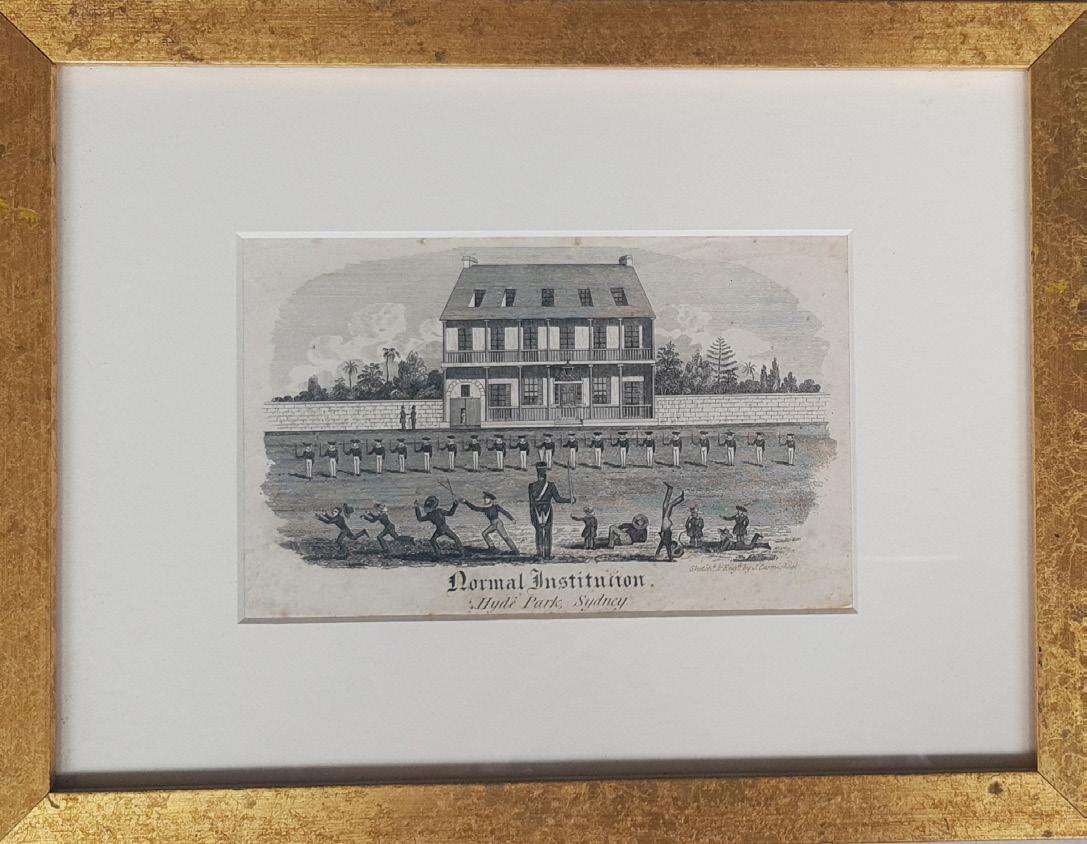
HORDERN HOUSE hordern.com
42. TOUANNE, Vicomte Edmond de la (after) Vue Prise dans les Jardins du Gouvernement à Sidney. Lithograph, 190 x 280 mm with generous margins; mounted. Paris, Bulla, 1837.
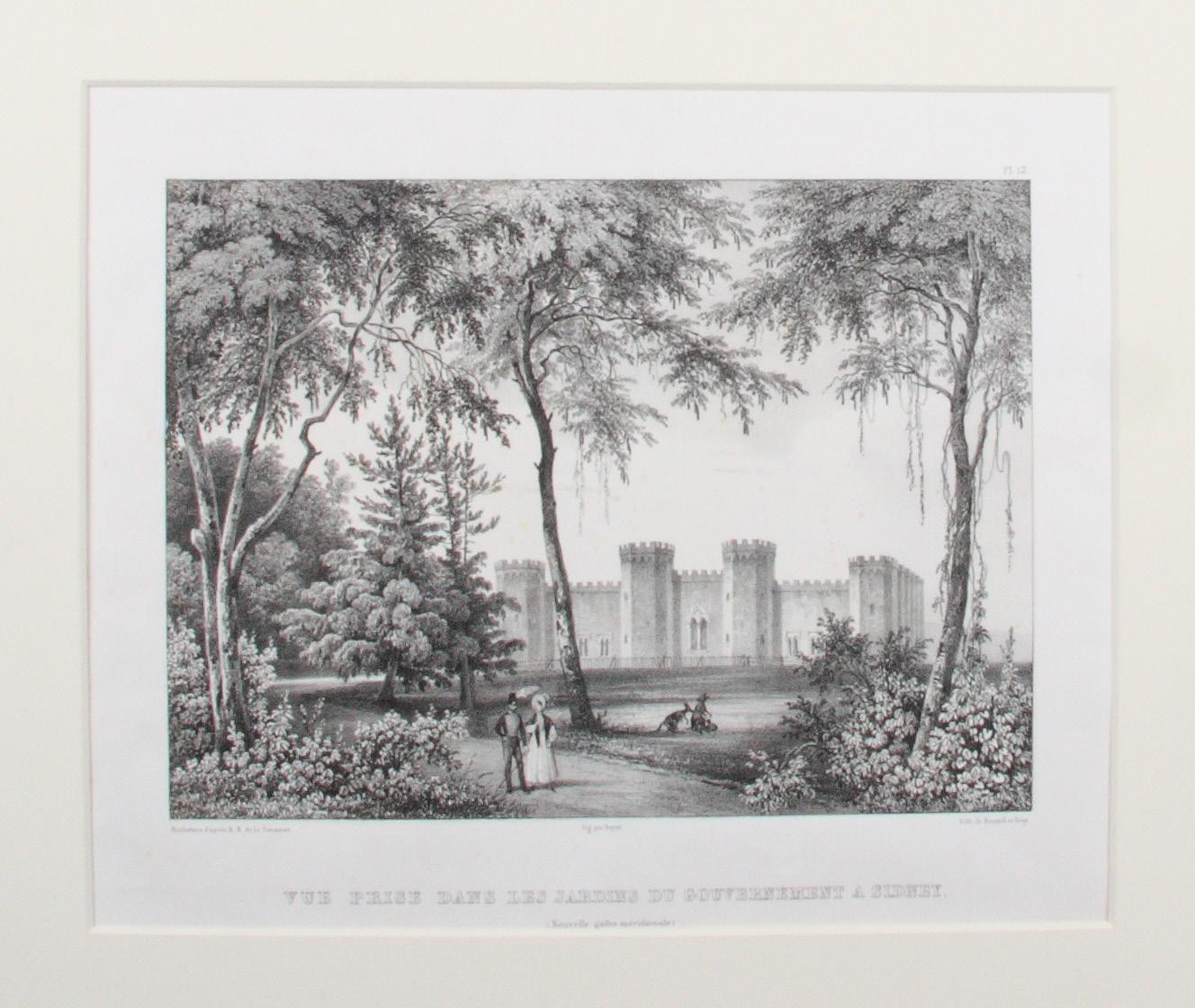
An excellent early view of Government House and its gardens, based on an original drawing by Viscount de la Touanne, a French aristocrat attached to Bougainville’s expedition which visited Sydney in 1825 in the Thetis and Esperance. As Dyer notes (The French Explorers and Sydney, Brisbane, 2009, p.107), this second visit by Bougainville to the colony was one of great happiness; there were many invitations issued and Touanne would often accompany Bougainville to dinners and visits to country homes. When time permitted Bougainville, as probably his countrymen also did, would walk in the gardens of Government house and along Mrs Macquarie’s Road. The French officer accompanying an elegantly dressed Sydney lady in the foreground of the image is echoed by a family group of kangaroos on the lawns.
This lithograph appeared in de la Touanne’s Journal de la navigation autour du globe de la fregate la Thetis et de la Corvette l’Esperance (Paris, Bulla, 1837).
$1250 [4504178 at hordern.com] see description and illustrations at
Picturing New South Wales
HORDERN HOUSE hordern.com
43. [WALLIS] PRESTON, Walter.
A View of Dawes Battery at the Entrance of Sydney Cove.
Engraved view measuring 230 x 335mm. (plate size), early handcolouring. London, Rudolph Ackermann, dated September 1, 1820.
An early engraved view of Sydney Cove, itself the extraordinary outcome of the fruitful relationship between two convict engravers, Walter Preston and Joseph Lycett, and the artistically talented army officer Major James Wallis.
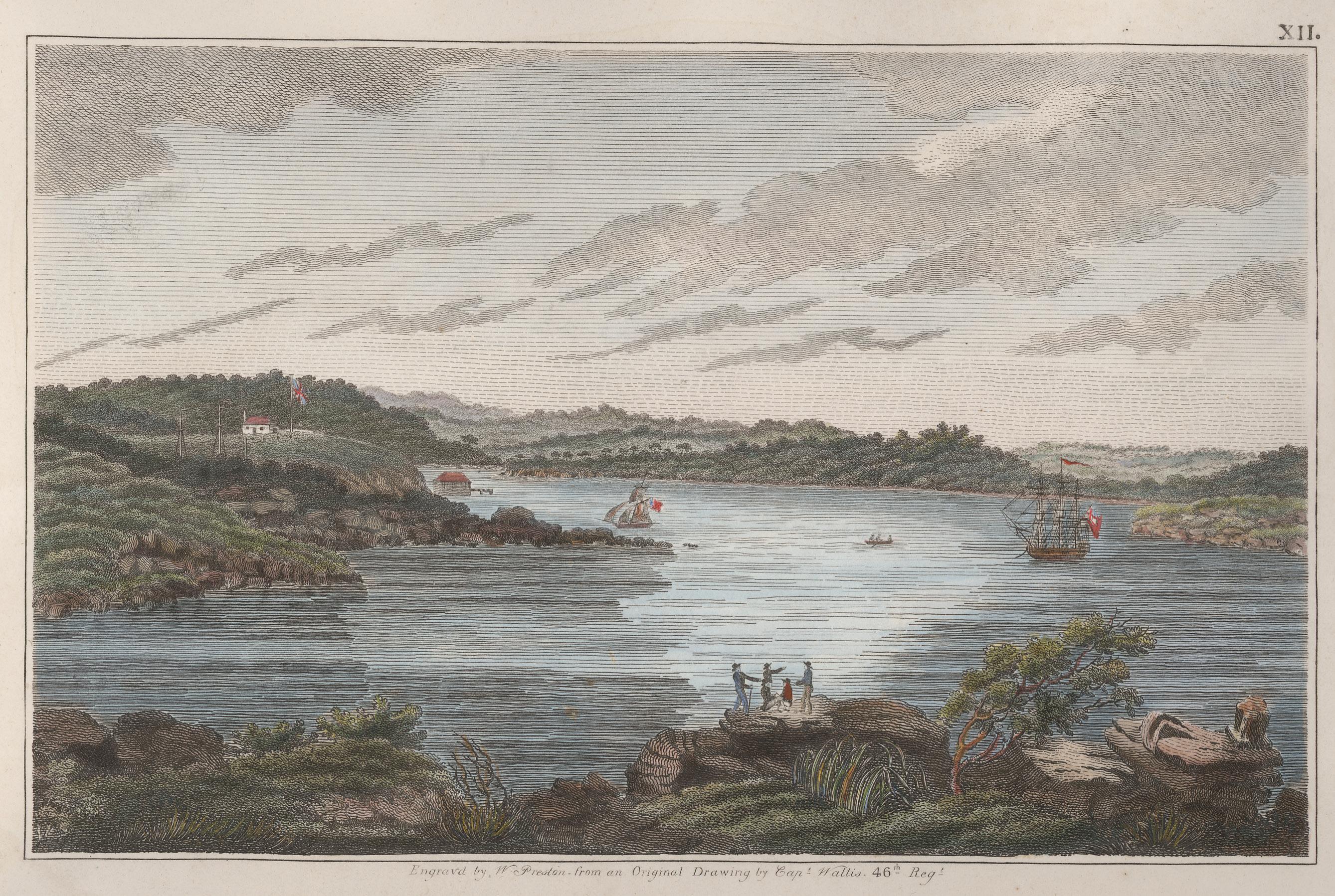
This plate forms the frontispiece of Wallis’ fine album of Australian views titled An Historical Account of the Colony of New South Wales published by Ackermann in London in 1821. The plate was engraved by the convict artist Walter Preston whose considerable talents came to the attention of Major Wallis, then commander of the convict settlement at Newcastle. At the time, Newcastle enjoyed a fearsome reputation for as a place for secondary punishment and was described by a contemporary officer as ‘the Hell of New South Wales’.
For many years the attribution of Wallis as the artist of the views in An Historical Account of the Colony of New South Wales was a matter of historical conjecture (the implication being that he had appropriated the work of Preston and Lycett). However, the recent revelation of original watercolour material by Wallis establishes him as the artist. Not that this fact diminishes the achievement of the convict engravers: Preston was tasked with working upon the only copper sheets available, manufactured for sheathing the hulls of ships, a difficult material softer than standard engraving copper.
Ultimately, both Preston and Lycett were pardoned by Macquarie on Wallis’ recommendation, in no small part because of their work on this book. When Wallis departed Australia in 1819 he took the plates with him to London where this book was published by Ackermann, com plete with an introductory history of the colony and a map of Port Macquarie by the surveyor John Oxley.
Australian Rare Books pp.285-289.
$1750 [3101980 at hordern.com] see description and illustrations at
Picturing New South Wales
HORDERN HOUSE hordern.com
FROM THE FIRST BOOK OF ENGRAVED VIEWS MADE IN THE NEW COLONY.
44. [WALLIS] PRESTON, William.
Vaucluse Bay. Port Jackson. New South Wales. Handcoloured engraving, 230 x 335 (plate size), mounted. London, Rudolph Ackermann, 1820.
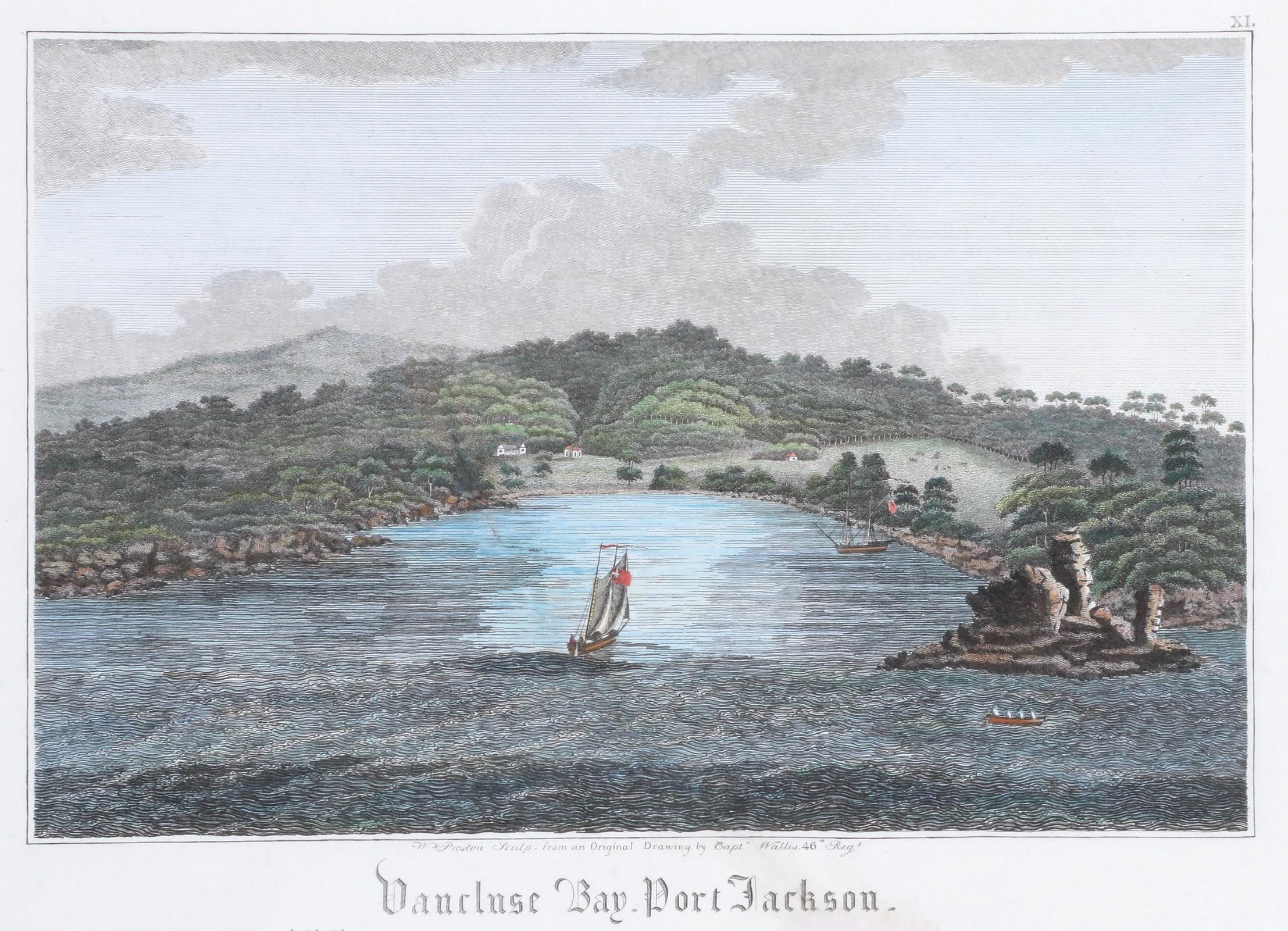
Very rare and attractive view of Vaucluse, from Wallis’s Historical Account of the Colony,the first view book engraved in Australia. This work was an extraordinary collaboration between Major James Wallis, then commander of the convict settlement at Newcastle, and the convicts under his command, notably the artists Walter Preston and Joseph Lycett.
Two of the central figures in the creation of the views were Preston and Lycett; Preston had earlier worked with Absalom West on his famous views of Sydney, while the latter had only recently been sent to Newcastle after his involvement in the forging of bank drafts in Sydney. At the time, Newcastle enjoyed a fearsome reputation for brutal secondary punishment and was described by Lieutenant Purcell as “the Hell of New South Wales.”
Wallis had arrived in the colony in 1814 and proved a successful commandant at Newcastle, transforming the rough convict outpost into an ordered town, mirroring on a smaller scale what Macquarie had achieved in Sydney. Wallis focused the considerable artistic skills of the forgers to produce this series of skilled and remarkable views, created with great difficulty on the only copper sheets available in the colony, the softer sheets intended for sheathing the hulls of ships.
$2200 [4504616 at hordern.com] see description and illustrations at
Picturing New South Wales
Three fine and exceedingly rare views from the series published by Absalom West, one of the most fascinating and enigmatic projects of the Macquarie era. All are taken from the First Series of Views dated 30 November 1812, although known not to have been actually offered for sale until January 1813.
West was a successful emancipist businessman and very well-connected, associating with everyone from William Bligh to John Lewin, and particularly friendly with the artists John Eyre and Richard Browne. West clearly had great vision as a promoter and organiser, able to imagine a vast project which relied equally on the artistic skills of some of his close friends and on the technical ability of the two newly arrived convict artisans who prepared all of the plates, Walter Preston and Philip Slaeger. Although West’s Views are much studied, and despite their acknowledged significance in terms of the development of home-grown artistic publishing, they remain something of a mystery. Indeed, on paper, it is difficult to think of a more unlikely project: West, who had only been given his ticket-of leave in 1810 after a 14-year stint as a convict brewer, suddenly announces, without notice or much fanfare, that he will be publishing a series of large-format views of New South Wales, to be sold at his pub at the end of the road to Dawe’s Point, the “Blue Lion Inn”. The views are the earliest locally-printed views of Australia and are now recognised as emblematic of a new artistic spirit in the Colony: in Roger Butler’s historical survey of early Australian printing, for example, West’s work takes pride of place alongside the equally rare Lewin’s Birds of New South Wales (1813). Not only are the engravings of remarkable beauty and historical importance, any examples of West’s work are only very rarely offered for sale.
For separate descriptions and further details please follow the link.
45. Botany Bay Harbour, in New South Wales: with a View of the Heads.
One of the most important of the West engravings because it is clearly meant to set the tone for his entire project. While Botany Bay in 1812 was almost completely undeveloped, meaning that the scene has a real historical veracity, there is an inescapable sense that the view is almost meant to hark back to the earliest settlement and to the “Botany Bay” of popular imagination. West has a single ship standing out through the Heads and this visually underlines the remoteness of the colonial project. The foreground is dominated by two groups of Aboriginal figures with, just offshore, two small canoes. There is one notably curious aspect of the family group on the left of the scene, comprising a man, a woman with a small child on her shoulders and holding some fish and an older child standing just behind them.
46. View of a part of the Town of Parramatta in New South Wales Taken from the North Side of the River…
Number 11 in West’s series, published on 30 November 1812. It offers a dramatic depiction taken from the north shore of the Parramatta River, looking southward towards the main part of the settlement and is an honest appraisal of how the town actually looked: the field of stumps points to the rapid rate of expansion at the time. The figures grouped in the foreground make a curious tableau with, at left, a settler who is apparently a type of shepherd, and a grouping of five Aboriginal figures in the middle ground. West’s engraving portrays the “real” Parramatta of 1812;
47. A native camp in Cockle Bay, New South Wales, with a View of Parramatta River. Taken from Dawes's Point…
This fine and exceedingly rare engraved view of Cockle Bay – present day Darling Harbour, is an idyllic image and shows the site of James Cook’s first landing on the Endeavour. It was also the area that the British government planned to use for the first penal colony. Later the site of the settlement was changed to Sydney Cove but for a very long time the words “transportation to Botany Bay” were a metonym for transportation to any of the Australian penal settlements. Dedicated to Macquarie, West’s impressive and creative work, the series of Views that he commissioned, was the first artistic publication in New South Wales and would have a long lasting influence on colonial art.
45. WEST, Absalom, publisher. Botany Bay Harbour, in New South Wales: with a View of the Heads. $55,000 [4504661at hordern.com]
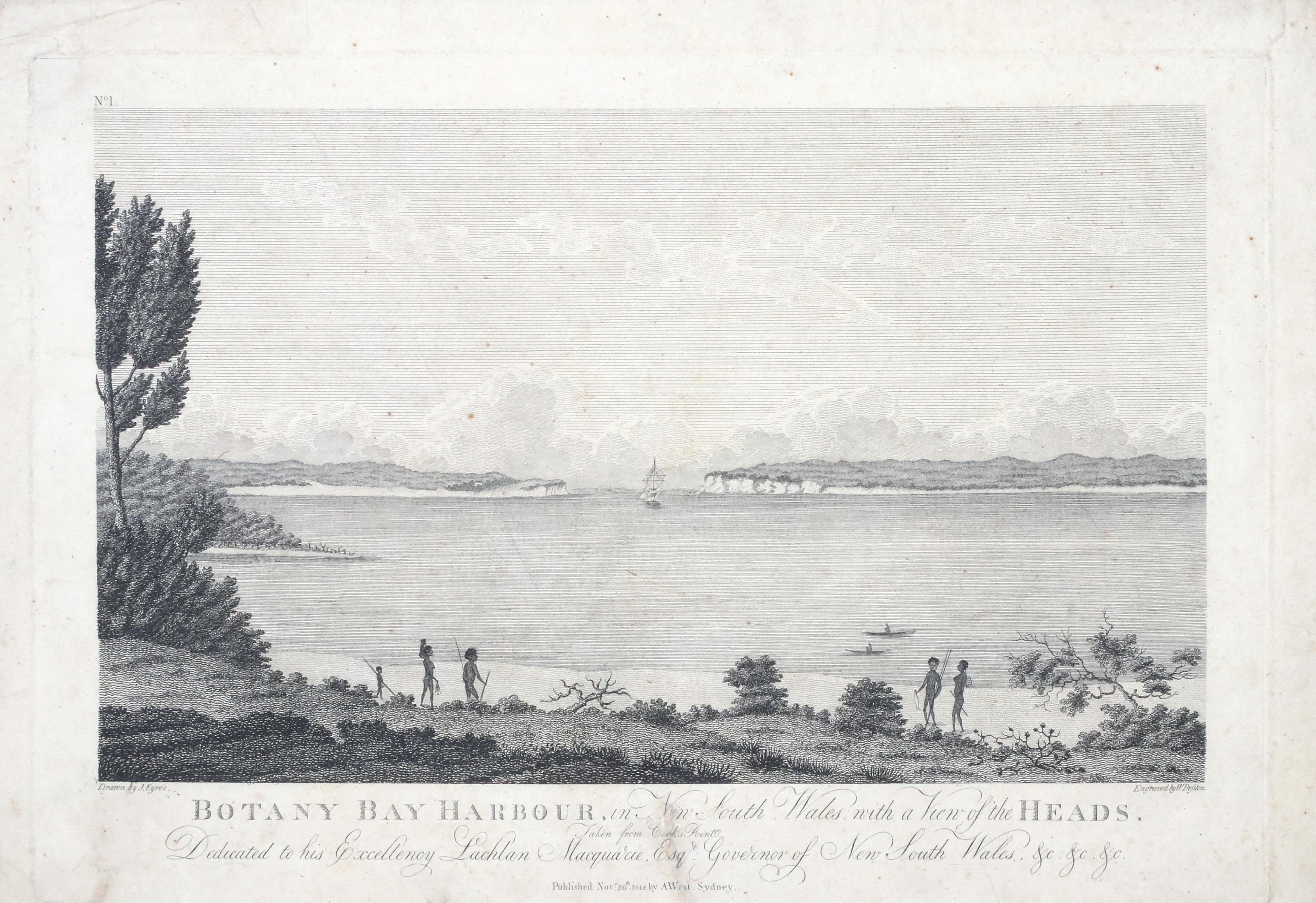
46. WEST, Absalom, publisher. View of a part of the Town of Parramatta in New South Wales Taken from the North Side of the River… $48,000 [4504651 at hordern.com]
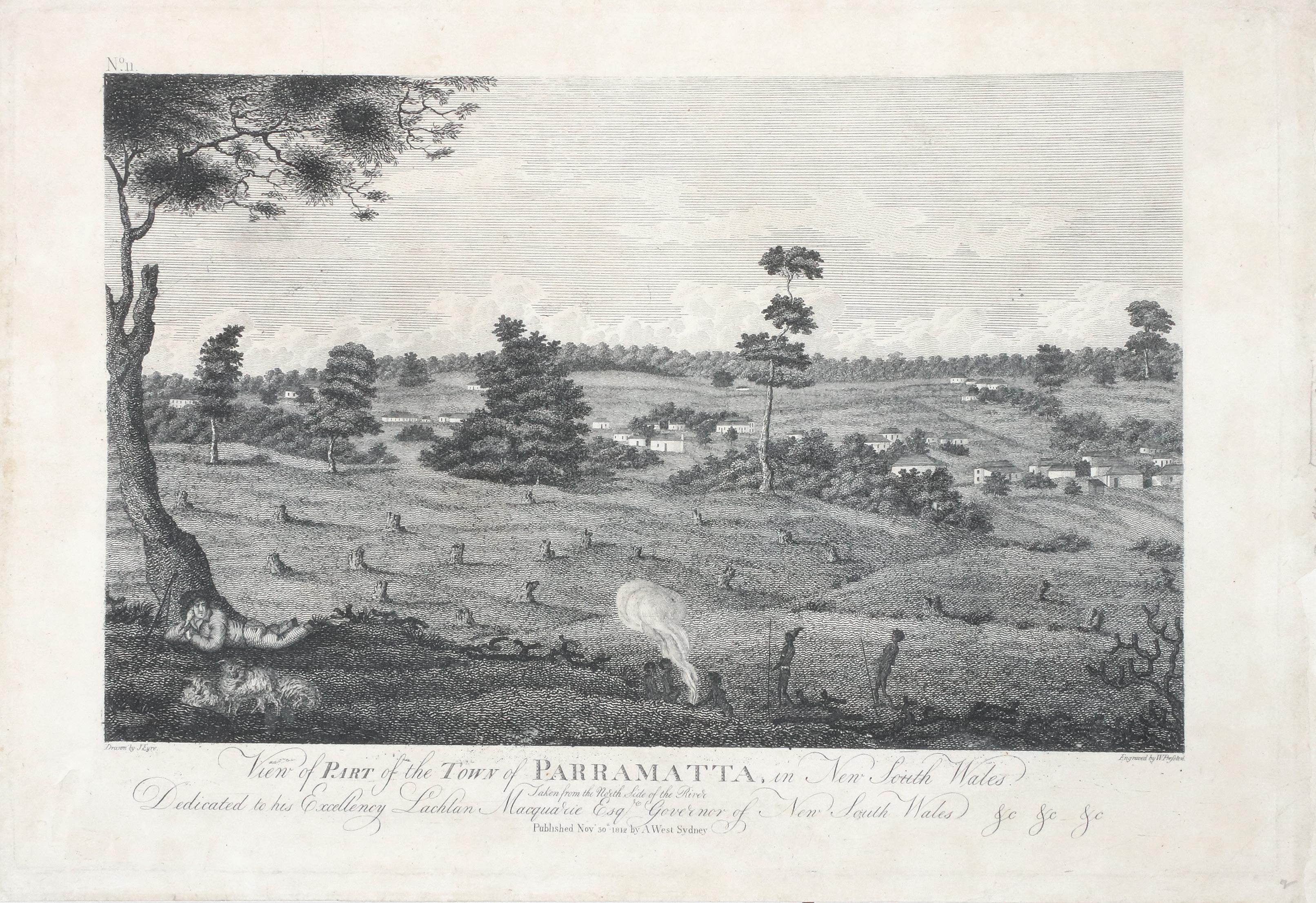
47. WEST, Absalom, publisher. A native camp in Cockle Bay, New South Wales, with a View of Parramatta River. Taken from Dawes's Point…. $48,000 [4504652 at hordern.com]
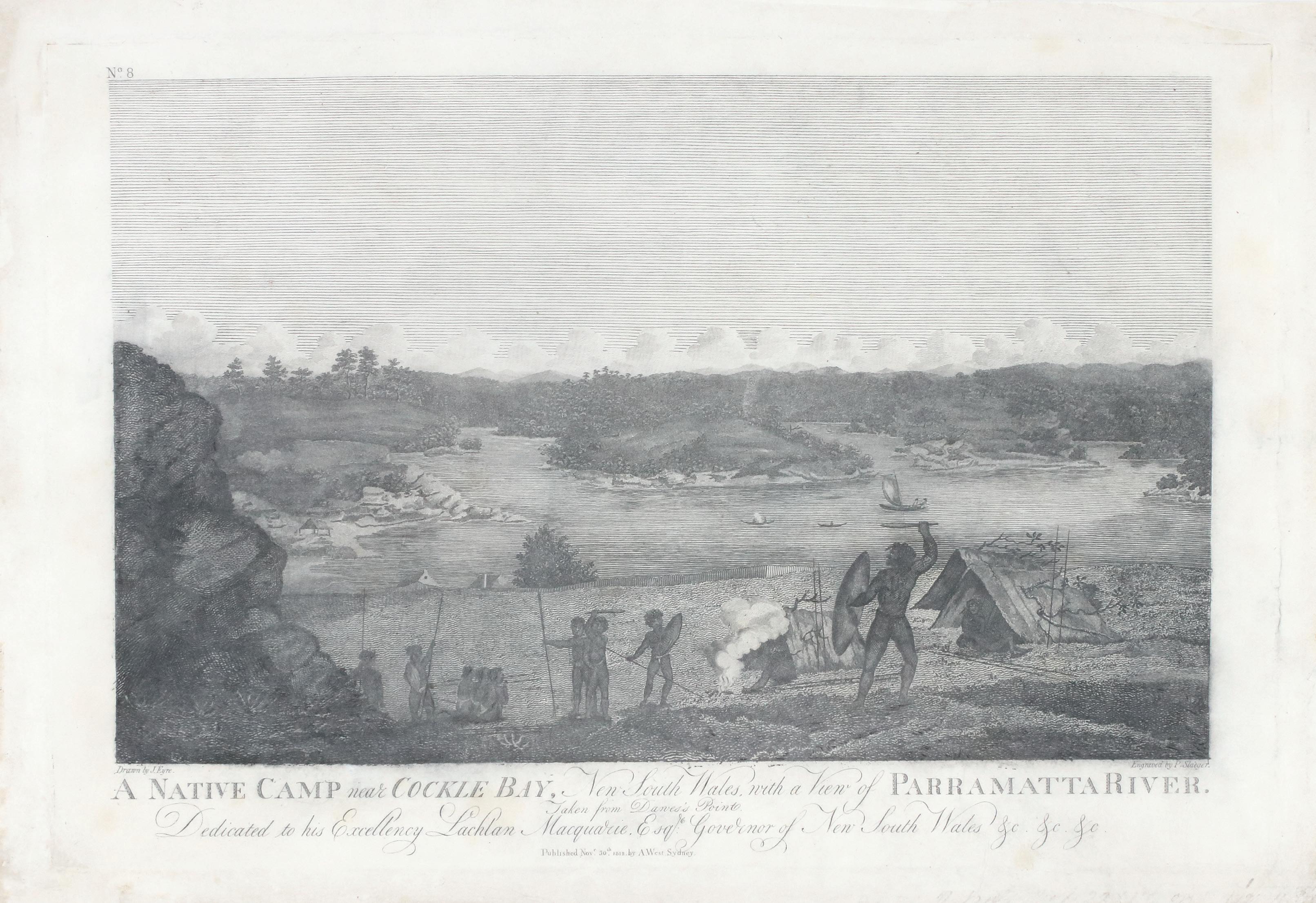
HORDERN HOUSE hordern.com
48. WESTMACOTT, Captain Robert Marsh. Blow-Hole (Kiana Illawarra). Drawn from nature by Capt. Westmacott. On stone by W. Spreat.
Handcoloured lithograph, 225 x 170 mm. Exeter, W.Spreat, 1848.
A fine view by Westmacott, “drawn from nature” from his Sketches in Australia: “The Blow Hole is situated in Illawarra, upon a rocky point of land running into the sea, this forms the south side of the Harbour of the Township of Kiama. The singular appearance the Blow Hole presents, is caused by the swell of the Pacific rushing into an apperture from the cliff, running a considerable distance inland; the entrance of the opening is on the both sides beautifully supported by basaltic columns. The great force with which the water enters, causes it to ex pend itself against the side of a basin or crater at the extremity; a magnificent column of white foam is thrown up, sometimes to the height of one hundred and fifty feet, causing a noise that may be heard several miles from the spot”.

$650 [4202793 at hordern.com] see description and illustrations at
Picturing New South Wales
HORDERN HOUSE hordern.com
49. WESTMACOTT, Captain Robert Marsh. The Jigama River near Pambula. Handcoloured lithograph, 165 x 260 mm. Exeter, W.Spreat, circa 1840.
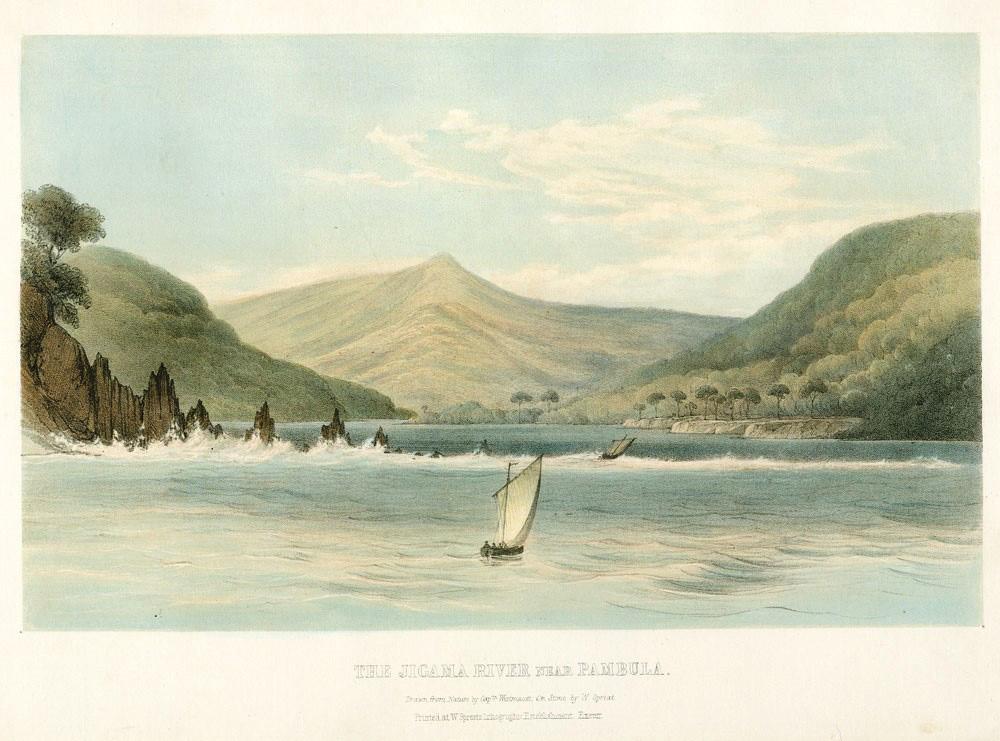
Jigama River is now known as Pambula River is on the South Coast of New South Wales. The river was first explored by Europeans in 1797 when George Bass put in to escape from a gale on his way down the coast. Bass noted the beauty of the place in his diary.The village devel oped to serve the early settlers in the locality. Some of the earliest European settlers, the Imlay brothers, pioneers and landowners in the district established their station on the banks of the Pambula River in the 1830s. Their land was bought by the Walker brothers in the early 1840s.
This is a fine Australian view from a series of tinted lithographic plates (published as Sketches in Australia) of Sydney and Harbour areas, mountains and southern coastal regions of New South Wales, “drawn from nature” by Captain Westmacott.
Little is known of Westmacott, except that he was a captain in the 4th (King’s Own) Regiment, and that he spent the early 1840s in Australia. His published views represent the last in the chronology of work by military or naval officers in the romantic landscape tradition of the early 19th century.
$650 [4202790 at hordern.com] see description and illustrations at
Picturing New South Wales
HORDERN HOUSE hordern.com
50. WESTMACOTT, Captain Robert Marsh. Road from Emu Plains, over the Blue Mountains… Hand coloured lithograph; fine, 131x200mm, mounted. Exeter, W. Spreats Lithographic Establishment, 1848. An attractive,original coloured lithographic view showing the first stone bridge built in New South Wales.
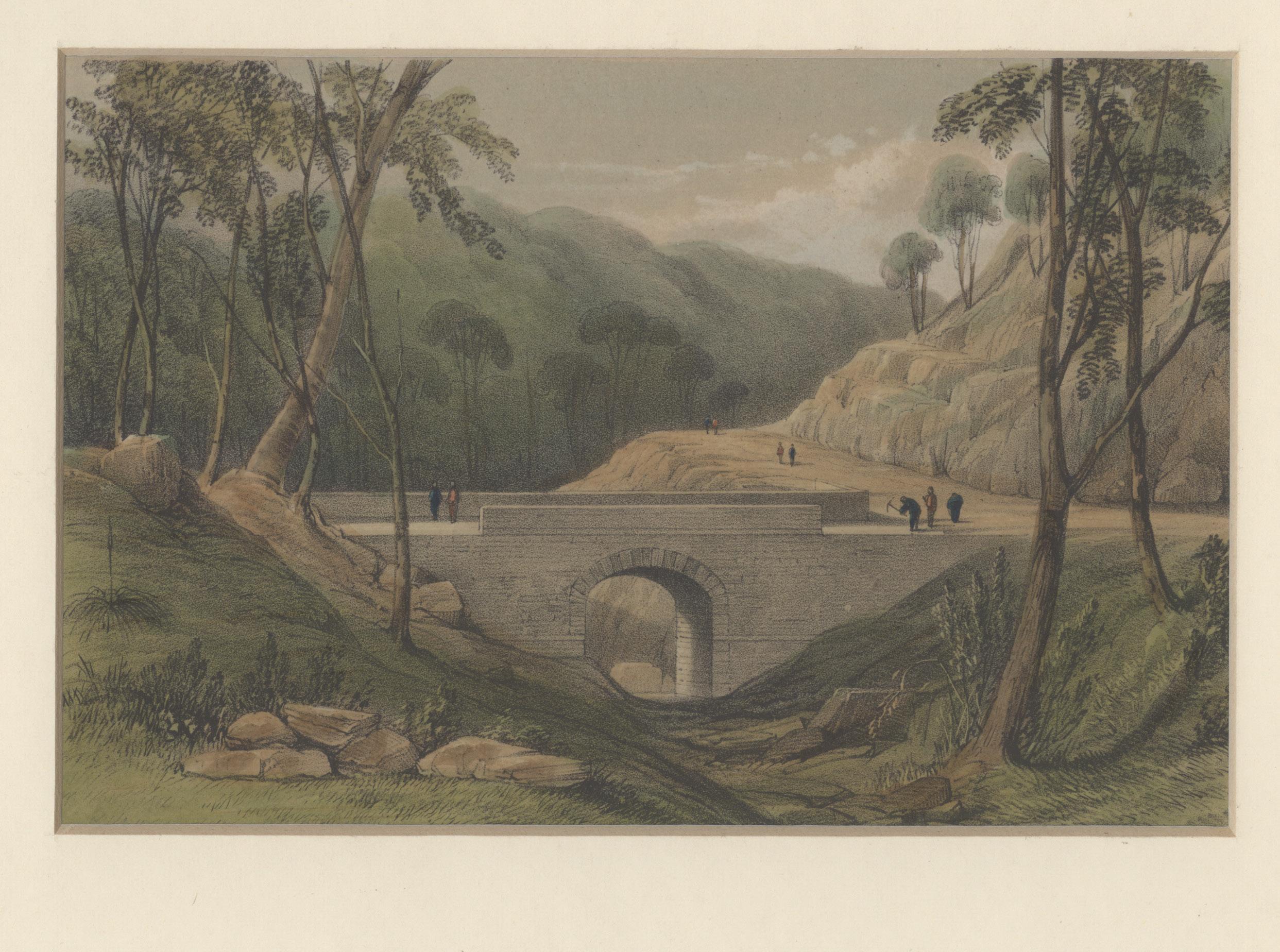
Prior to European settlement, what is now Emu Plains was on the border of the Western Sydney-based Darug people and the Southern Highlands-based Gandangara people, whose land extended into the Blue Mountains. The first British explorers to visit the area surveyed Emu Plains in 1790 and named it Emu Island after emus they sighted on the land and in the mistaken belief that the land was actually on an island in the Nepean River. It was first referred to by its current name by Governor Lachlan Macquarie in 1814 when William Cox started building his road over the Blue Mountains from there.
Captain Westmacott published Sketches in Australia in 1848 and like many of the military officers stationed in colonial New South Wales he was a competent draughtsman producing this lithograph and other images of Sydney and its environs.
$1250 [1600751 at hordern.com] see description and illustrations at
Picturing New South Wales
HORDERN HOUSE hordern.com
51. YOUNG, John Henry. Sunset, Darling Harbor.
Original watercolour on artist’s watercolour board, 240 mm. x 530 mm.; signed ‘J.H. Young’, dated ‘24.4.10’ on the verso, framed. Sydney, 1910.
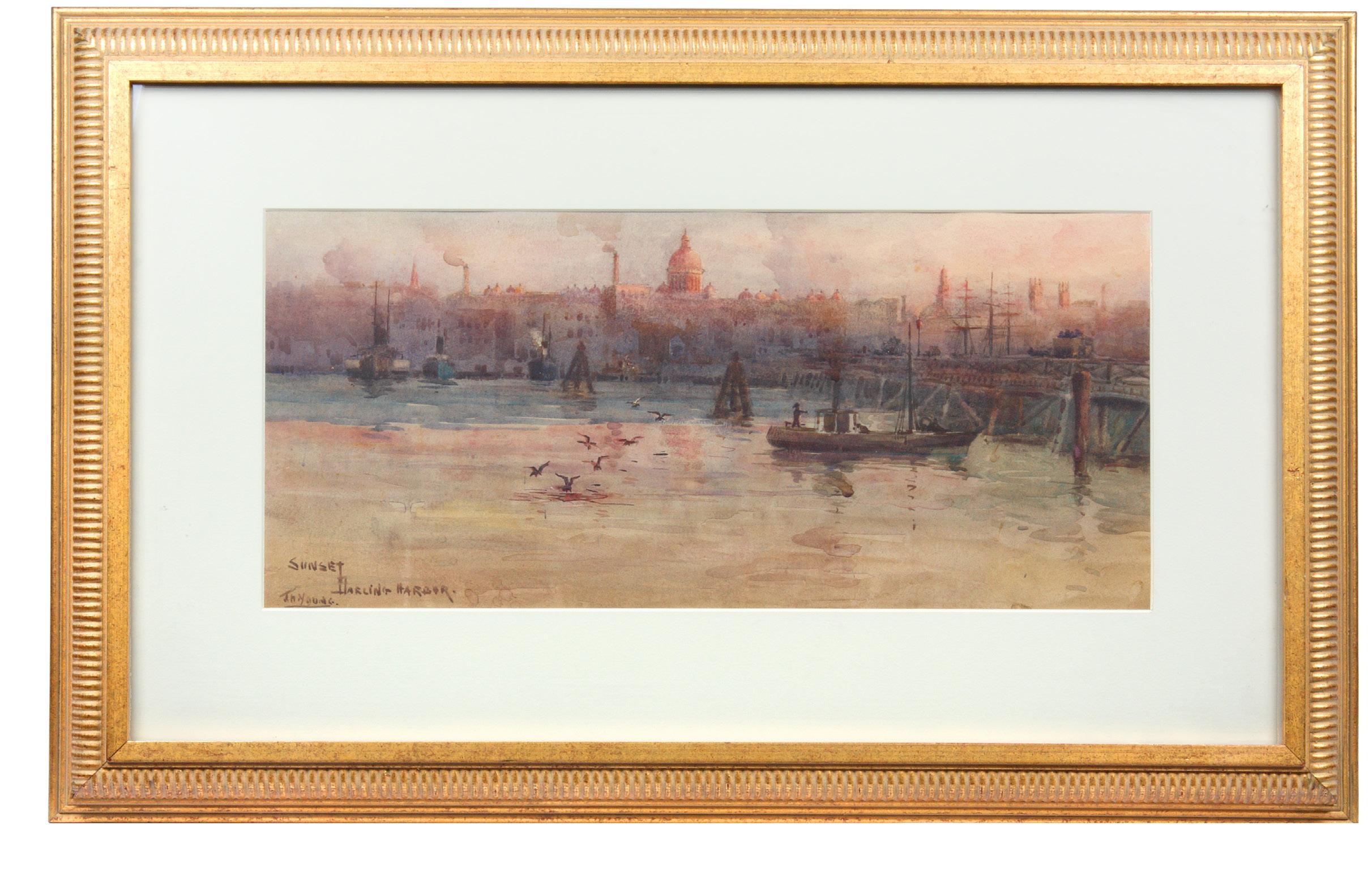
A fine watercolour of Darling Harbour, by well-regarded turn-of-the-century Sydney artist John Henry Young. This atmospheric watercolour, imbued with the pink light of early evening, shows a most attractive view of the burgeoning metropolis of Sydney seen across the waters of Darling Harbour. The domes of the newly-completed Queen Victoria Building (finished in 1898), the Town Hall and the spire of St. Andrew’s Cathedral are visible on the skyline, as are a number of smoke stacks, which give a clear sense of the industrialisation of inner Sydney at the time. Pyrmont Bridge is to the right of the scene with passengers traversing it in two horse-drawn omnibuses.
The watercolour provides an interesting documentary record of shipping traffic in this busy part of the harbour around the turn of the century: a tall-masted sailing ship is moored upstream of the bridge, and two small steamers and a larger twin masted paddle-steamer are moored on the far side of the harbour, downstream of the bridge. In the foreground is a small commercial steam-powered craft, with a sailor standing at the stern. Two large timber pylons are seen at the centre of the picture.
John Henry Young exhibited at the Art Society of New South Wales (of which he was a committee member) from 1895 to 1910, and is known to have been still active in 1935. He is best known for his watercolours of maritime subjects both in and around Sydney Harbour, however he also painted overseas including the Mediterranean, France and Egypt.
Along with Basil Burdett, Young established the Macquarie Galleries in 1925. His main contri bution to Australian art was his unstinting support, both financial and moral, for a wide range of artists, especially women.
Provenance: From the collection of the artist’s grandson - Sherbourne, UK. Shows signs of first mounting on back as being done in UK, with direc tions for ‘Redwood Frame as last’, dated 21.4.10, marked no. 4.
$5500 [2711231 at hordern.com]
see description and illustrations at
Picturing New South Wales
2/255 Riley Street Surry Hills Sydney, NSW 2010 Australia (+61) 02 9356 4411 www.hordern.com rare@hordern.com
